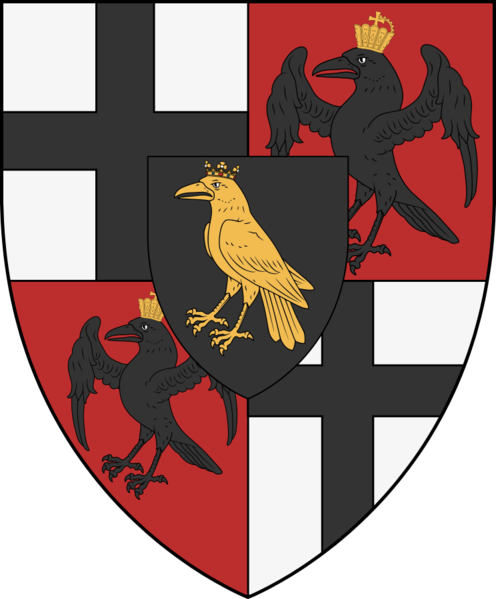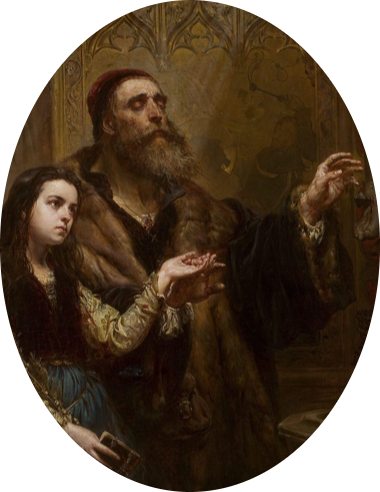WIP 🙂
figures
Royal Treasurers
The ROYAL TREASURER (New Marian: ARANYIAZ), or officially known as the ROYAL TREASURER AND LORD BURSARS OF THE CROWN, is the ranking member who holds the authority over upholding the Kingdom’s economic affairs, second only to the Sovereign of Haense, and leads the realm as one of the Heads of Economics and first aide to the Crown in all economic manners. Historically, the Royal Treasurer is entrusted in the management of the Kingdom’s royal treasury and the Kingdom’s income index. The most likely candidate for designation has typically been from Haense’s most qualified economic scholar based on reputation. In most cases, those born of nobility have held the seat although there have been cases where members of the gentry have also held the seat.
Historically, since the establishment of the position, most treasurers are attributed with extensive economic backgrounds prior to their ascension to Treasurership. The reconstruction and growth of the Kingdom’s law structure took place extensively from 329 E.S. to 360 E.S. under Sir Edvard Amador’s tenure. There has been a trend since the first Royal Treasurer where the vast majority of Royal Treasurers have belonged to certain nobilital families, from Kovachev, Amador to Barclay. As of 384 E.S., two office holders have died in office (IV and V), four under political obligations to the Crown (I, II, III and VII) and one due to sustained sickness/illness (VI).
The office holder is distinguished by the scale of Treasurer Richard Steinkachel, carried only by the Royal Treasurer, and traditionally holds symbolic command over the transferal of power from treasurer to another. The reign of King Andrew III saw the creation of the office of the Royal Treasurer which has since been occupied by five different officeholders stretching across the reigns of five Haeseni monarchs. Prior to such creation, the Sovereign of Haense upheld the Kingdom’s treasury; although at times such command was entrusted to a trusted Haeseni economist. Notable office holders include Richard Steinkachel (I) and Sir Edvard Amador (IV).
Richard Steinkachel
1728 A.H. – 1746 A.H. | 281 E.S. – 299 E.S.
Rickard Steinkachel (Common: Richard Steinkachel), was appointed as the first Royal Treasurer by King Andrew III following the creation of the Royal Treasurer position in 1728. Steinkachel was regarded as a close confidant of King Andrew III which resulted in his designation to such position. Prior to his elevation to Royal Treasurer, Steinkachel worked as an advisor for the County of Nenzing to Lord Leopold Stafyr.
Following the creation of the Royal Treasurer position, King Andrew III tasked Treasurer Steinkachel to manage the Kingdom’s Royal Treasury and form proper record-keeping of the national gross income of the Kingdom. Steinkachel was instrumental in strengthening the Kingdom’s economy following the War of the Two Emperors and throughout the Ruberni conflict. Most notably, he is attributed with the establishment of trade routes between the Kingdom of Hanseti-Ruska to neighboring nations the likes of; Kaedrin, Curon and Oren.
Throughout Steinkachel’s tenure as Royal Treasurer, he slashed the Kingdom’s national debt in half prior to the emergence into the Rubern War, establishment of trade routes along with the penning of proper record-keeping of the Kingdom’s royal treasury.
Hana Kovachev
Hannah Kovachev
1750 A.H. – 1758 A.H. | 303 E.S. – 311 E.S.
Hana Kovachev (Common: Hannah Kovacs), was appointed as the second Royal Treasurer of Haense by King Andrew IV following the vacancy left by the government being involved in the Rubern War and the aftermath thereafter. Prior to her elevation to Royal Treasurer, Kovachev served as an economic advisor to Baron Jan Kovachev of Kvasz.
Promptly after the reprisal of the position of Royal Treasurer by King Andrew IV, she was tasked to reform the proper record of the Kingdom’s treasury department that had once existed underneath Treasurer Steinkachel. Through exhausted effort, she allowed Haense to become more economically independent from their neighboring allies to the west and east.
Throughout Kovachev’s tenure as Royal Treasurer, she helped maintain the Kingdom’s royal treasury both effectively and efficiently. Before long, Treasurer Kovachev willingly resigned to allow Seneschal Rennard Amador to succeed her as the Crown’s economic beneficiary.
Sir Rennard Amador
1758 A.H. – 1776 A.H. | 311 E.S. – 329 E.S.
Sir Rennard Amador (Common: Sir Rennard Amador), was appointed as the third Royal Treasurer by King Sigmund II following the resignation of Seneschal Kovachev in 1758. Prior to his elevation to Royal Treasurer, Amador served the Kingdom of Hanseti-Ruska as the fourteenth High Seneschal where he ‘aided in the rampant increase in the Kingdom’s infrastructure construction [and later income].’
Underneath the leadership of former Seneschal Amador, he aided in the construction of the Haeseni Fur Trading Company which contributed significantly in the number of goods not only produced but traded in the Kingdom. From 1758 to 1776, the Kingdom saw stringent relief on taxation which saw the Kingdom’s economy flourish as it dove in and out of war.
Throughout Amador’s tenure as Royal Treasurer, he helped maintain the Kingdom’s royal treasury both in a proficient and productive manner. As he turned towards retirement, Treasurer Amador willingly resigned to allow his brother, Seneschal Edvard Amador to succeed him as the Crown’s economic beneficiary.
Sir Edward Amador
1776 A.H. – 1807 A.H. | 329 E.S. – 360 E.S.
Sir Edvard Amador (Common: Sir Edward Amador), was appointed as the fourth Royal Treasurer by King Sigmund II following the resignation of Treasurer Amador in 1776. Prior to his elevation to Royal Treasurer, Amador served as a Steward in the Royal city of New Reza with his brother Rennard Amador.
Underneath the leadership of Treasurer Amador, he aided in the construction of the Kingdom’s first-ever national bank; the Golden Crow Bank, skillfully managed the Kingdom’s Royal Treasury and reworked the taxation system to better tend to both the middle and lower classes of the Haeseni populace. From 1776 to 1807, the Kingdom saw massive economic growth. Most notably of which has allowed the Kingdom post-independence to flourish and expand its borders to both the east and west.
Throughout Amador’s tenure as Royal Treasurer, he aided in maintaining the Kingdom’s royal treasury both in a delicate and high-yielding manner. As he grew older, Treasurer Amador resigned and later passed at the age of seventy-five. Weeks later, King Heinrik II would later appoint aspiring economist Brandt Barclay to succeed him as the Crown’s economic beneficiary.
Sir Brandon Barclay
1807 A.H. – 1815 A.H. | 360 E.S. – 368 E.S.
Ser Brandt Barclay (Common: Sir Brandon Barclay), was appointed as the fifth Royal Treasurer by King Josef I following the resignation of Treasurer Amador in 1807. Prior to his elevation as Royal Treasurer, Barclay served as an Auditor under the Office of the Treasurer. In addition to such, he oversaw the management of a number of market stalls for House Barclay.
Directly succeeding Treasurer Amador’s retirement from the Aulic government, Brandt was assigned to the position by King Josef I in 1807. Throughout the eight years that Brandt served as the fifth Royal Treasurer of Haense, he completely revitalized the Office of the Royal Treasurer, which saw the creation of a number of jobs the likes of; Kastellan of Resources, Kastellan of Trade and Kastellan of Labour. Early on in his tenure as Royal Treasurer, Brandt saw reason to dissolve the long standing Haense Fur Trading Company and to replace it by establishing the Black Crow Company.
Following the sudden death of King Josef I, Brandt continued his mission to lower taxes which heavily strengthened the Haeseni economy thricefold comparatively to the last two decades. Despite not occupying the office for long like his predecessors (Amador & Steinkachel), Barclay wasted no time in creating tradition as he organized and managed the first-ever Market Fair; notably of which saw people travel from all reaches of Almaris to attend. Prior to his death in 1815, Brandt by popular demand established the Shqiptar Guild (Workers Guild) which continues to be actively used and managed by the Office of the Royal Treasurer. Ultimately, the Office of the Royal Treasurer would remain vacant for several years until such a time where the young economics scholar Erich Barclay assumed the office in 1819 to succeed Treasurer Barclay.
Eric Barclay, 5th Duke of Reinmar
1819 A.H. – 1829 A.H. | 372 E.S. – 382 E.S.
Biography in Progress.
Otho Barbanov, Prince of Barbanov-Morovar
1831 A.H. – 1840 A.H. | 384 E.S. – 393 E.S.
Biography in Progress.
High Seneschals
The HIGH SENESCHALS (New Marian: STYUARD), or officially known as the HIGH SENESCHAL AND LORD STEWARD OF THE CROWN, is the ranking member who holds the authority over overseeing the administration of the Kingdom’s land, land record-keeping and infrastructure, second only to the Sovereign of Haense, and leads the realm as one of the Heads of Land and first aide to the Crown in all interior administration manners. Historically, the High Seneschal is entrusted in the governance of the Kingdom’s land, infrastructure and upholding the Kingdom’s census reports. The most likely candidate for designation has typically been from Haense’s most qualified steward based on reputation. In most cases, those born of nobility have held the seat although there have been cases where members of the gentry have also held the seat.
Historically, since the establishment of the position, most seneschals are attributed with an extensive stewardy background prior to their ascension to Seneschalship. The reconstruction and growth of the Kingdom’s interior administration took place extensively from 266 E.S. to 285 E.S. under Lord Siegmund Corbish’s second tenure. There has been a trend since the first High Seneschal where the vast majority of High Justiciars have belonged to certain nobilital families, from Colborn, Ludovar, Barclay, Kortrevich to Amador. As of 361 E.S., three office holders have died in office (I, II and XIII), three officeholder has been removed after scandal (V, VII and XVIII) and thirteen under political obligations to the Crown (III, IV, VI, VIII, IX, X, XI, XII, XIV, XV, XVI, XVII and XIX).
The office holder is distinguished by the quill of Seneschal Siegmund Corbish, carried only by the High Seneschal, and traditionally holds symbolic value when there is a transferal of power from one Seneschal to another.. The reign of King Marus I saw the creation of the office of the High Seneschal which has since been occupied by seventeen different officeholders stretching across the reigns of sixteen Haeseni monarchs. Prior to such creation, the Sovereign of Haense upheld the Kingdom’s interior administration; although at times such command was entrusted to a senior Steward. Notable office holders include Ser Anton Kynsgeston (II), Edvard Barbanov (III), Emma Ludovar (VI), Siegmund Corbish (VII and X), Ser Roderick Kortrevich (XII) and Sir Edvard Amador (XV).
Cassian Colborn
1601 A.H. – 1605 A.H. | 154 E.S. – 158 E.S.
Kazzian Colborn (Common: Cassian Colborn), was appointed as the first High Seneschal(f. Lord Steward) by King Marus I following the creation of the High Seneschal position in 1601. Colborn was regarded as a close confidant of King Marus I which resulted in his designation to such position. For the four years that Kassian was High Seneschal, he penned the Royal City of St. Karlsburg’s first ever infrastructure ledger and penned the first ever documentation of the Kingdom’s lands and holdings.
Prior to the dismantlement of St. Karlsburg, he was instrumental in strengthening the Kingdom’s economy through uncommon measures. He is most notably recognized for his efforts in reducing the Kingdom’s national debt before the emergence into the Great Northern War.
Sir Anthony Kyngeston
1614 A.H. – 1642 A.H. | 167 E.S. – 195 E.S.
Ser Anton Kyngeston (Common: Sir Anthony Kyngeston), was appointed as the second High Seneschal(f. Lord Steward) by King Stefan I following the vacancy left by the government being set in-exile. Kyngeston served as High Seneschal following the Kingdom’s return from exile. He worked tirelessly in reforming a functional economy for the Haeseni populace as they lived in the encampment of Alban.
After the elevation of King Stefan I to the throne, the Aulic Government at the time saw the necessity to organize the Kingdom’s infrastructure and land functionaries; which led to the reprisal of the High Seneschal position in 1614. Under the reigns of King Stefan I, King Otto I and King Otto II, Ser Anton Kynsgeston reinstalled systems that were set-in-place by the former administration of Seneschal Colborn and quickly led the Kingdom to bolstering heights of economic resurgence.
Edward Barbanov, Prince of Barbanov, Margrave of Chanik
1663 A.H. – 1681 A.H. | 216 E.S. – 234 E.S.
Prinzen Edvard Barbanov (Common: Prince Edward Barbanov), was appointed as the third High Seneschal(f. Lord Steward) by King Karl II following the vacancy left by King Otto II’s decision to dissolve the then superfluous Aulic position. With the work set by former Seneschal Kyngeston, Seneschal Barbanov expanded with his own efforts by penning the Kingdom’s first public housing ledger.
While administering within the Royal City of Markev, Seneschal Barbanov is attributed with increasing levels of migration to the Kingdom of Hanseti-Ruska. Despite being a staunch centralist in the eyes of the public, efforts such as reducing tax costs were instrumental in boasting the Kingdom’s economy under the reigns of King Karl II, King Franz II and King Sigmar I.
Ser Matyas Colborn
Sir Mathew Colborn
1681 A.H. – 1683 A.H. | 234 E.S. – 235 E.S
Ser Matyas Colborn (Common: Sir Matthew Colborn), was appointed as the fourth High Seneschal(f. Lord Steward) by King Sigmar I following the resignation of Seneschal Barbanov in 1681. Colborn served as the second member of the House of Colborn to occupy the Aulic position of High Seneschal.
After monumental efforts made by former Seneschal Barbanov, Colborn simply maintained such efforts by keeping proper record keeping of the Royal City of Markev’s infrastructure ledger and proper documentation of the Kingdom’s allocated lands and holdings to several nobilital families at the time such as; Baruch, Kovachev, Ruthern and Vanir.
Brog Doon
1683 A.H. | 236E.S.
Brog Dhoon (Common: Brog Doon), was appointed as the fifth High Seneschal by King Robert I following the resignation of Seneschal Colborn in 1682. Dhoon had previously served as the Royal City of Markev’s Grand Maer and it was believed that he was the most qualified for the position of High Seneschal until the Kingdom learned of his disappearance just a few short months following his appointment. The remaining year of 1683, the Kingdom of Hanseti-Ruska did not have a High Seneschal until Princess Emma Ludovar was elevated to such position.
Emma Ludovar, Princess of Barbanov, Duchess of Ulgaard
1683 A.H. – 1690 A.H. | 236 E.S. – 243 E.S
Prinzenas Emma Ludovar (Common: Princess Amelia Ludovar), was appointed as the sixth High Seneschal by King Robert I following the removal of Seneschal Dhoon in 1683. Ludovar served as High Seneschal following the sudden disappearance of former Seneschal Brog Dhoon. Prior to her elevation to High Seneschal, Ludovar studied under her father, who oversaw the ‘domestic arrangements for the royal household, other residents of the palace, and the citizenry of the city;’.
After the sudden death of King Sigmar I, her close confidant King Robert I was elevated to the throne which subsequently saw her elevation to the position of High Seneschal. Throughout the youthful years of King Robert’s reign, Seneschal Ludovar further expanded on the efforts made by Seneschals (III, IV) by notably translating the Kingdom’s documentation relating to infrastructure to include the linguistics of New Marian and High Imperial.
Seneschal Ludovar was a significant Haeseni figure as the Kingdom’s most modern form of infrastructure management and consecutive documentation is inspired directly by her seven years in office.
Sigismund Corbish
1690 A.H. – 1701 A.H. | 243 E.S. – 254 E.S.
Siegmund Corbish (Common: Sigismund Corbish), was appointed as the seventh High Seneschal by King Robert I following the resignation of Seneschal Ludovar in 1690. Corbish continued his long service to the Kingdom of Hanseti-Ruska by serving as High Seneschal for part of King Robert’s long reign.
Following the resignation of Seneschal Ludovar, Corbish was tasked with not only maintaining management of the Kingdom’s interior affairs but to discover new ways to better spend the Kingdom’s Royal Treasury funds. Through efforts aided by other Aulic Councillors, Corbish succeeded beyond unfavorable expectations and led the populace of the Royal City of Markev to greater heights of economic independence by emphasising efforts to spend into local mines and farms as opposed to outsourcing seen in previous administrations.
Alexandra Alimar, Grand Princess of Muldav
1701 A.H. – 1711 A.H. | 254 E.S. – 264 E.S
Prinzenas Aleksandra Alimar (Common: Princess Alexandra Alimar), was appointed as the eighth High Seneschal by King Robert I following the removal of Seneschal Corbish in 1701. Alimar served as High Seneschal during the waning years of King Robert’s reign and the youthful years of King Marus II’s reign. Prior to her elevation to High Seneschal, Alimar was born as the Grand Princess of Muldav and distinguished herself as one of the dualfounders of the House of Alimar.
Throughout the entirety of Seneschal Alimar’s tenure as High Seneschal, she worked in a very stringent manner oftentimes regarded as a vile woman (later dubbed; The Vile). After succeeding an unforeseen success of Seneschal Corbish, both King Robert I and King Marus II tasked her with the continued management of the Royal Cities of Markev and Reza’s interior affairs. Through measures now regarded as controversial she maintained the management of the Kingdom’s infrastructure for over a decade which resulted in the increased strength of the Kingdom’s economy from 1701 to 1711.
Loren Suffolk
1771 A.H. – 1713 A.H. | 264 E.S. – 266 E.S.
Lorin Suffolk (Common: Loren Suffolk), was appointed as the ninth High Seneschal by King Marus II following the resignation of Seneschal Alimar in 1711. After the resignation of Seneschal Alimar, a youthful Suffolk by the name of Lorin took the mantle for a short three years. Underneath his leadership, the Royal City of Reza’s infrastructure ledger was reworked to a version similar to the one found under Seneschal Ludovar (VI).
Despite only being in the Aulic position for two short years, the Royal City of Reza continued to see prospering heights of economic growth as the former Atlas natives migrated to the continent of Arcas.
Sigismund Corbish
1713 A.H. – 1732 A.H. | 266 E.S. – 285 E.S
Siegmund Corbish (Common: Sigismund Corbish), was appointed as the tenth High Seneschal by King Marus II following the resignation of Seneschal Suffolk in 1713. Corbish served as High Seneschal for a second time during both the War of the Two Emperors and the Troubles. Prior to his elevation to High Seneschal, Corbish served the Kingdom of Hanseti-Ruska as a loyal servant in the Kingdom’s Royal Army.
Throughout the second tenure of Seneschal Corbish, the Kingdom entered into a period of war stretching from 1715 to 1732. Seneschal Corbish is most notably attributed with the successful allocation of the Kingdom’s funds in places of National Defense. Through his own directive (which was often questioned), he built a moat around the Royal city to aid in the defense of the Kingdom of Hanseti-Ruska.
In addition to his efforts during war-time, Seneschal Corbish maintained his practice he held twenty-three years prior and successfully managed the city’s interior affairs by; establishing the Royal Library, establishing the Old Crow and establishing the first-ever Affordable Public Housing sector.
Rhegal Barclay
1732 A.H. – 1740 A.H. | 285 E.S. – 293 E.S.
Rhygal Barclay (Common: Rhegal Barclay), was appointed as the eleventh High Seneschal by King Andrik III following the resignation of Seneschal Corbish in 1732. Barclay served as High Seneschal for eight years under the reign of King Andrew III and the administration of the royal cities of Reza and New Reza.
Underneath the leadership of Seneschal Barclay, the Kingdom saw the penning of the Royal City of New Reza’s infrastructure ledger. Despite the migration to a newly constructed capital city, the Kingdom of Hanseti-Ruska struggled immensely during these times in obtaining a reliable income by way of property taxes. Through the efforts set by Seneschal Barclay, the Kingdom saw a slight elevation in overall migration to the city but, it was the strained relationship between the Holy Orenian Empire and the Kingdom of Hanseti-Ruska that was a causal effect for such struggles underneath the waning years of King Andrik III’s reign.
Sir Rodrick Kortrevich née Daine
1740 A.H. – 1748 A.H. | 293 E.S. – 301 E.S.
Ser Roderick Kortrevich (Common: Sir Rodrick Kortrevich), was appointed as the twelfth High Seneschal by King Andrik III following the resignation of Seneschal Barclay in 1740. Prior to his elevation to High Seneschal, Kortrevich served the Kingdom of Hanseti-Ruska militarily as a Captain in the Royal Army and later as a Marian Knight of the Marian Retinue.
Just following the resignation of Seneschal Barclay, Ser Roderick Kortrevich saw necessity to reintroduce Affordable Public Housing to the lower classes of Haeseni, through his efforts in both the Duma and petitions made in the upper Aulic Government; his success reigned true and the Royal City of New Reza saw increased levels of inhabitancy. In addition to such efforts, Seneschal Kortrevich also emphasized public spending towards the surrounding lands of Haeseni; seeing necessity to beautify the war-scarred landscape.
Despite only serving for eight years as High Seneschal, Seneschal Kortrevich served under the reigns of both King Andrik III and King Andrik IV and further aided in the renewed growth of the Kingdom’s infrastructure both inside and out of the city walls.
Petyr Bisk
Peter Bisk
1748 A.H. – 1752 A.H. | 301 E.S. – 305 E.S.
Petyr Bisk (Common: Peter Bisk), was appointed as the thirteenth High Seneschal by King Andrik IV following the resignation of Seneschal Kortrevich in 1748. Prior to his elevation to High Seneschal, Bisk served the Kingdom of Hanseti-Ruska loyally as an enlisted member of the Brotherhood of Saint Karl.
Leading into the start of his tenure, Petyr Bisk oftentimes lobbied for the introduction of reduced taxes through the Royal Duma of Haense. Just prior to Seneschal Kortrevich’s resignation, he recommended for Bisk to succeed him in hopes to see the Kingdom’s taxes be reduced far more than previous administrations (II, IV, VII, VIII). Through exhausted efforts made by Seneschal Bisk, the Kingdom of Hanseti-Ruska’s taxes were reduced five-percent; which would ultimately lead future Amador Seneschals to greatly expand the city of New Reza.
All throughout Bisk’s tenure, he maintained usual interior affairs by keeping proper record keeping of the Royal City of New Reza’s infrastructure ledger and proper documentation of the Kingdom’s allocated lands and holdings to several nobilital families at the time such as; Baruch, Barclay, Kortrevich and Vyronov.
Sir Reinnard Amador
1752 A.H. – 1758 A.H. | 305 E.S. – 311 E.S.
Sir Rennard Amador (Common: Sir Reinnard Amador), was appointed as the fourteenth High Seneschal by King Andrik IV following the death of Seneschal Bisk in 1752. Prior to his elevation to High Seneschal, Amador ‘distinguished himself as a steward of the city, and built up the Haeseni Fur Trading Company, which grew exponentially under Rennard’s management and contributed significantly to the goods produced and traded in the Kingdom.’
During the six year tenure of Seneschal Amador, the Kingdom of Haense’s royal city of New Reza was expanded to aid in construction of more infrastructure both residential and commercial. Despite only being in the Aulic position of High Seneschal for six years, Amador personally aided in the rampant increase in the Kingdom’s infrastructure construction and later income.
Sir Edward Amador
1758 A.H. – 1776 A.H. | 311 E.S. – 329 E.S.
Sir Edvard Amador (Common: Sir Edward Amador), was appointed as the fifteenth High Seneschal by King Sigmund II following the resignation of Seneschal Amador in 1758. Prior to his elevation to High Seneschal, Amador served the Kingdom of Hanseti-Ruska as a steward with his brother, Rennard Amador.
Just succeeding his brother’s resignation, the Aulic Government saw reason to befit Edvard Amador with the position to continue the successful efforts set-by the Amadors management of the Kingdom’s interior affairs. Through efforts by expanding the city walls of New Reza, massive taxation relief, district zoning and the beautification of the cities surrounding walls (inspired by Seneschal Kortrevich), the Kingdom of Hanseti-Ruska’s interior affairs was managed far better than administrations of yore.
Underneath the reigns of King Sigmund II and King Josef I, Seneschal Amador also reinstated former institutions the likes of the; Royal Library and Public Housing (both of which had been dormant since Seneschal Bisk’s tenure).
Mio Mackensen
1776 A.H. – 1800 A.H. | 329 E.S. – 353 E.S.
Myo Mackensen (Common: Mio Mackensen), was appointed as the sixteenth High Seneschal by King Josef I following the resignation of Seneschal Amador in 1776. Prior to his elevation to High Seneschal, Myo Mackensen served the Kingdom of Hanseti-Ruska loyally as a Commandant of both the Brotherhood of St. Karl and the Royal Army of Haense.
Throughout the long tenure of Seneschal Mackensen, the Kingdom of Hanseti-Ruska saw increased construction of roads from the capital city to the vassals of Haense, massive taxation relief, emphasis on zoning districts and the introduction of methods to predict the purchases of infrastructure in the Royal cities of New Reza and Karosgrad.
After monumental efforts made by former Seneschal Amador, Mackensen simply maintained such efforts by keeping proper record keeping of the Royal City of New Reza’s infrastructure ledger, the penning of the Royal City of Karosgrad’s infracture ledger a proper documentation and of the Kingdom’s allocated lands and holdings to several nobilital families at the time such as; Baruch, Barclay, Vanir and Ruthern.
Ingrid Barclay née Amador
1800 A.H. – 1824 A.H. | 353 E.S. – 377 E.S.
Iyngrid Barclay (Common: Ingrid Barclay), was appointed as the seventeenth High Seneschal by King Josef I following the resignation of Seneschal Mackensen in 1800. Prior to her elevation as the second female High Seneschal, Iyngrid Barclay worked underneath the former High Seneschal as a steward for a number of years.
Throughout the lengthy tenure of Seneschal Barclay, the Kingdom of Hanseti-Ruska’s housing sector continued to prosper. Notably, the second female High Seneschal saw sufficient reason to completely revise the steward documents, which continues to prevent stewards from stealing money from the Crown. In addition to such revisions, she also saw reason to keep a better record of the stewards employed, including information such as; what year they were hired, what year they retired, etcetera. (All of which can be found at the Town Hall)
Towards the later half of long tenure, she worked alongside people like, Grand Maer Franz Barbanov in further allowing guilds a proper district to work from alongwith setting criterias for these guilds to adhere to. Additionally to such efforts, Seneschal Barclay is also attributed with beginning the process of job interviews prior to hiring stewards; an idea that never came to fruition under previous administrations. All in all, as the first female High Seneschal of Haense, serving simultaneously as the longest female Seneschal and third-longest individual (XVII- 20yrs) to occupy the Aulic Office (II- 28yrs, XVI- 24yrs), Iyngrid Barclay continued to expand the Haeseni housing markets by allowing for the reduction of taxes and limiting the number of restrictions placed on homeowners within the city limits.
Alexandra Ludovart
1824 A.H. – 1829 A.H. | 377 E.S. – 382 E.S.
Aleksandra Ludovar (Common: Alexandra Ludovar), was appointed as the eighteenth High Seneschal by King Heinrik II following the resignation of Seneschal Barclay in 1824. Prior to her elevation as the third female High Seneschal, Aleksandra Ludovar worked underneath the Office of the High Seneschal as a steward for a number of years, while also serving as a soldier of the Brotherhood of Saint Karl.
After succeeding the lengthy tenure of Iyngrid Barclay, Aleksandra Ludovar worked in concert with Royal Treasurer Erich Barclay during what is now referred to as the Great Recession of the 1820s. Unbeknownst to the greater public of Hanseti-Ruska and that of the Aulic Government, Aleksandra Ludovar failed to manage the Haeseni housing sector properly; which resulted in a vast number of properties left vacant due to the exceedingly high property taxes.
While serving as High Seneschal for just five years, Aleksandra was often seen absent from her duties and responsibilities for the Aulic position she occupied. It is rumored that she was marked either tardy or completely absent from several Aulic Council meetings. Nearing the last year of her stint as High Seneschal, former Lord Palatine, Maric var Ruthern called upon the congregation of Duma in 1829 to file a vote of no-confidence against her. To no one’s surprise, a near unanimous vote called for her swift removal. Later that month, a decree from the Nikirala bearing the signature of King Heinrik II, would officially declare His Majesty’s decision to dismiss Seneschal Ludovar from the position of High Seneschal.
Fionn Castaway
1829 A.H. – 1840 A.H. | 382 E.S. – 393 E.S.
Biography in Progress .
Ser Reinhardt Barclay
Sir Reinhard Barclay
1840 A.H. – Present | 393 E.S. – Present
Current Incumbent.
Lord Marshals
The LORD MARSHAL (New Marian: HAUCKOMANDANT), or officially known as the LORD MARSHAL AND LORD COMMANDER OF THE CROWN, is the commanding member who holds the authority over the Kingdom’s military orders, second only to the Sovereign of Haense, and leads the realm as the of Head of Defense of the Haeseni realm. Historically, the Lord Marshal is entrusted in the safeguard of the Kingdom and the Sovereign’s subjects. The most likely candidate for designation has typically been from Haense’s military order which hosts the Kingdom’s soldiers. In most cases, those born of nobility have held the seat although there have been cases where members of the gentry have also held the seat.
Historically, since the establishment of the position, most marshals are attributed with extensive military backgrounds prior to their ascension to Marshalship. The reconstruction and growth of the Kingdom’s military structure took place extensively from 298 E.S. to 329 E.S. under Lord Erwin Barclay’s tenure, which still sees present usage to the present day. There has been a trend since the first Lord Marshal where the vast majority of Lord Marshals have belonged to certain nobilital families, from Kovachev, Vanir, Othaman, Ruthern, Stafyr, Kortrevich to Barclay. As of 329 E.S., three officeholders have died in office (IV, IX and X), one removed from battle or injuries sustained in battle (VII), seven officeholders have been removed after resignation (III, VI, VIII, XI, XIV, XV and XVI), two under political obligations to the Crown (I and XII) and three by way of Crown removal (II, V and XIII).
The office holder is distinguished by the blade of Saint Karl of Haense, carried only by the Lord Marshal, and traditionally holds symbolic command over military ceremonies. The reign of King Petyr I saw the creation of the office of the Lord Marshal which has since been occupied by fifteen different officeholders stretching across the reigns of seventeen Haeseni monarchs. Prior to such creation, the Sovereign of Haense held sole command over the Kingdom’s military orders; although at times such command was entrusted to a senior military officer. Notable office holders include Lord Jan Kovachev (I), Lord Rhys Ruthern (VIII), Lord Otto Kortrevich (XI), Lord Wilheim Barclay (XIII) and Lord Erwin Barclay (XIV).
Rory Othaman
Rory Othaman, Arzbischop var Joren
Rory Rothaman, Archbishop of Jorenus
1598 A.H. – 1604 A.H. | 151 E.S. – 157 E.S.
Rory Othaman (Common: Roy Othaman) served as Lord Marshal following the sacking of the Margraviate of Vasiland. During his service, he was tasked with the command of the Haeseni Royal Army amidst the growing tensions of the House of Brawm and the increasing deterioration of diplomatic relations with the Kingdom of Courland. In 153, the Archbishop mobilized the army and marched with King Marus I toward Carnatia to suppress the short-lived Brawm revolt at the Siege of Houndsden.
He continued to serve and is remembered for his support to declare war on the Kingdom of Courland in what became the Great Northern War. He was instrumental in the Battle of Elba and the Siege of Vasiland before resigning from his post following the surrender by King Marus I. Rory Othaman was subsequently elected High Pontiff, taking the name Owyn II. He utilized his position to critique the Kingdom of Courland and their schismatic relations. He died two years into his pontificate at the hands of undead outside of the City of Aleksandria.
Ser Cullen Valerin
Sir Cullen Valerin
Sir Cullen Valerin
1611 A.H. – 1622 A.H. | 164 E.S. – 175 E.S
Ser Cullen Valerin (Common: Sir Cullen Valerin) was a close confidant of King Stefan I and served as an important figure in the revitalization of the Haeseni forces following the restoration of the House of Barbanov. A frequent face in Alban, Ser Cullen was renowned for his equally amiable demeanor and martial ferocity in battle, winning various skirmishes in the service of the Kingdom of Haense and the Holy Orenian Empire. Ser Cullen presided over increased recruitment levels for the Haeseni royal forces, repelling incursions by pagan armies in the east, and his rapid fortification of Alban’s borders following the reconstruction of the Haense capital.
Viktor Kovachev
Viktor Kovachev, 10th Herzen van Karnatiya
Victor Kovacs, 10th Duke of Carnatia
1622 A.H. – 1647 A.H. | 175 E.S. – 200 E.S.
Vikor Kovachev (Common: Victor Kovacs) served as Lord Marshal under four kings, following a storied career of martial service within his family name. A legitimized son, Viktor Kovachev began his career as a knight in the Golden Gryphon in the service of King Marus I until his elevation to the highest ranks of the Haeseni military. His term was defined by many crises including the usurpation of the Sixth Empire, the rise of the Pertinaxi Empire, the War of the Beards, and the suppression of heathenry in the Third Crusade, and the increasing activity of banditry.
Later in his career, he engaged in frequent clashes with the Aulic Government. Lord Viktor Kovachev grew unfavorably with the Crown, and after disagreeing toward military reforms promulgated by Prince Robert Sigismund’s Palatinial Government, Viktor was dismissed from his duties.
Ser Geralt Rauen
Sir Geralt Rauen
Sir Gerald Rough
1647 A.H. – 1655 A.H. | 200 E.S. – 208 E.S
Ser Geralt Rauen (Common: Sir Gerald Rough) was a Haeseni knight and Lord Marshal during the entirety of the reign of King Otto III. His service was defined by the Czena Conflict between the Kingdom of Renatus-Marna and the entente between the Kingdom of Haense, Duchy of Curon, and the Kingdom of Santegia. He commanded various battles, collaborating closely with Czena allies. Geralt is remembered for his leadership during the Second Battle of Stallion’s Hill where the Czena forces won a decisive victory against the Renatian terrorists. After Otto III’s passing from the plague, he retired and began to explore the Yatl wastelands, conceiving many illegitimate children who created villages in his name. Some of his descendants followed in his path, notably the Marian knight Viktor Rauen.
Arnorien van Elendil
Arnorien van Elendil
Harren of Elendil
1655 A.H. – 1670 A.H. | 208 E.S. – 223 E.S.
Arnorien (Common: Harren) served as Lord Marshal during the pivotal years following a contentious conflict during the Czena Conflict. Inheriting the military and diplomatic tensions between the Kingdom of Renatus-Marna and the Kingdom of Haense, Aeternius was tasked with mobilizing the Haeseni forces in the newly created United Southern Alliance composed Kingdom of Haense, Duchy of Curon, the Silver State of Haelun’or, the Snow Elves, and the Frostbeard Clan.
Rhys var Ruthern
Rhys var Ruthern, Herzen van Vidaus
Reece Ruthern, Duke of Vidaus
1670 A.H. – 1687 A.H. | 223 E.S. – 240 E.S
Rhys var Ruthern (Common: Reece Ruthern) served during the institution of the first Brotherhood of Saint Karl, a devotional army in the namesake of Saint Karl Barbanov. His term was marked as an important revitalization of the Haeseni martial sector. He became greatly involved during the southern invasions of the Vaeyl. The Brotherhood saw increasing levels of recruitment. By the late 1670s, he became subject to much scrutiny after reports by the Hansetian Republican Army exposed significant levels of demonic activity within the officer ranks of the Brotherhood. His cooperation with Lord Palatine Robert Sigismund in expelling the demons in the army allowed a return to normalcy.
Lord Ruthern retired from military service and opted to enter a life of politics. After a short campaign for the Imperial Parliament, he succeeded Robert Sigismund as the leader of the Imperial Common Civic Party.
Henrik Kovachev
Henrik II Kovachev, 15th Herzen of Carnatia
Henry Kovacs, 15th Duke of Carnatia
1687 A.H. – 1696 A.H. | 240 E.S. – 249 E.S.
Henrik II Kovachev (Common: Henry Kovacs) served during the institution of the first Haeseni Royal Army. His service was defined by the Third Atlas Coalition War and the waning years of the Vaeyl War. He commanded various battles, collaborating closely with Imperial allies. Henrik is remembered for his leadership during the Siege of Kal’Tarak, where the Allied forces won a decisive victory against the Anti-Empire coalition.
Lord Kovachev died at the hands of Vaeyl insurgents which led Lord Stafyr to succession of the vacant position.
Sergei Stafyr
Sergei Stafyr, 2nd Bezkomit van Grauspin
Sergius Stafyr, 2nd Viscount of Grauspin
1696 A.H. – 1706 A.H. | 249 E.S. – 259 E.S
Sergei Stafyr (Common: Sergius Stafyr) was a Haeseni lord and Lord Marshal under the reign of King Robert I. His term was marked as a significant decline of the Haeseni martial sector during the waning years of King Robert I’s reign. After succeeding Lord Henrik’s successful term, Lord Sergei unfortunately presided over decreased recruitment efforts for the Haeseni royal forces.
Over time the Haeseni populace grew dissatisfied with Lord Stafyr’s lacking tenure as Lord Marshal, which shortly followed in his assassination by unknown assailants.
Otto Kortrevich
Otto Kortrevich, 1st Bossir van Koravia
Otho Kortrevic, 1st Baron of Koravia
1706 A.H. – 1724 A.H. | 259 E.S. – 277 E.S.
Otho Kortrevich (Common: Otto Kortrevic) was appointed by King Robert I. Regarded as a close confidant of Robert’s. Lord Kortrevich was instrumental during the War of the Two Emperors, seeing through the dissolution of the defunct first iteration of the Haeseni Royal Army and establishing the second iteration of the Haeseni Royal Army in its place. He victoriously commanded various battles, collaborating closely with Orenian forces; most notably his command at the Battle of Upper Rodenberg. During his administration, the Royal Army saw increasing levels of recruitment which aided in the further defense of the Kingdom.
As a co-signer to the Treaty of Reza, he later helped transition the Kingdom of Hanseti-Ruska to a new militant administration. Through his directive, he designated Marian Knights, Ser Wilheim Barclay and Ser Thomas Raleigh to the posts of Commandant. After the years succeeding the war against the Imperium Renatum, Lord Otto aided in the later establishment of the second iteration of the Order of the Brotherhood of Saint Karl before willingly resigning as Lord Marshal. As a result he assumed the role of Commandant, and continued his service through to 299 E.S., formally retiring from military service at the age of sixty-eight.
Prinz Otto Alimar
Prinz Otto Alimar, 3rd Hauchprinzen van Muldav
Prince Otho Alimar, 3rd Grand Prince of Muldav
1724 A.H. – 1728 A.H. | 277 E.S. – 281 E.S
Otho Alimar (Common: Otto Alimar) was appointed by King Andrik III, following the resignation of Lord Otto Kortrevich. After the ravaging War of the Two Emperors, Prince Otto was tasked with the establishment of the second iteration of the Brotherhood of Saint Karl which saw the removal of nobilital levies from being raised and the return to the ways of old set by Rhys var Ruthern in the first iteration of the Brotherhood of Saint Karl. The Grand Prince of Muldav willingly resigned from the position which led to the transition of Wilheim Barclay to the position of Lord Marshal.
William Barclay
William Barclay, 1st Bossir van Freising
William Barclay, 1st Baron of Freising
1728 A.H. – 1745 A.H. | 281 E.S. – 298 E.S.
Wilheim Barclay (Common: William Barclay) was a Haeseni knight, Haeseni lord and Lord Marshal under the reign of King Andrik III. He served during the institution of the second iteration of the Brotherhood of Saint Karl. His term was marked as an important continuation of the Haeseni martial sector throughout both The Three-Month War and The Troubles. He victoriously commanded various battles, collaborating closely with both the Kaedreni and Curonia; most notably his command at the Battle of Upper Rodenberg. During his administration, the Brotherhood continued to see increasing levels of recruitment which aided in the further defense of the Kingdom.
Later in his career, he engaged in frequent clashes with the Aulic Government. Lord Barclay grew unfavorably with the Crown, and after disagreeing toward military reforms promulgated by Lord Markus Kortrevich’s Palatinial Government, Wilheim was dismissed from his duties and succeeded by his eldest son, Lieutenant Erwin Barclay.
Erwin Barclay
Erwin Barclay, 1st Herzen van Reinmar
Erwin Barclay, 1st Duke of Reinmar
1745 A.H. – 1776 A.H. | 298 E.S. – 329 E.S
Erwin Barclay (Common: Erwin Barclay) succeeded his father as Lord Marshal in a career spanning over three decades, the longest serving occupant to date. His term is marked by the reformation of the Second Brotherhood of Saint Karl into the Haeseni Royal Army, significant growth of the military recruitment levels, and the development of military training toward a national cultural standard of Haeseni militarism and Biharism. Lord Barclay led the military through many conflicts, commanding forces during the progression of the Rubern War, eventually aiding the annexation of the Ruberni land lost during the War of Two Emperors. During the interwar periods, Lord Barclay was instrumental in rebuffing highwaymen within the kingdom’s border with a robust plan of military fortifications and patrols.
During the invasion of the Scyfling forces, Erwin presided over one of the deadliest conflicts in Haeseni history, suffering many losses as the progression of the Scyflings proceeded over eight years. Lord Barclay was honored for his service in the realm, being inducted into the first Class of 322 E.S. into the Order of Queen Maya and Lily, recognized as a Hauckossar for his services to the country by King Sigmund II. Highly regarded by his contemporaries in the Aulic Government and by his successors, Erwin is recognized as one of the most consequential figures on the life of Haeseni military history and culture.
Manfred Barclay, 2nd Herzen van Reinmar
Manfred Barclay, 2nd Duke of Reinmar
1776 A.H. – 1805 A.H. | 329 E.S. – 358 E.S.
Manfred Barclay (Common: Manfred Barclay) succeeded his father as the Lord Marshal in a career spanning nearly three decades, the second-longest serving occupant to date. His term was marked as a continuation of the Haeseni martial sector throughout both the years following Haense’s breach into independence and the Inferi Invasion. He triumphantly commanded various battles, collaborating closely with both the Norlanders and the Urugani. During the latter half of his administration, the Royal Army saw increasing levels of recruitment which aided in the further defense of the Kingdom.
Later in his career, Lord Barclay opted to resign from his post to allow for his eldest son, Friedrich Barclay to assume the mantle of Marshalship. Lord Barclay was honored for his service in the realm, being inducted into the fifth Class of 358 E.S. into the Order of Queen Maya and Lily, recognized as a Valtakossar for his services to the country by Prince-Regent Heinrik.
Freidrich Barclay
Freidrich Barclay, 3rd Herzen van Reinmar
Fredrick Barclay, 3rd Duke of Reinmar
1805 A.H. – 1825 A.H. | 358 E.S. – 378 E.S
Friedrich Barclay (Common: Fredrick Barclay) succeeded his father as the Lord Marshal in a career spanning twenty-years. His portion of the Barclay Marshalship consisted of the continuation of the Haeseni martial sector throughout the waning years of King Josef’s reign and the blossoming of King Heinrik’s reign. As is the case with every Lord Marshal, conflict is bound to be inflicted upon the Hauckomandant (Common: Lord Marshal), the fourth Barclay Marshal was no exception to conflict. He fastidiously maintained order amongst the Haeseni Royal Army throughout the Red Diet, during all of King Heinrik II’s assasination attempts and the savage Rimetroll War, which lasted a number of years.
All in all, throughout the two-decade long career of Friedrich Barclay as the sixteenth Lord Marshal of Haense, the Kingdom of Hanseti-Ruska remained safeguarded by the Haeseni Royal Army which was headed by the Ducal Barclay patriarch. In the latter part of his tenure, Marshal Barclay reformed the Haeseni Royal Army by installing the long-awaited troupe system. In addition to such reforms, he also aided in penning the reforms of the 3rd iteration of the Brotherhood of Saint Karl, which would see enactment under his successor Lord Marshal Ailred Ruthern.
Ailred Ruthern
Ailred Ruthern, Herzen van Vidaus
Ailred Ruthern, Duke of Vidaus
1825 A.H. – Present | 378 E.S. – Present
Current Incumbent.
Palatines
The LORD PALATINE, or officially known as the LORD PALATINE AND CHANCELLOR OF THE CROWN, is the penultimate authority of the realm, second only to the Sovereign of Haense, and leads the realm as Head of Government and first aide to the sovereign at his/her behest. Historically, the Lord Palatines have held massive authority, rivalling that of some modern monarchs, and traditionally operate as one of the crown’s most loyal and zeal subjects in accomplishing its interests and goals. The most likely candidate for selection has typically been from Haense’s sprawling nobility and gentry, though there have been cases where clergy (VIII) and even commoners (XIII) have held the seat.
Historically, early in Haense’s history there have been more palatines with military backgrounds while later palatines have been pulled from more bureaucratic and aristocratic backgrounds. The growth of complexity of law, rulership, and provincial divides is part of this, as well as Haense’s gradual shift between the late 100s and the early 200s from a military monarch in the likes of Petyr I and the Gold Corps to a more bureaucratic and tradition-based society. Another interesting trend is the apparent rise and fall of certain families through their palatinate history, from the Kovachevs, Bihars, Rutherns, and to the more recent Stafyrs.
The office holder is distinguished by the golden bulava of the State and Army, carried only by the Sovereign, and traditionally holds command over both domestic and militaristic affairs (with exception). Since the era of Robert Bihar’s second term in 233, the Lord Palatines have also been traditionally active in Duma politics and actively supporting the legislature through its chambers. Notable office holders include Ser Rickard Barrow (I), Prince Karl-Sigmar (II), Ser Lukas Vanir (IV), Prince Henrik Bihar (VII), Prince Robert Bihar (XI and XV), Ser Matyas Colborn (XIV), Leopold Stafyr, Count of Nenzing (XVIII), and Lerald Vyronov, Duke of Carnatia (XX).
As of 363, three officeholders have died in office (XIX , XXV and XXVI), four from battle or injuries sustained in battle (IV, VI, VII and XVIII), and one from illness though under mysterious circumstances (XX). Four officeholders have resigned under political pressure (II, III, IX and XVI), one officeholder has been imprisoned, tried, and executed for treason (XIII), thirteen officeholders have resigned due to personal interest, health, or age (I, V, X, XI, XIV, XV, XVII, XXI, XXII, XXIII, XXIV, XXVII, XXVIII), while one officeholder was elevated to greater office, with one High Pontiff (VIII) and one Koeng of Haense (XII).
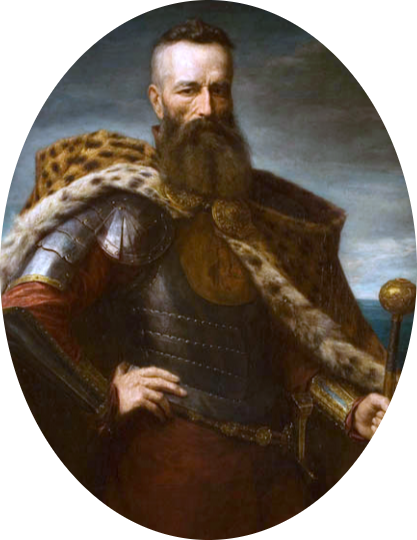
Peter of Siguine Barbanov
1578 A.H. – 1582 A.H. | 131 E.S. – 135 E.S.
Sir Rickard Barrow (Common: Richard Barrow), renowned general and administrator, served as Lord Palatine throughout the entirety of Petyr I’s reign (131-135) and beginning two of Andrik II’s (135-137). Previously a veteran of Petyr’s condottiere Gold Corps and Haense’s inaugural victory in the Riga War, Rickard was immensely popular among the soldiers and nobility alike, and frequently participated in both the affairs of state and military. He commanded the Haeseni forces directly during the burgeoning skirmishes of the newborn realm, who still struggled with rebellious banditry which refused to recognize the united monarchy, and scored countless victories over the divided marauders.
His power and grip on national affairs grew exponentially, and he effectively controlled the kingdom in the waning years of Petyr’s declining health and the first two years of Andrik’s rule. From his early career in the Gold Corps, Rickard was a patron of the Church of the Canon, sponsoring and supporting numerous pontifical candidates before and during his tenure as palatine, including the future Saint Pontiff Sixtus IV. After surmounting tension between himself and a joint faction of Andrik and his brother Karl-Sigmar (who both desired power of government be returned to the king), as well as his increasing age, Rickard resigned from his post, though he remained a highly influential courtier and a direct participant in the later Deep Cold Uprising of 139, where he directly opposed the king in his attempt at rebellion from the Holy Orenian Empire.
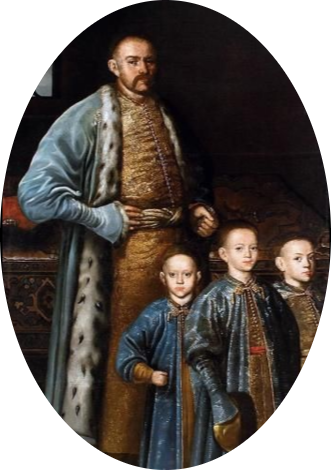
Prinz Karl-Sigmar van Haenz
Prinz Karl-Sigmar van Haenz
Prince Charles-Siguine of Haense
1584 A.H. – 1593 A.H. | 137 E.S. – 146 E.S.
Prince Karl-Sigmar (Common: Charles-Siguine) was a Haeseni prince, the son of King Petyr I, and general who served as Lord Palatine for nine years from the last two years of Andrik II’s reign to the turbulent regency of Marus I. At first, an early supporter of his brother Andrik, he assisted him in his effective coup of former palatine Rickard Barrow and helped consolidate his power both civic and militarily. However, when Andrik II, spurned on by anti-Imperialists from numerous disenfranchised families including the Brawms, launched his Deep Cold Uprising in the wake of Emperor John IV’s death (139), Karl turned against his brother, and supported Rickard in removing Andrik from the throne in the stead of his minor son, Marus.
Karl led the regency for the minority of Marus I, which became a haven of political intrigue and noble infighting between the numerous military families of Haense, each vying for power. The royal capital, which still remained undeveloped till now, was formally built-up under Karl and his regency, and in the wake of the chaotic civil unrest, he consolidated royalist power towards the once central city. Despite his frequent conflicts with the much of the nobility, he was able to bring them to relative peace by the end of his tenure, brought to simmering standstill by his expanded royalist retinues.
His successes, however, were short-lived, as by the end of the regency many of the hyper-Sergeyist nobility, unhappy with his centralist tendencies, steadily gained prestigious positions in court and actively sought to have him removed. They were eventually successful, and in 146 he resigned from office under pressure by the senior nobility only a few weeks after Marus’ accession. He remained active in royalist government affairs, and retained the rank of general until his death in 155.

Heinrik Kovachev
Heinrik Kovachev, 6th Herzen van Karnatiya
Henry Kovacs, 6th Duke of Carnatia
1593 A.H. – 1598 A.H. | 146 E.S. – 151 E.S.
Heinrik Kovachev (Common: Henry Kovacs) was a Haeseni nobleman and the Duke of Carnatia, serving as Lord Palatine after the noble-ousting of Prince Karl-Sigmar in 146. He preferred the management of his own estates to that of the realm, namely being chosen as Lord Palatine as to sait the powerful Kovachev family after the turbulent regency of Prince Karl-Sigmar. For nearly the entirety of his tenure, he performed poorly in his duties as head of government, leaving both the military and treasury in shambles due to his inadequacy. His lack of attention to the affairs of state, the embezzlement of royal funds for his private fiefs, and his boiling tensions with the rival Brawm family led to his eventual dismissal and fall from grace in 151.

Ser Lukas Vanir
Sir Lukas Vanir
Sir Lucas Vanir
1598 A.H. – 1612 A.H. | 151 E.S. – 165 E.S
Sir Lukas Vanir (Common: Lucas Vanir) was a Haeseni noble and statesman who served as Lord Palatine from 151 till Marus I’s death in 164. Lukas was the second son of the late Britannus Vanir and brother to the popular Fiske Vanir the Bloody, veteran and general of the Riga War, who he often found himself in his shadow. Following an impeccable career as maer and bureaucrat during the Johannesburg Refugee Crisis of the 150s, he came to rise quickly amongst the struggling royalists following the collapse of Karl-Sigmar’s government and an eventual candidate as palatine.
A strict centralist, he would spend a majority of his time in office pushing policies that furthered the central government’s authority while slowly revoking the power of the nobility. Lukas proved successful domestically, though militarily the army remained under staunch Sergeyist sympathizers, including former palatine Heinrik Kovachev and his cousin Andrik Kovachev, and rebuffed most efforts of reform. The military therefore remained split two-ways between a royalist sector led by Prince Karl-Sigmar and his eldest son Prince Stefan Bihar and the private armies of the feudal estates, led in weak alliance between the powerful Haeseni clans such as the Kovachevs, Vanirs, Rutherns, and Brawms.
Lukas would lead a successful war against a short rebellion by the Brawm family in 153, and after early victories, his government grew more emboldened against the expansionist Curonians of the Coalition War-era. The divided army, however, proved ineffective as time loomed on, and after a few major losses in the east and west respectively, the royalist government of Marus I fled into exile. Lukas followed the government with, and remained in Mardon till the king’s death and Lukas’ expiration of post, where he followed Stefan to the Second Battle of the Rothswald, succumbing to injuries sustained in the victorious fight

Ser Maverik Madonvik
Sir Maverik Madonvik
Sir Maverick Macdonough
1612 A.H. | 165 E.S
Sir Maverik Madonvik (Common: Maverick Macdonough; Kvenish: Maaveerok Maadonais) was a Haeseni-Kvenoman nobleman who served as Lord Palatine briefly in 164 following the death of Petyr II and the victory of Stefan I at the Second Battle of the Rothswood. He oversaw the Duma of 164 which saw Stefan elected as the King of Haense and the restoration of the Haeseni state, though when the affairs of office soon began to take a toll, he resigned from office in favor of his nephew, Jakob.
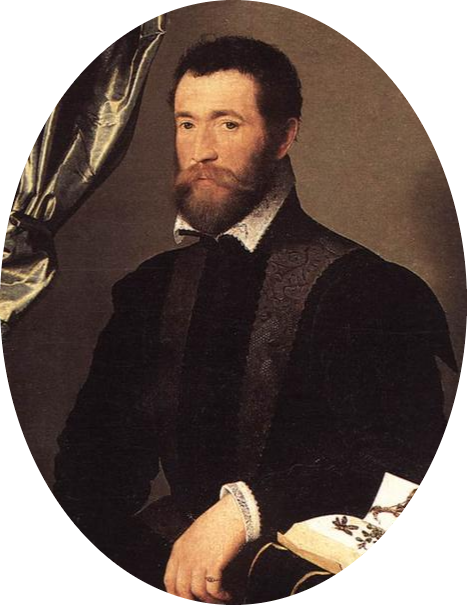
Sir James Macdonough
1612 A.H. – 1613 A.H. | 165 E.S. – 166 E.S
Sir Jakob Madonvik (Common: James Macdonough; Kvenish: Veikko Maadonais) was a Haeseni-Kvenoman nobleman who served as Lord Palatine from 164 to 166 under the restored monarchy of Stefan I. A staunch supporter of the royalist cause, he was a vibrant zealot in the pursuit of restored royal control and powers to the crown, and initially enjoyed some success in extracting taxes and levies from the returning nobility. However, he experienced failures at the start of border skirmishes with the northern realm of Nordenlund in the Second Northern War, where at the Battle of Rostig (166) he was slain in combat following a failed flank of his cavalry.
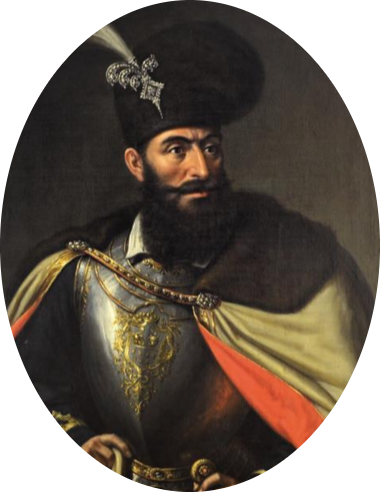
Henry of Bihar, 1st Prince of Bihar
1613 A.H. – 1624 A.H. | 166 E.S. – 177 E.S.
Heinrik Bihar (Common: Henry Bihar) was a Haeseni prince, saint, and nobleman, a descendant of House Barbanov through former palatine Karl-Sigmar, who himself served as Lord Palatine from 166 to the end of the reign of Stefan I at 177. At first appointed for his military talent, where he quickly reversed the fortunes of the Second Northern War with key appointments of famed generals Alessa Grendok and Cullen Valerin. The military of Haeseni swelled after his appointment, and it was under Heinrik that the kingdom adopted Carnatian cavalry tactics for the royal army. He personally commanded numerous offensive raids against the Nordenlund holdings, winning countless battles and skirmishes along the border.
He also grew in fame for his skill in stewardship and administration, where through his work, he oversaw the reconstruction of a vast majority of the salted and destroyed Haeseni farmland and wilderness, raising also villages and forts ransacked or ruined by the occupying Courland forces of the earlier Greyspine Rebellion. By the early 170s, Haense had emerged from a backwater imperial province to one of the richest realms of humanity, in part of Heinrik’s government and taxation reforms. Heinrik also took an active part in Stefan’s plots against the imperial state, commanding the Haeseni forces in the imperial capital both times which led to the deposition of Emperor John V and Lord Protector Robert of Marna. His death in 177 coincided with that of his patron and sovereign Stefan, with some believing it to be an act of espionage from the court of Emperor Peter II.
Heinrik’s philosophy of ruling, known as Biharism, has become the leading ideology of Haense, outlining a basic concept of moral integrity, cultural expectations of honor, hierarchy, tradition, and national values of individualism, self-reliance, and scholarship. It is famously attributed to Heinrik to common Haeseni proverb and state motto, “I would have perished if I had not persisted.” A notable characteristic of Heinrik was his charity, donating mass sums of the profits of his private estates to the local church and sponsoring the study of Haeseni literature. For his patronage of clerical and theological thinking, he was later canonized by the Church of the Canon as Saint Henry of Bihar.
Joseph of Alban, Archbishop of Jorenus
1627 A.H. – 1633 A.H. | 180 E.S. – 186 E.S
Josef Baldemar (Common: Joseph Baldwin) was a Haeseni clergyman and Archbishop of Jorenus who served as Lord Palatine at the beginning of Otto II’s reign. His term saw the combating of poverty among the common citizenry and the codification of laws that promoted decency in public conduct. He continued his predecessor’s moral philosophy of Biharism, if not giving it more religious overtones, though retained a notably pacifist approach much to the annoyance of former rulers Stefan and Otto I’s court. His election as High Pontiff in 186 saw effective resignation from office, though he remained highly prolific in Haeseni political life due to his position
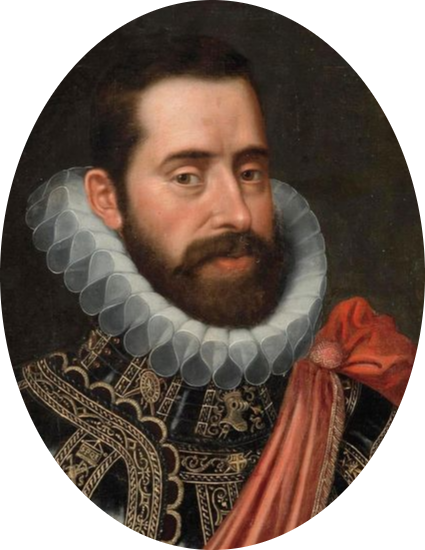
Sir Fordson Kingston
1633 A.H. – 1638 A.H. | 186 E.S. – 191 E.S.
Sir Fordsen Kyngeston (Common: Fordson Kingston) was a Haeseni nobleman and general who served as Palatine during the middle years of Otto II’s reign. A soldier by trade, Fordsen suffered a staggering lose as Vasiland (188) in the War of the Beards, though performed amicably in defending the realm during a second wave of Nordenlund raids of the Third Northern War, defeating them decisively at the Battle of Ayr in 190. The early death of general Alessa Grendok, however, at the Battle of Isinburk in 189 landed a serious blow to both the army and Fordsen, to which the officer corps was unable to recover from for some years.
Fordsen’s preference on military affairs led to numerous conflicts with his brother and fellow councilmen Anton Kyngeston (Common: Anthony Kingston), and a small civil war between the brothers in the streets of the capital known as the War of the Quackers. Following a fight which led to the lethal injury of his brother Anton in 191, Fordsen was dismissed from office by Otto II, later to be tried a few years later under the government of his successor Sergey Kovachev.
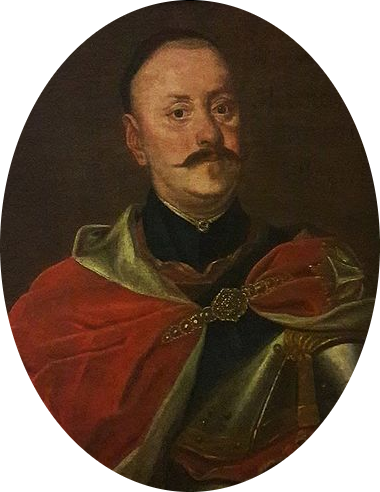
Sergius Kovachev, 9th Duke of Carnatia
1638 A.H. – 1642 A.H. | 191 E.S. – 195 E.S
Sergey Kovachev (Common: Sergius Kovachev) was a Haeseni nobleman, general, and the Duke of Carnatia who served as Lord Palatine for four years between 191 and 195. A veteran of the Greyspine Rebellion under Stefan and a renowned general at the time, he regained losses made militarily under his predecessor though enjoyed an overall unremarkable career as palatine. He resigned after a paltry four years in office and returned to the army, serving as a general for the remainder of his life.

Robert of Bihar, 2nd Prince of Bihar
1642 A.H. – 1655 A.H. | 195 E.S. – 208 E.S.
Prince Robert Bihar (Common: Robert Bihar) was a Haeseni prince and nobleman, father of future monarch Sigmar I, and served as Lord Palatine (for a first term) from the ending years of Otto II and throughout the reign of his son Otto III (195-208). The son of famous palatine Prince Heinrik, he was groomed from his early youth for the position. He promoted policies closely linked to Everardian-Biharism political philosophy, strengthening the overall authority of the Crown and promoting free trade across the kingdom in a series of trade laws and agreements known as the Estermont-Bihar Acts.
As a strict Everardian moralist, Prince Robert signed many landmark bills that strengthened crime and sentencing laws such as the Crime Prevention and Enforcement Act of 199 that instituted punitive measures on drug possession and felonies, as well as increasing the power of the clergy by signing laws to strengthen secular scrutiny on injuries against the faith. Robert took a particular leadership role in the Czena Crisis and the ensuing conflicts between the heartlander states of Renatus and the northern free-states of Curon and Haense.
He led an initial string of victories against Renatus, though after a few staggering defeats in Curon by 208, the local government demanded some form of change. Following Otto III’s death, his main benefactor and patron, in the same year, Robert was forced into resignation by the more militant members of court under the leadership of his brother Prince Franz Bihar.
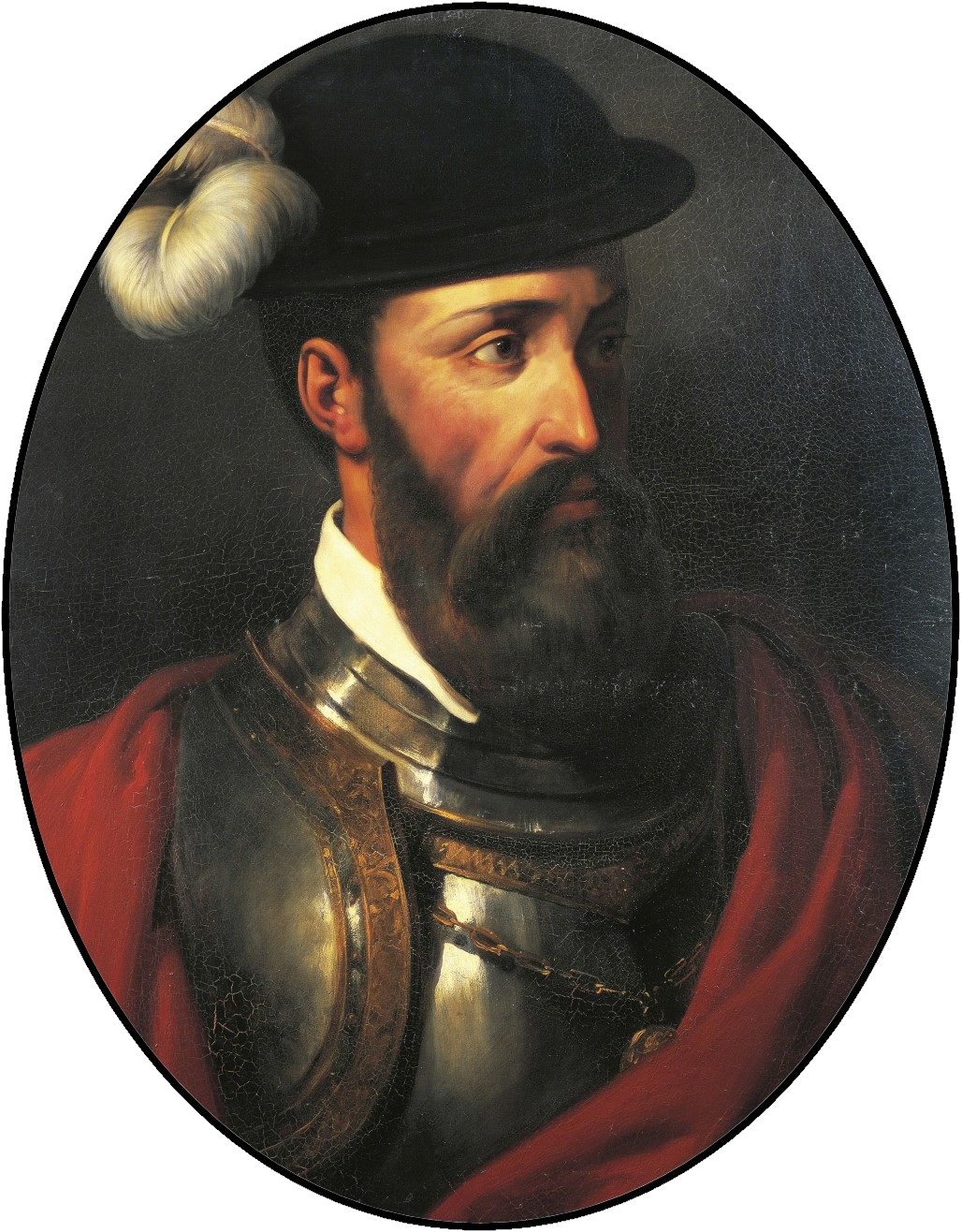
Sir Francis of Bihar
1655 A.H. – 1666 A.H. | 208 E.S. – 219 E.S
Sir Franz of Bihar (Common: Francis Bihar) was a Haeseni nobleman and general who served as Lord Palatine for the entirety of Karl II’s reign till his own elevation as King in 219. Franz was a well-known militarist by the time of his appointment, having been the most vocal critic of his predecessor’s role in the Czena Crisis, and spent most of his career as Lord Palatine commanding Haeseni forces in the ensuing conflicts. Though he gained few victories, he retained a strong support and loyalty from amongst the military, and he kept the invading heartlander estates from invading into the Haeseni basin. Upon Karl’s death and the conflict of control over the throne, Franz led a short, bloodless palace coup with his loyal soldiers, effectively declaring himself monarch.

Charles of the Rothswald
1666 A.H. – 1670 A.H. | 219 E.S. – 223 E.S.
Karl van der Rothsvald (Common: Charles of the Rothswald) was a Haeseni commoner and preacher, who served as Lord Palatine for four years from the death of Franz II till Sigmar I’s arrival into the royal capital. A monk by trade, he rallied the Haeseni peasantry in the wake of Franz II’s death and seized control of the royal capital, where he declared himself Lord Palatine under a council of peasant leaders. While technically ruling under the ascent of Sigmar I, he refused the former to enter the royal capital for four years, ruling the realm de facto by his accord. After Sigmar returned with a sizable force of his own in 223, the soldiery loyal to Karl surrendered without a fight, and he was summarily tried and executed by Sigmar’s court.
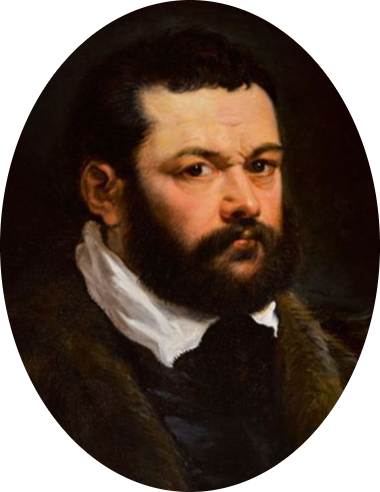
Sir Matthias Colborn
1670 A.H. – 1680 A.H. | 223 E.S. – 233 E.S
Sir Matyas Colborn (Common: Matthias Colborn) was a Haeseni nobleman who served as Lord Palatine for ten years. Matyas’ tenure came to coincide with the end of the Czena Crisis and Haense’s capitulation to the heartlander estates after the disastrous Sigmar’s War and the Battle of Karl’s Hill. A bureaucrat and writer by education, Matyas restored much of the damage caused by the king’s expansionist wars and costly treaties, restoring much of the treasury drained by decades of border wars and skirmishes.
Later, which became a focus of his career, Matyas began a campaign against the growing cultists of the sect known as the Rotsvaeyl, which became a point of public hysteria well into the late 220s and 230s. His efforts reopenned Haense diplomatically both to many of the former heartlander estates as well as the Church of the Canon, who had excommunicated former King Karl II. Matyas performed the duties of a diplomat quite successfully in securing advantageous treaties for the Haeseni state.
Matyas’ greatest achievement and legacy, however, was his first inroads in diplomacy with non-human states, who at the time had very little to no interaction with the dominant human realm of Haense. Towards the end of Sigmar’s reign, who became increasingly distracted from royal affairs, Matyas assumed more and more duties of the state, though he soon grew to resent the added labor of state, and retired fully in 233 in order to fully pursue his interests in the occult. He retired as a historian and author, though remained active somewhat in Duma life till his death.

Prinz Robert van Bihar
Robert var Bihar, 2nd Prizen van Bihar
Robert of Bihar, 2nd Prince of Bihar
1680 A.H. – 1688 A.H. | 233 E.S. – 241 E.S.
Prince Robert of Bihar (Common: Robert Bihar) was a Haeseni prince and nobleman who served as Lord Palatine (for a second term) during the waning years of his son Sigmar’s reign and the beginning years of his grandson Robert’s rule. After staying out of public life for twenty years, he was summoned by his son to serve as Lord Palatine, being the first and only one to serve as Lord Palatine in two non-consecutive terms.
One of the first issues wracking his second term was the growing scandal of demon-worshippers in the Brotherhood of Saint Karl, where he set to work immediately removing and exterminating non-Canonist cultists within the ranks of the military. The following year, with the death of his son, the elder palatine saw the accession of his grandson, Robert I, and devoted much of his time tutoring and mentoring the new king on matters of state. Robert also devoted a good majority of his efforts to foreign relations, and rebuilt diplomacy with Adria and Curon following the disastrous Czena Crisis.
In one of his visits to Adria, the elder Robert was captivated by the new modern industries of the railroad and became the first Lord Palatine and royal to use the railroad. Prince Robert was also involved in Imperial politics and launched his campaign during the beginning days of the first Imperial Senate, though his campaign sustained violent attacks in the streets of Carolustadt by imperial absolutist opposition. After a short imperial career, he resigned from all public offices due to failing health and died in 254 at the age of 81.
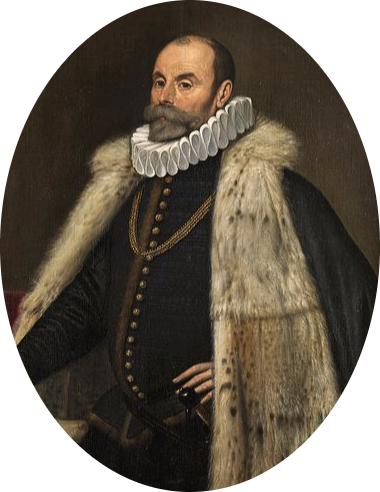
Demetrius Ruthern, 2nd Duke of Vidaus
1688 A.H. – 1707 A.H. | 241 E.S. – 260 E.S.
Demitriyus Ruthern (Common: Demetrius Ruthern) was a Haeseni nobleman who served as Lord Palatine for the majority of Robert I’s reign. Despite his long tenure and reasonably powerful position, the majority of control was vested in Demitriyus’ more competent underlings and secretary, retaining power only through his close friendship and marital ties with the sovereign. He remained out of most states of diplomacy, military, and city stewardship, and as remarked by his contemporary Lerald Gambinoel (Illatian: Larry Gambino), “If he was not the most competent placeholder known to our realm, I do not know who is.”
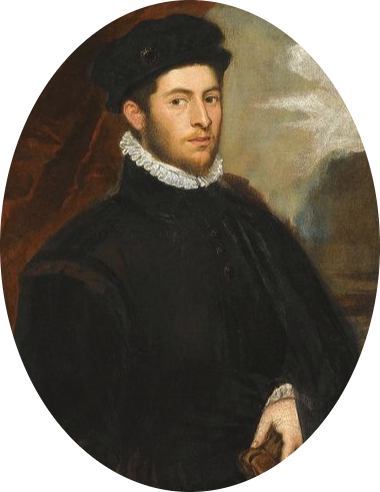
Constantine Ruthern, 3rd Duke of Vidaus
1707 A.H. – 1709 A.H. | 260 E.S. – 262 E.S.
Konstanz Ruthern (Common: Constantine Ruthern) was a Haeseni nobleman, the son of the former Duke of Vidaus and Lord Palatine Demtriyus Ruthern, who served in the palatinate himself from 260 until his resignation in 262. As a personal friend and childhood companion of Marus II, he appointment came more from familial relations than merit. After an underwhelming two years in office, with wanting to focus on his personal estates and family, he resigned from government to live a life remaining mostly out of the political limelight.
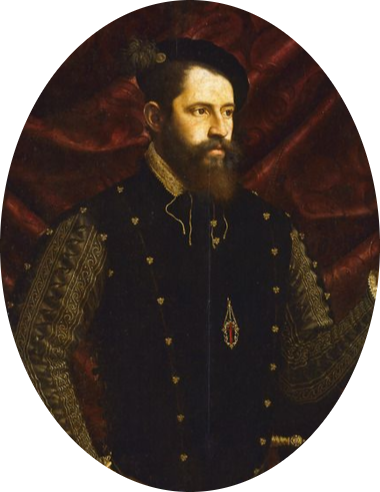
Leopold Stafyr, 1st Count of Nenzing
1709 A.H. – 1718 A.H. | 262 E.S. – 271 E.S.
Leopold Stafyr (Common: Leopold Stafyr) was a Haeseni nobleman and Count of Nenzing serving as Lord Palatine between 262 to his death at 271 under King Marus II. Leopold was the son of disgraced Lord Marshal Sergey Stafyr, and despite the recent fall of his family, had during his time as pater familias managed to re-elevate his family to comital status and strengthened his own political power, leading to King Marus summoning him to serve as his Lord Palatine following Konstanz Ruthern’s disgrace and resignation. Leopold’s tenure as Lord Palatine coincided with a build-up of tension and military stand-offs in the heartland estates between competing powers of Renatus (led by the imperial-claimant Pertinaxi dynasty) and Adria (who had recently elected Marus II as their duke).
He gained fame in his defense of the sovereign during the subsequent Sacking of Ves (264) and destruction of the Adrian estates, defending Marus both in the court of the Pertinaxi dynasty and during the Adrian massacres. Leopold was also seen as instrumental in the Nenzing Plot where high lords of the Empire convened in a chamber deep within the castle of Nenzing to plot a revolt to replace the Pertinaxi dynasty with the Marnantine dynasty. After the plot was unraveled by imperial spies, Leopold orchestrated the first imperial coronation of a Holy Orenian Emperor in over a century of civil turmoil, sparking the War of Two Emperors.
During the war Leopold fought in the victorious Battle of Upper Rodenburg, though suffered defeats at both Lower Rodenburg and the crucial Siege of Helena (269), before being killed at the Second Battle of Leuven (271) due to an infected arrow wound. Under Leopold’s tenure, he completed the first Haeseni Law Codex, though it remained unpublished till the end of the War of the Two Emperors under King Andrik III, and heavily sponsored the Duma and its subsequent rise in political influence.
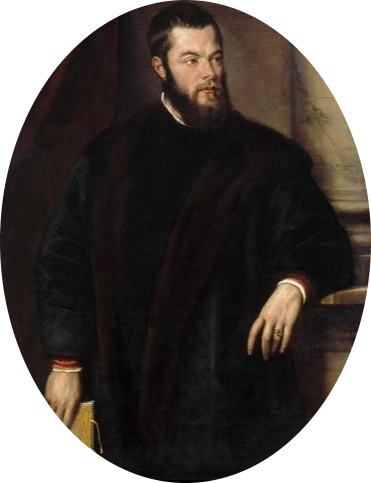
Sir George Alimar, the Elder
1718 A.H. – 1720 A.H. | 271 E.S. – 273 E.S.
Sir Georg Alimar (the Elder, not to be confused with his nephew Georg the Younger, Palatin XXV) (Common: George Alimar) was a Haeseni prince and statesman during the last year of King Marius II and in the early accession of King Andrik III. He led government in the disastrous final stages of the War of Two Emperors, coordinating the defenses of the southern borders of Haense and maintaining the realm following Marus II’s untimely assassination. However, following conflicts between himself and nobleman Lerald Vyronov, he was captured when enroute to his country estate by enemy soldiers of the Pertinaxi dynasty and subsequently assassinated.
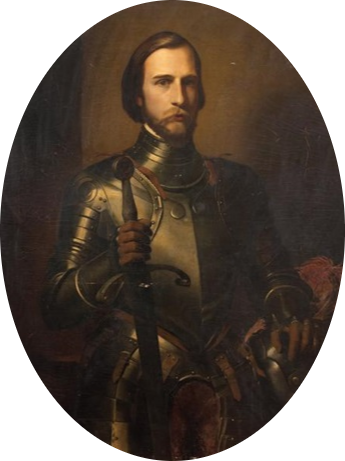
Lerald Vyronov, 15th Duke of Carnatia
1720 A.H. – 1732 A.H. | 273 E.S. – 285 E.S.
Lerald Vyronov (Common: Laurence Vyronov) was a Haeseni nobleman and the Duke of Carnatia, serving as Lord Palatine from 273 till his death in 285 following the assassination of his predecessor. Lerald belonged to ancient though relatively minor Haeseni aristocratical family, and though his clan was usually overshadowed by the elder Karovic clans, he became a leading political and Feudalist in the Duma, and became one of the spokesmen for the preservation of ancient noble rights. Ascending the position of palatine during the late stages of the War of Two Emperors, he was the one to lead and negotiate the Treaty of Leuven (274) for the Haeseni front, ending the war whilst ceding southern territory to the heartlander estates. His tenure saw moderate success in rebuilding the war-exhausted realm, including a sizable regrowth of the army by the early 280s. He was known as a staunch feudalist as well, and used his position numerous times to gain advantageous titles and holding for his supporters, including his very own elevation as Duke of Carnatia.
Despite an admirable record as palatine, Lerald came under a string of accusations against him in a public hysteria known as the ‘Vyronov Conspiracy’. He became connected to loses and suspected sabatoge in the previous war, connections between himself and former enemies from the heartland estates, the murder of his predecessor Prince Georg Alimar, and to some even the assassination of the former King Marus II. Beginning the late 270s, a coalition of influential politicians of the Duma and local nobility formed against him and propagated the conspiracy. Towards the end of his life he became increasingly paranoid and avoidant of public appearances, later to die under suspicious circumstances in 285.
Lerald’s tenure as Lord Palatine coincided with a regrowth of Haeseni scholarism and literacy, and by the peak of his career, the Haeseni state maintained the highest literacy and population growth as according to imperial censuses. The reconstruction of the war-torn capital was begun under Lerald as well, though its completion would not be realized till his successor Konrad Stafyr.
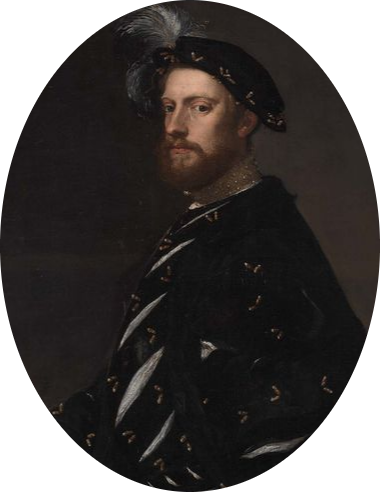
Sir Terrence de May, VKML
1732 A.H. – 1733 A.H. | 285 E.S. – 286 E.S.
Terenz Mau (Common: Terrence May) is a Haeseni-Heartlander statesmen, descendant from burgher Heartlander refugees who were displaced from Johannesburg and escaped to the North during the Coalition War. A fisherman by trade, May began his ascent into politics after garnering support by his local fishing guild in the County of Ayr, rising to prominence following his appointment to the Duma in representation for the Baruch family, lobbying for the fishing and whaling industry. He was appointed Lord Palatine due to his political savvy with the Imperial government in the wake of the Imperial succession crisis.
During his brief term, Terrence May embarked on an ambitious domestic program. He introduced the largest spending measure in Haeseni political history, a package of proposals to fund military, education, and infrastructural provisions. However, his support in the Duma was eclipsed by skeptics and Stephanian-Centralists who believed his policies promoted radical Feudalist efforts to drain the royal treasury. Following a failed bill which would have expanded the Haeseni river systems in a series of canal expansion (which was later given royal assent), he was forced to resign, though remaining active in Haeseni local and imperial politics.
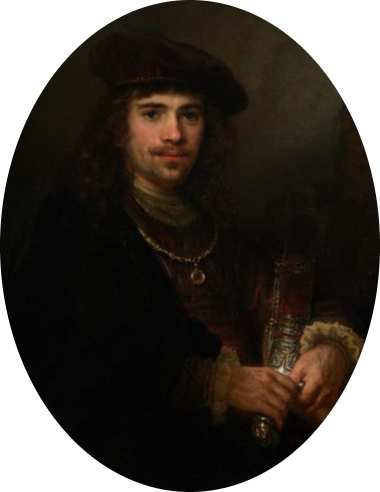
Sir Conrad Stafyr, HKML
1733 A.H. – 1741 A.H. | 286 E.S. – 293 E.S.
Sir Konrad Stafyr (Common: Ser Conrad Stafyr) is a Haeseni nobleman and the cousin of the late Leopold Stafyr, Count of Nenzing, belonging to one of the family’s numerous branches. Originally beginning his career as a bureaucratic clerk under Georg Alimar, Konrad represented the Stafyr family in the Duma for several years and was influential in the early development of the body as one of the first Speakers. The longest serving officeholder in that post, he was called up to the palatinate in 286 in wake of the collapse of Terrence May’s government. Unlike May, who came from lowly gentry and was resented by the established aristocracy, Konrad belonged to the elder echelons of Haeseni nobility and had an easier time in achieving compromise between the Centralist government and the Feudalist landowners.
During his tenure in office, Ser Konrad pursued a strong domestic agenda to build upon the domestic achievements of his predecessor Lerald Vyronov, and to a lesser extent, May. Konrad oversaw the completion of the reconstruction of the royal capital (originally damaged in the War of Two Emperors and repairs began under Vyronov), the creation of the first royally-funded grammar school and university, and the increased regulation on commerce, most notably his seizure of the capital inns and taverns and any outlying properties. He also presided over several emergencies during his tenure as palatine, the most notable a short crisis (Crisis of 289) between a provincial-led movement of the Provincial Commission (composing of Haense and numerous other states) and the Imperial government over rights of law and gubernatorial authority. Konrad himself was lead emissary in talks between the two parties, and despite fierce opposition from Feudalist detractors, he propagated a policy of unionism and reconciliation with the federal government and signed the Treaty of Renzfeld (291), disbanding the provincial alliance entirely.
The economic and military growth of the kingdom continued under Konrad, and despite participation in the short Orcish-Imperial campaign, the realm remained peaceful and mostly prosperous. With advancing age and personal interests in family matters, Konrad resigned in 293 to his northern estate, spending the majority of his life in companionship with his wife and youngest daughter.
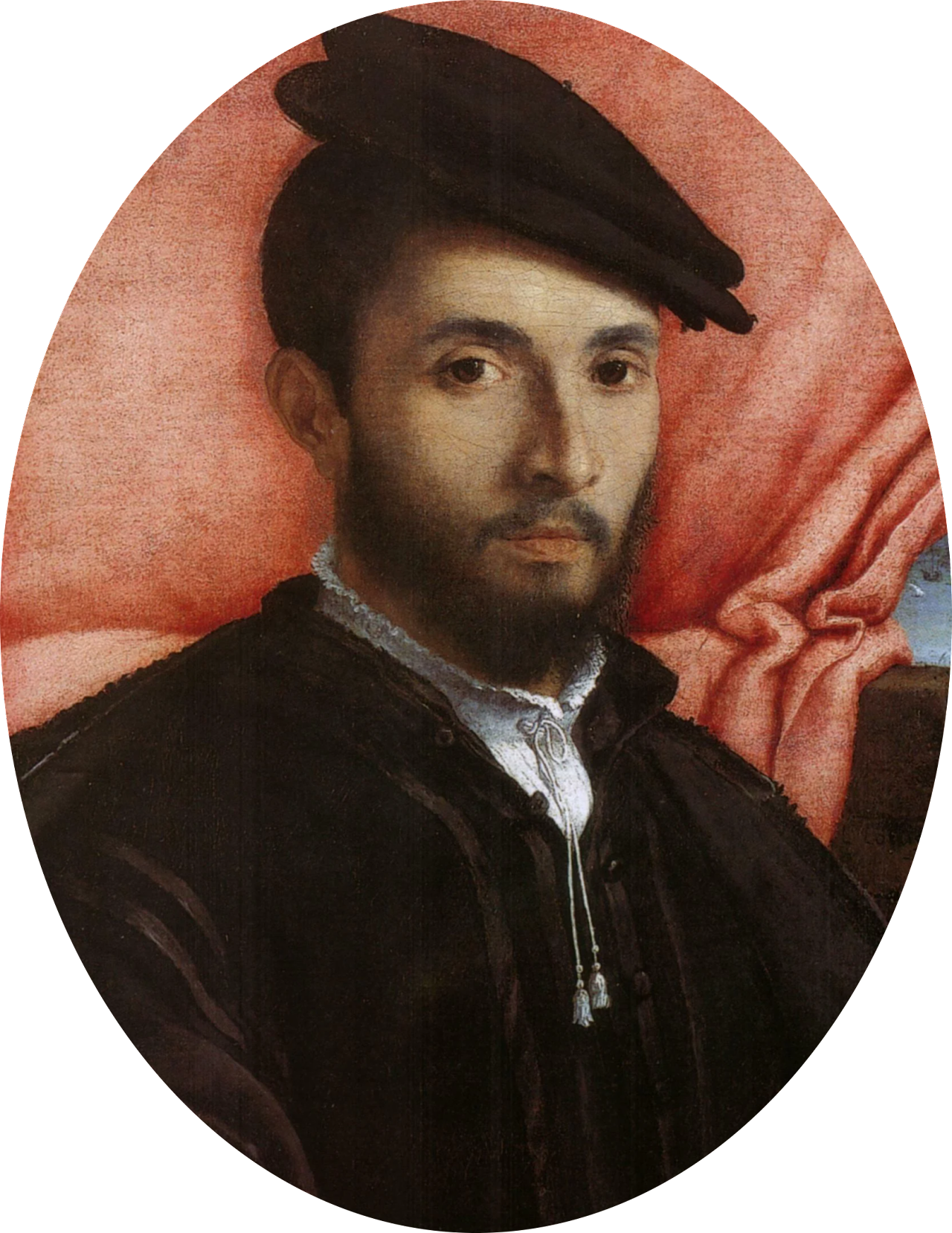
Sir Marcus Kortrevich, 1st Margrave of Korstadt
1741 A.H. – 1752 A.H. | 293 E.S. – 305 E.S.
Markus Kortrevich (Common: Marcus Kortrevic) is a Haeseni nobleman and knight, belonging to the nascent Kortrevich family of originally gentry origins and serving as Lord Palatine from 293 ES to 305 ES. Once a commander and soldier in the armies of Robert I and Marius II, cutting his teeth with the brutal conflict of the War of Two Emperors, Markus rose up in the civil Haeseni administration as centralist protegee under the senior politicians Ser Terenz Mau and Ser Konrad Stafyr. After the former’s lackluster tenure and the latter’s more successful yet domestically-oriented tenure, Markus was called up to the palatinate, chiefly for his lofty military experience and centralist roots, upon the start of the civil conflicts in southern Haense. Leading a war-time administration, his early career came dominated in the field as commander-in-arms to Andrik III, successfully warding off an assault on Reza (294) by rebel forces and scoring a victory at Hangman’s Bridge (295) in the later spring.
While Markus rode the laurels of military achievement, domestically his administration came under siege by rival feudalist opponents. After Markus halted all government projects during the war, including the construction of the canal connecting the river Karov to lake Helena, the feudalist majority called and passed (7-5) a vote of no confidence upon the palatine, though in a political twist of fortune was ignored by Andrik III, leaving him in control of government. In the years following, Markus, as leader of the centralists, would reconstruct its majority in the Duma after a feudalist domination of twenty years, and by the end of his twelve years as palatine, would have flipped the Duma entirely from its traditionally anti-centralist views. Most infamously, Markus survived both an assassination attempt (orchestrated by a disgruntled feudalist during the canal crisis) and later a short time as prisoner of war during the winter months of 299.
Markus also continued sponsoring learning and education during his tenure, including the foundation of the first university (called the St Charles University of Reza) under the lead of his later palatinate successor, Georg Alimar the Younger. Later in his career, when the war drifted further from Reza, he continued the work of reconstructing and maintaining the defenses of Haense’s central region. Markus maintained government until the young Andrik IV’s mortal injury and regency, which came instead to be controlled under the military by lead of Sir Tybis Barrow. This transfer of government would eventually lead to Markus’ willing resignation, though he maintained his position in administration as Knight Paramount.
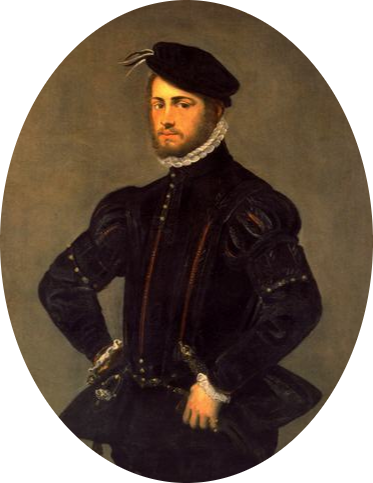
Sir George Alimar, the Younger
1752 A.H. – 1756 A.H. | 305 E.S. – 309 E.S.
Sir Georg Alimar (the Younger, not to be confused with his uncle Georg the Elder, Palatin XX) (Common: George Alimar) was a Haeseni prince and statesman of the Alimar family, serving a palatine briefly for two years from 305 to 307. Originally a scholar by trade, he was called up to the palatine after then-regent Sir Tybis Barrow took control of government upon Andrik IV’s untimely death, though nearly all affairs of government remained vested and in-control of Tybis’ junta regency and Georg himself remained more or less figurehead within the Haeseni administration. With this relationship, most of Georg’s attention focused instead upon the sponsorship and philanthropy of the newly-established Haeseni universities within the realm (namely, the St Charles College of the capital) and commercial ventures, such as the founding the Haeseni Trappers and Fur Company and the hostile takeover of many struggling companies, including the Ludovar Mining Guild (a copper mining company sold to Georg by the 4th Baron of Rostig-Otistadt) and the Southern Haeseni Express. After Tybis’ death in battle in 307, Georg was quickly sidelined by the administration (ironically led by his father, the 4th Prince of Muldav) and retired to serve as president and dean of the St Charles College.
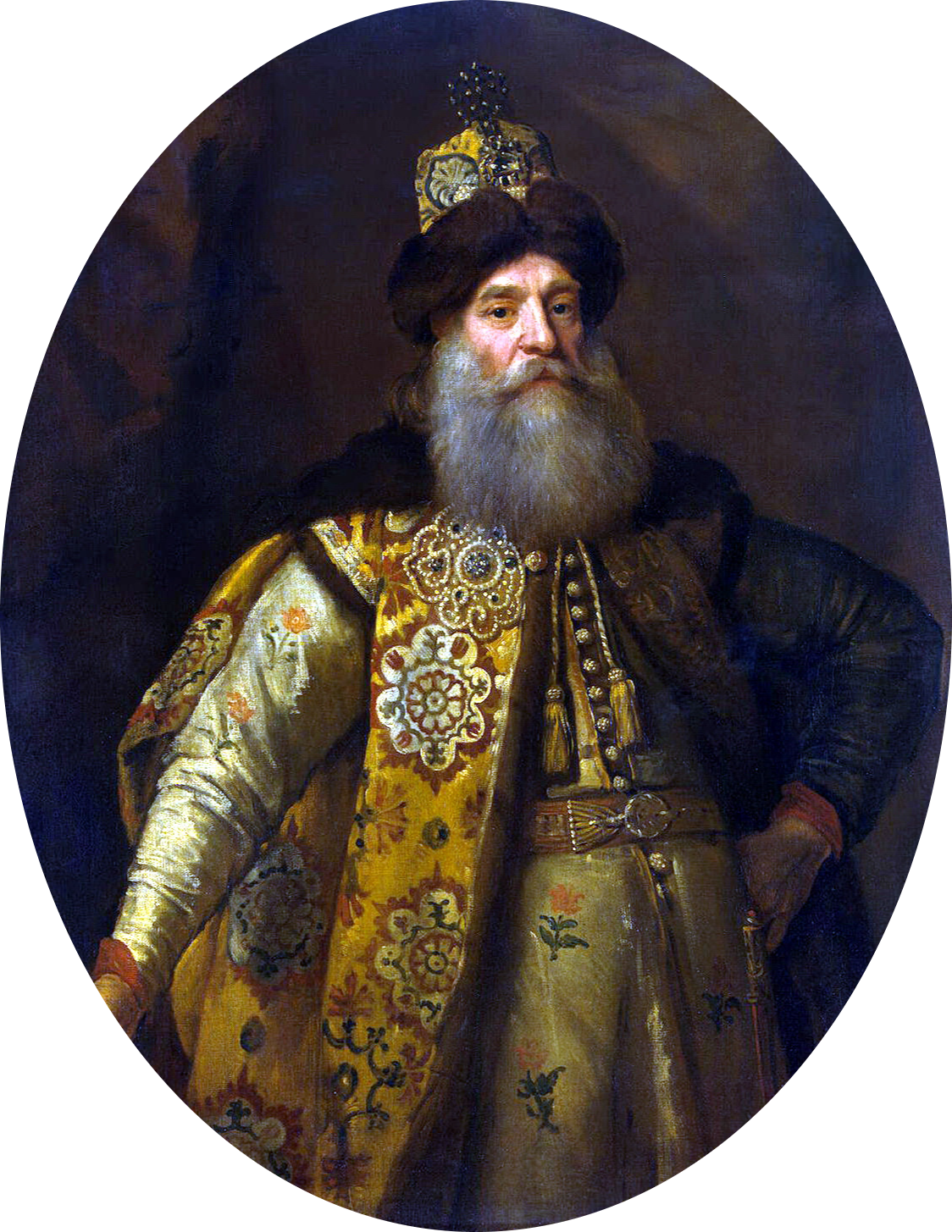
Otho Alimar, 4th Prince of Muldav
1756 A.H. – 1764 A.H. | 309 E.S. – 317 E.S.
Otto Alimar (Common: Otto Alimar) was a Haeseni prince and statesman of the Alimar family, serving as palatine for nearly a decade from 309 to 317. After the resignation of his son, the elder Alimar assumed office as the prominent figure of the Aulic Government, shepherding the regency until King Sigmund II came of age. Not without controversy, Prince Otto’s appointment as the second consecutive Alimar to preside over the Aulic Government, sparking doubts of his legitimacy by the Valwyck Pact, a lobby of Feudalist lords. During his tenure, Prince Otto clashed with the peers over fiefdom regulations, favoring a centralized approach to architectural styles and land surveys. The compromise with the Valwyck Pact ensured a continuity of government and a codification of the rights of the nobility.
Another notable policy of his tenure saw the reforms of the Haeseni military structures, reorienting the Brotherhood of Saint Karl into the Haeseni Royal Army. Other policies include the expansion of state mercantilism with the formation of the Haeseni Fur and Trade Co. with Lord Tiberius Barrow and Lord Rennard Amador to increase revenues. In the realm of foreign affairs, Prince Otto presided over the waning period of the AIS War and the War with Rubern, signifying an end to decades of tension from the early 1700s.
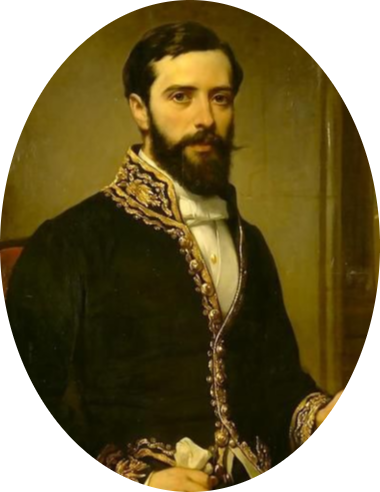
Peter Baruch, 2nd Duke of Valwyck
1764 A.H. – 1776 A.H. | 317 E.S. – 329 E.S.
Petyr Baruch (Common: Peter Baruch) was a Haeseni nobleman, belonging to the ancient House of Baruch and served as Lord Palatine from 317 ES to 329 ES. Prior to this elevation to the Aulic position of Palatine, Petyr Baruch served as the second Duke of Valwyck and later the leader of the Valwyck Pact which was one of the many proponents that led to his eventual appointment to the Palatial Office in 1764. Throughout his tenure, Duke Petyr was instrumental in aiding the Haeseni vassals of Ruthern and Vanir in settling in the Wickwood. Around the same time, the Ducal Palatine resolved the Lendian Crisis that was taking place in the Kingdom for a number of years.
Prior to his assumption of the Palatine position, he had many plans and aspirations for the Kingdom that he himself wished to task himself with completing; one of them being the reform of the Aulic Council which led to the recreation of the position of Deputy Palatine (p. Palatine-Aspirant) and the replacement of the Lord Kastellan position with the Royal Envoy (c. Aulic Envoy) position. Later on during his twelve years as Palatine, he completely overhauled the Aulic Government to become a more bureaucratic system known as one of the first of many ‘Aulic Edicts’ passed by King Sigismund II and later King Josef I.
The vast majority of Petyr Baruch’s tenure as Palatine took place subsequently throughout the Scyfling Invasion where he himself led a number of defenses at his home fief in Valwyck (located in the northern reaches of Haense). Later in his life following his wife’s sudden death, his mental state sharply declined which led to him assuming his son was responsible for his wife’s unforeseen death, resulting in his own son killing him in an act of self defense. As a result of such events, Petyr Baruch was later succeeded by his colleague, Konstantin Wick in 1776, the very same year King Sigismund II took his own life.
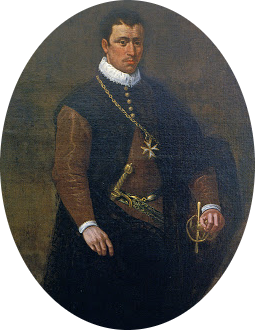
Sir Constantine Wick, HKML
1776 A.H. – 1808 A.H. | 329 E.S. – 361 E.S.
Sir Konstantin Wick (Common: Sir Constantine Wick) was a renowned attorney of law, later serving as palatine from 329 ES to 361 ES. Serving as the longest serving Lord Palatine to date, Sir Wick was appointed following the retirement of his predecessor and the abrupt death of King Sigismund. His tenure was defined by nearly three decades of service which saw the end of the AIS War, the annexation of Rubern, the Independence of the Kingdom of Hanseti-Ruska from the Holy Orenian Empire, and the codification of a modern Haeseni law code. He was also a notable Josephite politician in Oren, serving concurrently as President and Member of the House of Commons prior to the Treaty of Helena of 1786.
Despite being a member of the Wick clan, Sir Konstantin’s tenure also saw a dramatic unfolding of tensions between his kinsmen and the state. Throughout the reign of King Josef, a series of incidents regarding alleged brutality by the Haeseni Royal Army (HRA) upon the Wicks, stemming from a systemic history of marginalization that dates back to the early Bihar Era. Palatine Wick was unable to foresee and prevent incidents regarding the Wick arrests, closure of the New Reza library, and the protests concerning corruption in the HRA. These events were depicted by the Golden Crow Chronicles as the ‘Nikirala of Discontent.’
Following the independence of the Kingdom of Hanseti-Ruska, Palatine Wick was instrumental in the establishment of an independent judiciary. The codification of the Haurul Caezk is considered by many to be the epitome of a storied career. Sir Wick was also a patron of legal philosophy and legal education, thereby shepherding the role of lawyers, the courts, and jovenaars.
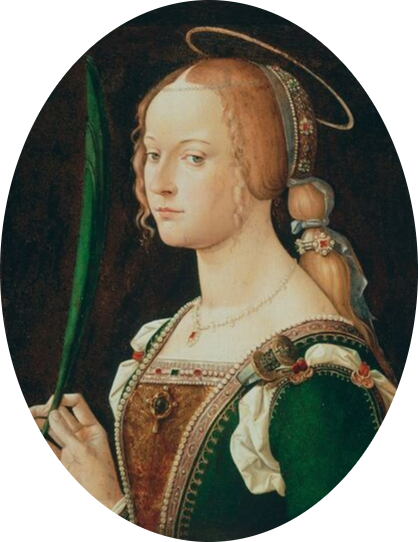
Marcella Barclay
1808 A.H. – 1810 A.H. | 361 E.S. – 363 E.S.
Marcella Barclay (Common: Marcella Barclay) was a Haeseni noblewoman from the militant House of Barclay, serving as palatine briefly from 361 ES to 363 ES. She is the first woman to serve as the Palatine of the Realm. In her first year as Palatine, she directly oversaw the naming of all the land encompassed by the Haeseni realm on Almaris. In her second year as Palatine, she saw reason to reallocate funds to the Haeseni Royal Army to benefit them with new armaments and supplies. As a result of such action, the Army under the leadership of Lord Marshal Friedrich Barclay saw increased morale throughout the Rimetroll raids.
Despite Marcella only being in the Palatial Office for the better part of two years, she was instrumental in campaigning for the first elven house to obtain Haeseni nobility. Through her efforts, the House of Asul’onn was granted Haeseni nobility a few years following her resignation. Directly following her resignation, her Deputy Palatine, Maric var Ruthern succeeded her as the twenty-ninth Lord Palatine. Nothing more of significant note occurred during the first female Palatinialship, although it is to be noted that since her elevation to become the first Lady Palatine, more and more women in Haense have garnered the ambition to strive to further heights in the Kingdom of Hanseti-Ruska.
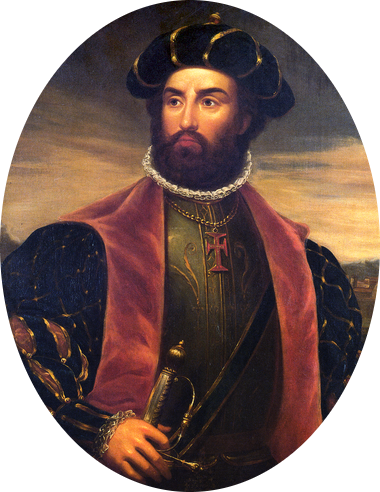
Marick Ruthern, 6th Duke of Vidaus
1810 A.H. – 1826 A.H. | 363 E.S. – 379 E.S.
Maric Ruthern (Common: Marick Ruthern) is a Haeseni nobleman and Duke from the ancient House of Ruthern, serving as palatine from 363 E.S. until his resignation in 379 E.S. Prior to his ascension to become the twenty-ninth Lord Palatine, Lord Ruthern was appointed as Deputy Palatine underneath Lady Marcella’s palatinal administration. Following the unforeseen resignation of his predecessor, King Heinrik II quickly appointed the Duke to ascend to the Palatial office.
As the third Ruthern to occupy the Palatial office, he quickly took command as he led the Aulic government through a strenuous time during both the Rimetroll War and the expedition to the Attenlund province. Throughout his tenure in office, Lord Ruthern; the Stephanian-Centralist, placed a distinct emphasis on both solving domestic issues and issues abroad, while keeping the interests of the Kingdom at a forefront. Many of these issues including; The Greyspine Convention, The Eftenbach Edict, the reallocation of funds to the Northern Geographical Society and reforms to dueling and nobility laws were all measures that were assisted by the purview of the Ducal Ruthern. As is the case with every Palatine, conflict is inevitable to occur, Lord Ruthern’s tenure was no exception. Immediately after the Royal Academy operated for eight years (specifically, the Royal Academy of St. Charles), Lord Ruthern was delegated responsibility of the Academy after Hauchdragus Sir Viktor Kortrevich’s resignation, which quickly led to the institution’s collapse. Although it is to be noted that later on in his tenure, the return of the formerly used ‘Haeseni Civil Service Exam’ came to fruition after the founding of the University of Saint Otto in 376 E.S.
In his latter years as Palatine, he also assumed responsibility of High Justiciar briefly for three years following the vacancy left after High Justicar Matyas Baruch (VIII) was suddenly murdered. During his time as High Justiciar, he presided as the prosecutor of two major trials; the Baruch, et al. vs. Surgeon General of Hanseti-Ruska trial and the Ruthern vs. Wick trial. As the head of the Aulic Council, Lord Palatine Maric var Ruthern was someone who aided in keeping the peace during the incursion of the Rimeveld and helped mend relations between vassals and neighboring states. After sixteen long years as an occupant of the Palatial office, the elder Duke willingly resigned to his estate in Vidaus wherein he lived a life focused on family. As a result of such a decision, Attenlund expeditioner Adrian Colborn ascended to the Palatial office.

Aydrian Colborn
Aydrian Colborn
Adrian Colborn
1826 A.H. – 1841 A.H. | 379 E.S. – 394 E.S.
Biography in Progress.
Kaustantin Baruch
Constantine Baruch
1841 A.H. – 1849 A.H. | 394 E.S. – 402 E.S.
Biography in Progress

Eirik Baruch
Eirik Baruch
Eric Baruch
1849 A.H. – 1873 A.H.| 402 E.S. – 426 E.S.
Eirik Matyas Baruch (Common: Eric Matthias; Ayrian: Eiric Maiteas), known formally as the Duke of Valwyck, or referred to simply as Eirik, was the sixth Duke of Valwyck, succeeding his father. He was the first and only son of Duke Ruslan Baruch and Marjorie Baruch. He was the thirty-second Lord Palatine of Haense, assuming the position in 1849.
Having served as the Deputy Palatine to Kaustantin Baruch since 1845, Eirik ascended to the position in late 1849 upon his predecessor’s resignation, though he was not officially bestowed the Golden Bulava until early 1850. At the time, his appointment had seemed obvious, as the Palatial Office had very few people in it, and he was the only one that particularly stood out.
Upon the time of his ascension, the realm was mainly plagued by matters of foreign diplomacy, the downfall of Emperor Philip II and the succession of Philip III to the Imperial Throne, followed by the combined effort of Oren and Savoy to overthrow High Pontiff Everard VI. Eirik was personally present during the schism attempt, and ordered the successful evacuation of the High Pontiff. These events would eventually culminate in the start of the Sinners’ War.
As the war took the attention of Sigismund III and Eirik, domestic matters were given less emphasis, though Eirik nevertheless saw to develop a functional ward system for the Palatial Office, to which he managed to recruit a large number of the next generation, whom he taught lessons and gave Palatial Ward Points (a service in which they could redeem favours from him, it is known that, for example, Konstanz Barclay received keys to the Lord Palatine’s Office) for attending lessons, completing tasks, and generally being a presence within the Kingdom.
He was one of the primary supporters of the Karenina Accord, having been present at the meeting where the initiative for the Accord was started, and he frequently attended rallies and protests in favour of the Accord. He was the one to pen the Karenina Law, which passed unanimously in the Royal Duma, and brought upon a new age of Women’s Rights in Haense, now that women would inherit on the same terms as men.
He also attempted to implement a position called Palatial Liaisons, which were meant to be individuals assigned to communicate specifically with another Aulic Office, but due to a lack of engagement from the Aulic Councillors regarding the establishment, he had to resort to simply hosting meetings of the Aulic Council more frequently, especially as such had rarely been held since the tenure of Konstantin Wick.
Due to his aptitude for history, Eirik also revived the tradition of Chancellor’s Reports, which had last been done during the tenure of Terrence May, over a hundred years before Eirik’s own appointment. He published four Chancellor’s Reports during the war, where three of them mostly pertained to the Sinners’ War, and the last to the death of Sigismund III. He resigned in 1873, a month into the reign of Karl III. He was succeeded as Lord Palatine by his daughter, Isabel.

Isabel Baruch
Isabel Baruch
Isabella Baruch
1873A.H. – 1888 A.H. | 426 E.S. – 441 E.S.
Isabel Alexandra Baruch (Common: Isabella Alexandra; Ayrian: Iseabail Leacsaidh), was the eighth Duchess of Valwyck and the 33rd Palatine of Hanseti-Ruska. She was the second ever Lady Palatine and the second matriarch of House Baruch, following her father’s abdication of his titles and his resignation as Lord Palatine.
Monarchs
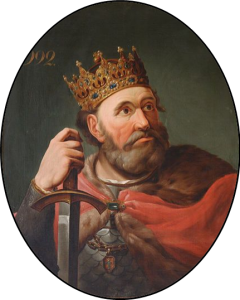
@EddyWilson2
Koeng Petyr I
Petyr var Sigmar Barbanov
Peter of Siguine Barbanov
r. 1578 A.H. – 1582 A.H. | r. 131 E.S. – 135 E.S. (4 years)
Petyr Barbanov, the founder of the modern State of Haense and its first king, is by far one the most legendary Haeseni figures in its history. Born during the late end of the War of the Ducal Coalition, Petyr was raised in exile following he and kinsmen’s banishment after the Sacking of Brelus. He did not remain outside the Orenian and Haeseni lands for long, however, and in the deal made between Otto Sarkoz and the emperor, Petyr could return. He lived in the rump state of the Duchy of Carnatia, comprising of a sizable chunk of Petyr’s family former holding of the Duchy of Haense.
The first mention of him in his own right comes from the Eighteen Years War, where the young Petyr served as cadet under Josef Vladov and later Jan Kovachev, fighting in the famous brigade known as the Carnatian Hussars. After the Peace of Avar, Petyr returned to Carnatia, where partook in the regional politics, known at the time as the tense Northern Question.
He was one of the first supporters of Britanus Vanir following his disposition by the rival heartlander Duke of Courland, where he and famous commanders Fiske Vanir, Jan Kovachev, and Rickard Barrow formed the Carnatian League, kickstarting the Riga War. Petyr successfully commanded numerous battles, including the Siege of Kraken’s Watch and the decisive Battle of Curonswald, though he is mostly remembered for his successful Sack of Riga, which formally ended the Riga War and left him in control of most of the highlander hinterlands.
Petyr further showed his talent in the later Krajian Rebellion, successfully subduing rebel hetmans under the pretender Sveneld Ivanov by 1576, later being named Lord High Governor of Hanseti and Ruska. In 1578, under intense pressure by himself and his supporters, Petyr was bestowed the titles of King of Hanseti and Ruska, to which he became crowned as later that year. In reference to his family’s traditional title, the realm at first was vernacularly called ‘Haense’.
Under his rule, countless cities and forts were created, and the population in Haense soared. His military continued to serve under the larger imperial army, and his forces led multiple victories during the concluding dunlander revolts. Petyr’s technical reign as king only lasted four years, though, and he fell to old age by 1582. By the end of his reign, his kingdom and standing army had reached quadruple the size of their formers, and the first true city- Karlsburg- had been founded.
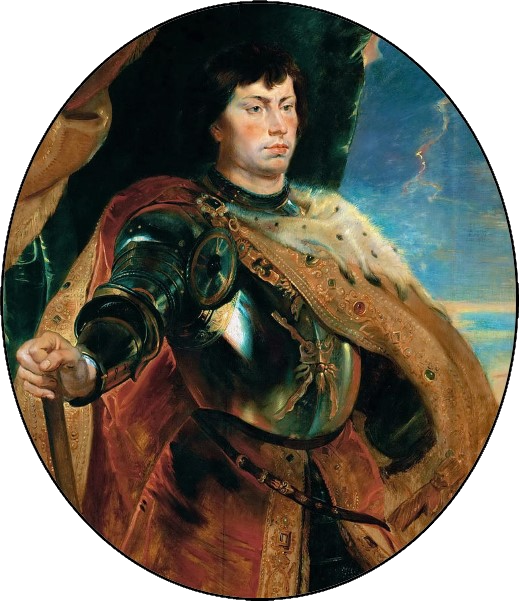
@seannie
Koeng Andrik II
Andrik Otto var Petyr Barbanov
Andrew Otho of Peter Barbanov
r. 1582 A.H. – 1586 A.H. | r. 135 E.S. – 139 E.S. (4 years)
As son and later crown prince to his father, Andrik was extremely popular by the Haeseni military and nobility alike. He was known for his charismatic nature yet was prone to rash thinking, and in the fledgling kingdom he was cherished as another titan to succeed his father. In 1582, he was crowned to much fanfare, and the groundwork laid by his father and Palatine Rickard Barrow left Andrik a bountiful realm. Andrik was originally remembered fondly for his work in settling new villages and forts throughout his kingdom, as well as the first highway between hinterlands and the heartlands. He joined the imperial conquest of the orcish peoples, where Andrik as monarch led the vanguard in the famous Siege of San Uruk.
Andrik led multiple forced-expulsions of pagans outside his realm, even from his time as crown prince. He commanded multiple army incursions against native territories deep inland and performed numerous successful raids against them and their third-party Avarite supporters. His bold and almost arrogant nature made his movements near impossible to be predicted by his enemies, and he won many conflicts against larger numbers.
However, Andrik is most infamously known for his role in the unsuccessful and chaotic Deep Cold Uprising, where he slew the emperor John IV in his court and declared open rebellion. This move was very unpopular with some of his followers, and while half of his lords swore to him (under the leadership of Branimar Vanir), the other half declared Andrik insane. The powerful noble Sergey Kovachev, a staunch imperialist, captured the royal capital of Karlsborg and forced Andrik to abdicate.
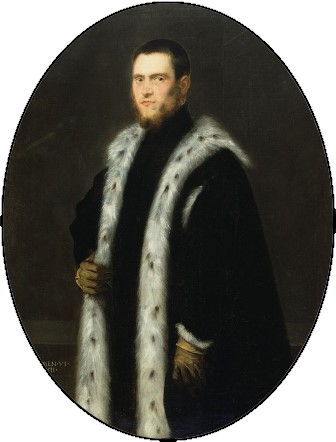
@Piov
Koeng Marius I
Marus var Andrik Barbanov
Marius of Andrew Barbanov
r. 1586 A.H. – 1611 A.H. | r. 139 E.S. – 164 E.S. (25 years)
Marius first succeeded to the throne as a babe, following his father’s abdication during the nation-wide scandal of the Deep Cold Uprising. His government was led by his uncle Karl Sigmar, who acted as Palatine and regent, and left the ultimate raising of the infant sovereign to his aunt Juliya. His uncle was unpopular with the restless nobility, and by Marius’ fourteenth nameday, and was quickly crowned king.
As monarch, Marius suffered from a divided cabinet, split between the Sergeyists and the Andrivists, and Marius had a difficult to reach bipartisan compromise between the two. Royalist powers were undermined by both factions at the time, and his officials were most of the time picked for nepotistic and political reasons rather than true talent. During this time, Marius did find success in pacifying rebellions following his father’s mess, including the Brawm Rebellion of 1600 and nativist revolts in the extreme northern regions of the kingdom. His policies of land reform struck well with the commoners, however left his nation in economic strain and unable to fully maintain the standing army of his predecessors.
Marius was also a patron of the arts and culture, and sponsored numerous artists, including the young Jakob Madonvik. He opened the first theater, the Gilded Duke, and held the first Edmond Manston play outside of the imperial capital. His patronship included many, such as the author Blakton Alvitz, poet Alistair Wailer, and his famous painter aunts, princesses Juliya and Natalia. Karlsborg became a haven of Dumatic and proto-Biharist thinkers, encompassing the larger Sanoist movement sweeping the heartlands at the time.
In the heartlands, the Coalition Wars destroyed imperial authority, and thanks to multiple diplomatic blunders, a southern coalition of forces declared war upon the State of Haense. The army under Stefan Bihar attempted to strike first, however, yet most fell at the disastrous Battle of Elba, where in only a few years Marius soon fled to exile and left to the realm in occupation. Marius lived out the rest of his life in exile, continuing to style himself as the King of Hanseti and Ruska.
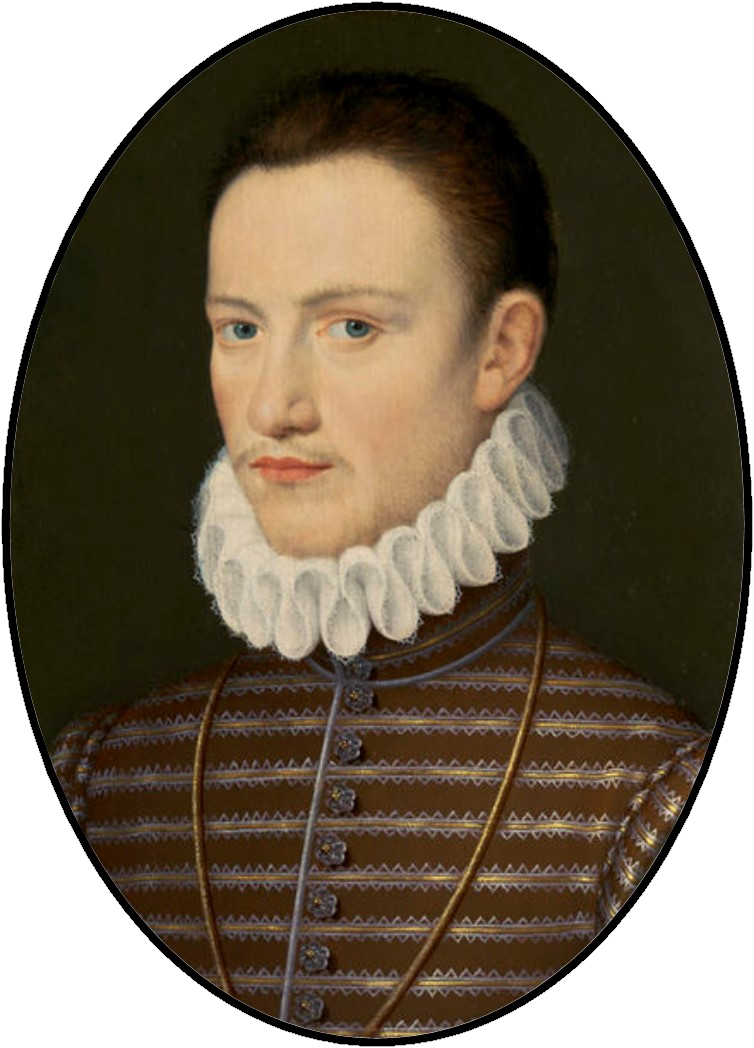
@Pureimp10
Koeng Petyr II
Petyr Marc var Marus Barbanov
Peter Mark of Marius Barbanov
r. 1611 A.H. | r. 164 E.S. (5 months)
Petyr II only ever ruled in exile, succeeding his father Marius for only a short time. Before his death, however, the Greyspine Rebellion had begun, and Petyr was prepared to return and become figurehead of the revolt. He died of the pox, however, only three months after his accession, leaving the throne to his brother.
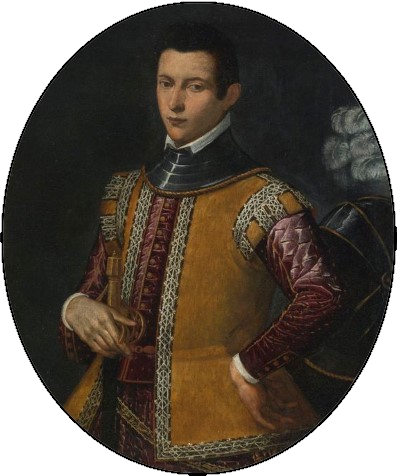
@yopplwasupxxx
Koeng Stefan
Stefan Karl var Marus Barbanov
Stephen Charles of Marius Barbanov
r. 1611 A.H. – 1624 A.H. | r. 164 E.S. – 177 E.S. (13 years)
Unlike his elder brother Petyr, Stefan was not raised to be ruled by his father nor the court, and traditionally was expected to enter the church as his counterpart took the throne in Haense. His brother’s death to the pox thrusted Stefan to kingship, to which he was elected in heated debate during the Duma of 1610. His candidacy was supported mainly by the established nobility, who wished for a weaker monarch to maintain noble autonomy.
First few years of his reign was left mainly to the nobility, and Stefan remained mostly in the heartlands in the fortress of Hochspitze. Through a deal with the Prince of Pruvia, he secured the Pruvian Inheritance, which included not only a large sum but control of many of the famous ‘Pruvian Banks’. This and the shrewd work of his advisor and later Palatine Henrik Bihar, a new army was established in direct control of the crown, which made the nobility more prone to compromise.
Karlsburg was destroyed in the First Northern War, and without a capital, the royalist war camp during the Greyspine Rebellion soon evolved into the royal city of Alban- the de facto Haeseni capital. Veterans flocked to the restored state, and despite imperial losses in the Santegian Rebellion of 1617, the Haeseni army gained numerous victories, including the Battle of Asaili. In the spring of 1616, his army under command of Alessa Grendock and uncle Prince Otto Henrik beat back several attempts at raids by natives and Avarite mercenaries, fully pacifying them by 1620.
Stefan meddled greatly in heartlander affairs, in contrast to the isolationist views of his predecessors, and was the focal point of many conspiracies and plots. He was first revealed in the Mardon Letter of his plans for a coup d’état of the emperor John V, and later his successful uproar in removing the imperial regent Robert of Marna. There were numerous assassination attempts against his life and he fought numerous duels against political opponents, including against the former heartlander archduke Odo d’Amaury, and his most famous showdown against his rival Robert of Marna, who he fatally wounded and killed.
Stefan died a young death in 1624 due to genetic Hodgkin’s disease on his mother’s side, passing the throne to his uncle as he died without trueborn heirs. His reign marked the beginning of an era of regrowth for Haense following the disastrous Coalition Wars, which continued well into the reign of Otto III. His seemingly arbitrary political moves left Stefan a vile reputation in the heartland states, to which he gained his famous moniker by Prince Philip, ‘A foe to all Humanity’.
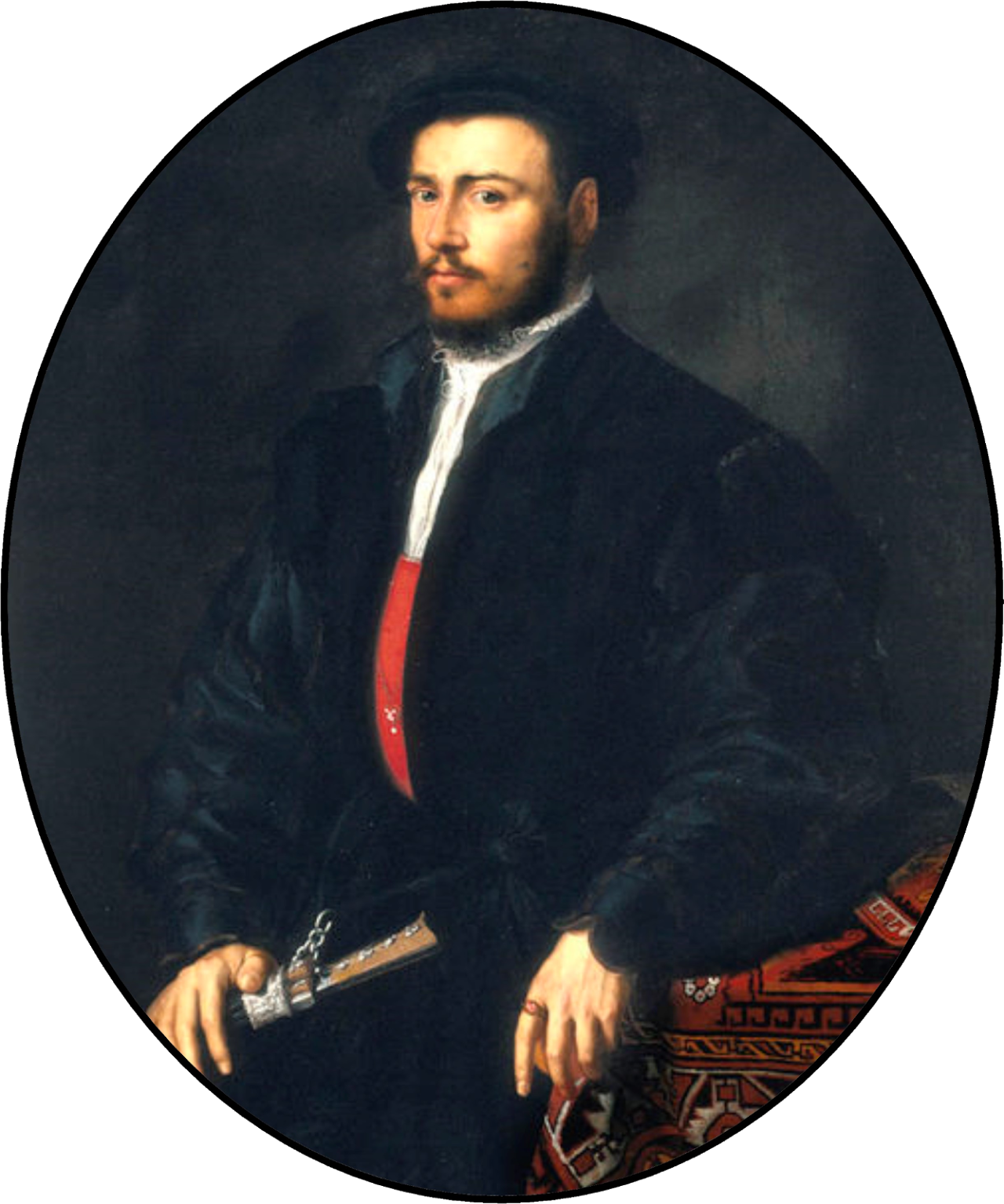
@NJBB
Koeng Otto I
Otto Henrik var Andrik Barbanov
Otho Henry of Andrew Barbanov
r. 1624 A.H. | r. 177 E.S. (1 month)
Most of Otto’s life was in service to the crown as prince and commandant, fighting in nearly every war since his brother Marius took the throne. The failures of the First Northern War sent Otto reeling, and through most of the period he remained as an outlaw soldier, raiding the occupier’s settlements and supply trains. During the decisive Second Battle of the Rothswald, he commanded the left flank and fought with valor on the field. He and Alessa Grendock commanded the Haeseni cavalry during the numerous imperial wars, such as the Santegian Rebellion, and retained Haeseni forces despite imperial losses.
He took the throne after the death of his nephew and ruled a paltry month. Haense continued its flourish under Stefan and Otto maintained the peace following the transition. His eldest son, also named Otto, would succeed him as monarch.
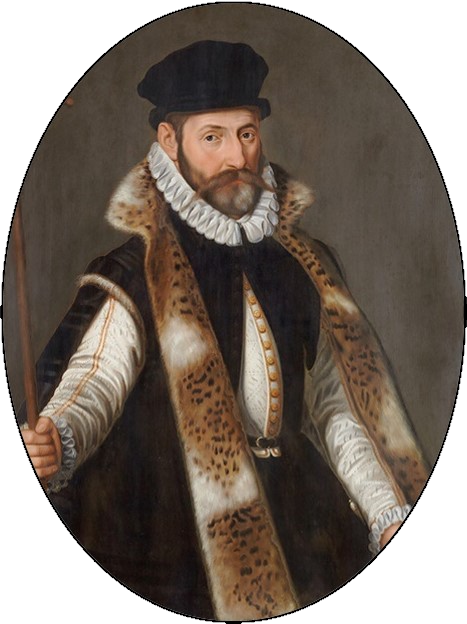
@Pureimp10
Koeng Otto II
Otto Georg var Otto Barbanov
Otho George of Otho Barbanov
r. 1624 A.H. – 1644 A.H. | r. 177 E.S. – 197 E.S. (20 years)
Before his rule, Otto George served as a courtier in the restored Haeseni court and worked as a diplomat under the Palatine Henrik Bihar. He was known for his humility and strict adherence to moral doctrine, which clashed greatly with his cousin’s more extravagant court. Otto maintained a close circle of advisors and friends, mostly of ordained clergy, which included the future pontiff Everard IV. In his father’s three years, Otto served as crown prince with dour respect, creating the record-long sixteen-hour hymn for his elevation as heir.
Otto ascended to the throne in 1627, and his reign saw Haense continue its economic and cultural boom. He, as a committed Canonist, created many royal hospitals and institutions of faith within Haense, as well as the first irrigation system stretching across the Rothswald and Wickswald. Lavish donations were bestowed upon canonist charities and orders within Haense, and Otto encouraged a theological revival in Haeseni sciences. To pay for much of this, Otto II cut down spending on the armed forces and military.
Haense maintained relatively peaceful throughout his reign, except the brief of Vasiland by dwarven forces in 1635, where the army faced a considerable loss when allied with a coalition of fellow imperial vassals and dwed loyalists. In the beginning, Otto’s management of the army led to few blunders, such as the controversial dismissal of commandant Cullen Valrein, though by the end of his promotion of talented military minds such as Berengar Helvetz and Geralt Rauen led to sizable martial influence. Otto also joined the Third Crusade in coalition with the heartlander states, successfully besieging and capturing the pagan capital in the process.
Towards his final years, he finally unveiled and started construction upon the planned city of Markev- a new royal capital to replace the cramped and poor-looking Alban. This took considerable fortune, though his strategic placement upon the River Czena allowed for better trade through river travel. He died in nthe city he created and was succeeded by his son Otto Stefan.

@NJBB
Koeng Otto III
Karl Marus var Otto [III] Barbanov
Charles Marius of Otho [III] Barbanov
r. 1644 A.H. – 1655 A.H. | r. 197 E.S. – 208 E.S. (11 years)
With a newly-constructed capital from the previous rule of his father, Otto Stefan’s blooming years as monarch were fruitful. Markev prospered under the diligent administration of the newly-appointed Lord Ruslan Amador, with trade along the River Baltas-Czena, especially with the river-port of Belvitz, making the city one of the wealthiest in humanity. His newly-wed wife Ingrid Sarkoz was popular with the commoners, and since the turmolous beginnings of the Ale Riots in the 1600s, the realm was finally in a state of peace. He reversed funding cuts to royal forces done by his father in a military build-up between themselves and Renatus, putting strain upon the royal treasury.
Otto favored the arts and commissioned many public works. He and his Palatine Robert Bihar attempted to modernize the Haeseni nation and reconstruct many of the haphazard sites made following the Greyspine Rebellion. He created the first royal parks and named the black-coat crow the national animal. Universities also continue to flourish, and under Otto especially who gave massive sums to benefit their studies. Arcane arts especially became popular, and under him the first schools of magic were formed.
Diplomacy soured between Otto’s government and the heartlander states, such as Renatus and Marna, and in response Haense attempted to form its own coalition under the Czena Confederation. Conflict first broke out in 1653, and in the beginning Haense experienced some success. Under the leadership of commandants Geralt Rauen and Jan Wick, they won strategic victories at both the First and Second Battles of Stallion’s Hill and the Battle of the Dam. Lack of a central leadership within the coalition, however, stopped any progression.
Assaults upon Curon, one of the member states, became more frequent, and the ineffective allied troops did little to stop enemy successes. Belvitz, one of Haense’s main export locations and its main importer of grain, was under enemy influence, and soon all trade from the city stopped. The large population of Haense and its lack of consistent farming effort did nothing to help, and by 1654 the city and country were in a national-wide famine. In 1655, the Great Plague broke out, devastating the nation. Otto caught this sickness and died in 1655, along with his heir Otto Josef, leaving the throne to his second son Karl Marus. The final years of Otto’s reign marked the beginning of a string of military defeats by Haense, and its diminished influence in the next few decades.
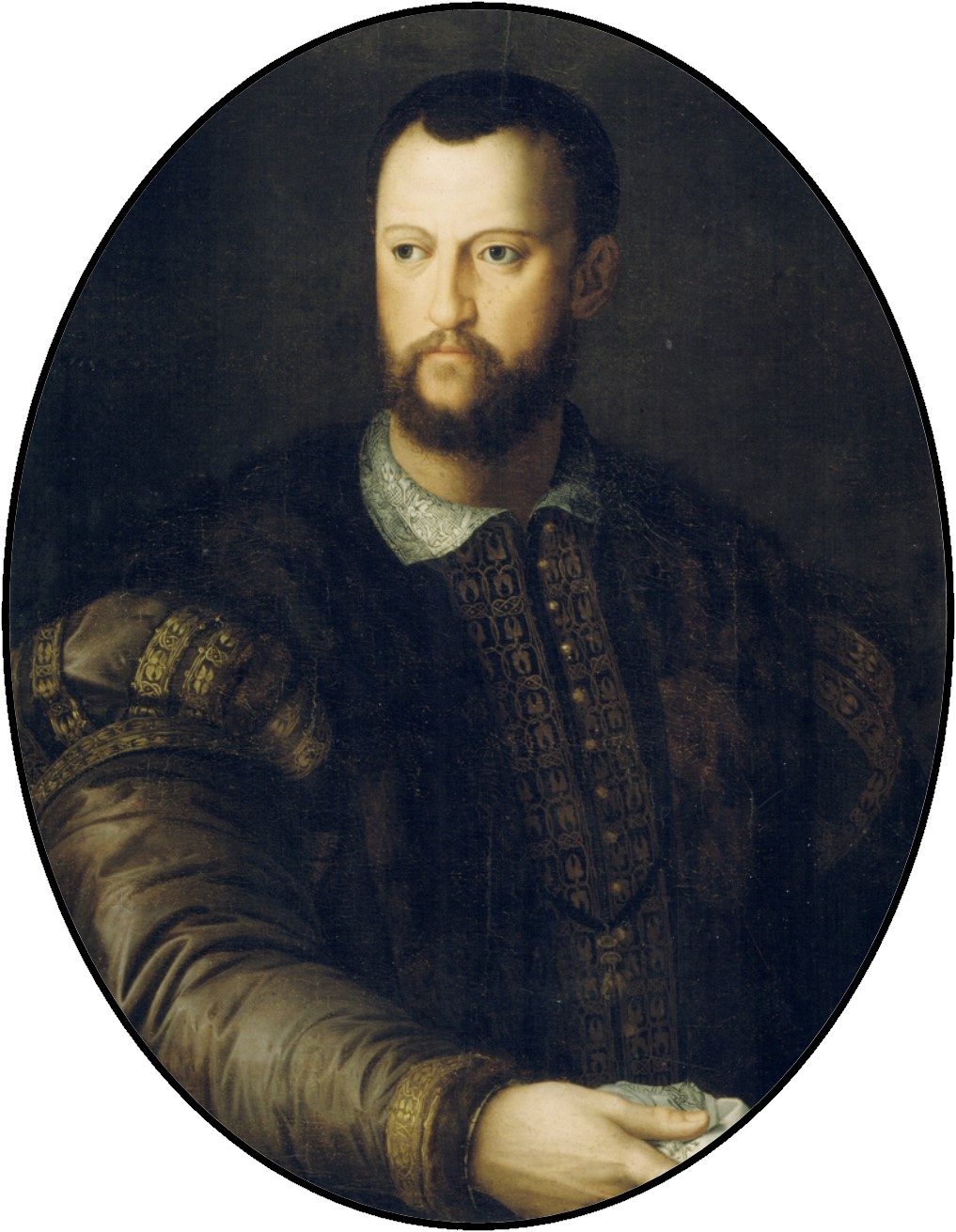
@cruzazul
Koeng Karl
Karl Marus var Otto [III] Barbanov
Charles Marius of Otho [III] Barbanov
r. 1655 A.H. – 1666 A.H. | r. 208 E.S. – 219 E.S. (10 years)
Karl, unlike his father before him, was handed a nation dying of famine and exhausted from war, with a restless nobility. By 1656, the Czena Confederation officially became defunct, as numerous states either left or were conquered, as in the case of the Principality of Curon in late 1655. Haense and the remaining states reformed into an alliance, which began to include non-human and pagan states, much to the ire of Karl’s nobility.
He was unable to reverse the military losses from before, and the allied coalition suffered numerous defeats, most importantly the Storming of Cyrilsborg and Siege of Ruriksgrad in 1662. Karl was able to keep the enemies from fully crossing the Czena River and entering Haense proper, creating many dug-out forts along the river in defense. He commanded much of the military works personally and left control of the city in the hands of his Palatine Franz Bihar.
By 1665 the war had reached a stalemate, and Karl remained on the defensive. The city did little recovery, and Franz Bihar maintained his work in suppressing liberal radicals popping throughout the city. Briefly in early 1666, the palace was stormed by peasantry, though beaten off by soldiers under command of Franz. Karl in 1666 died childless, as he never took a wife, and the state entered a succession crisis.

@Birdman
Koeng Franz
Franz Jakob var Henrik Bihar
Francis Jacob of Henry Bihar
r. 1666 A.H. | r. 219 E.S. (2 months)
Franz seized control of the government shortly following the death of his cousin, and shortly proclaimed him regent. Only after one month, he fully couped the state and proclaimed himself king before the duma could be called. Franz’s history in the capital and the loyalty of the military stationed there allowed him intense sway over the lords, who begrudgingly agreed to his accession. During his coronation, however, the city was surprise-attacked by a sizable blitzing force, and Franz was captured in the defense. Stating his refusal to bend the knee, he was executed by his captors, and the throne passed to his nephew.
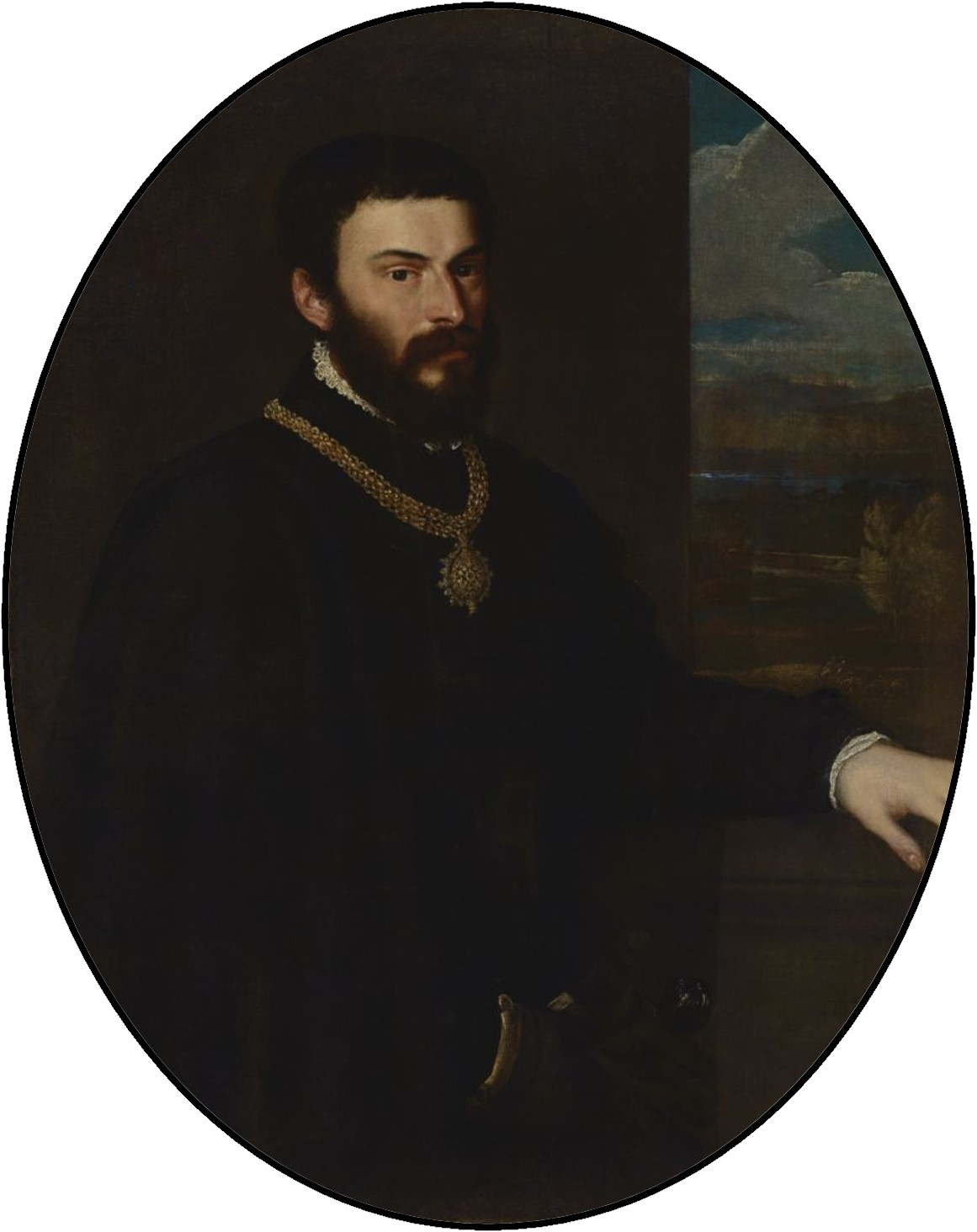
@Ark
Koeng Sigmar I
Sigmar Lothar var Robert Bihar
Siguine Luther of Robert Bihar
r. 1666 A.H. – 1682 A.H. | r. 219 E.S. – 235 E.S. (16 years)
Sigmar took the throne following the death of his uncle, to which the duma did not contest. He attempted a policy of appeasement with the heartlanders, and through diplomatic work, lifted the embargo on Haense and allowed grain shipment back into Markev. The city recovered from its recession and the economy went positive once again. With the famine relieved, the population slowly began to recover within the urban cities.
His attempts at military conquest, despite his success in diplomacy, was not as graceful. Sigmar received a damaging blow at the Battle of Karl’s Hill, and put ravaging repercussions upon the country. He swore under the Renatus state in 1678 and reformed an imperial state, formally ending all hostilities between the two countries. He allowed a freer reign for the nobility, and much of the land was granted or fell under control of powerful barons. Royal power suffered, and the nobility gained massive influence over the affairs on the government.
Sigmar would die in 1681 of a disease for the throne to pass to his son, Robert.
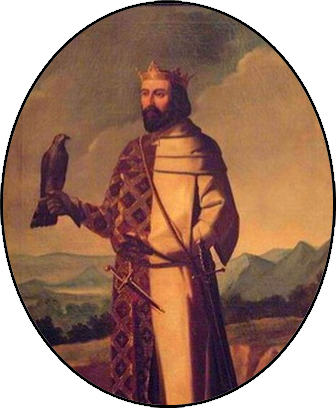
@JuliusAakerlund
Koeng Robert
Robert Lothar var Sigmar Bihar
Robert Luther of Siguine Bihar
r. 1682 A.H. – 1707 A.H. | r. 235 E.S. – 260 E.S. (25 years)
Robert Lothar Barbanov-Bihar (born 1666) was the son of Sigmar I Bihar and Sophia Chivay. Robert would marry Elizaveta Ruthern who would become his Queen-Consort. Robert’s long reign was mainly defined by the revival of Markev and the reclamation of Crown Authority by the central government. Robert removed the old councilors of his father and made a new council handpicked by him, which returned power to the king from the nobles. He would return the ducal title of Carnatia to the re-emerging House Kovachev and Henrik Kovachev who served in his government.
Robert participated in the Third Atlas Coalition War alongside Emperor Aurelius. This war saw the reclamation of the County of Ayr from the Arberrang pagans. Robert returned the lands to Marius Baruch in good faith. The rest of Robert’s reign was quiet and quite peaceful. Robert spent his time hosting feasts and festivals for his people getting to know them, both common and noble alike. For these jovial acts, he received the Moniker “The Kind”.
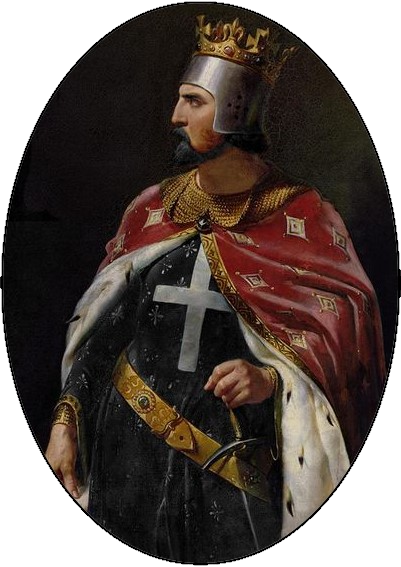
@Imperium
Koeng Marius II
Marus Demitriyus var Robert [I] Bihar
Marius Demitrius of Robert [I] Bihar
r. 1707 A.H. – 1719 A.H. | r. 260 E.S. – 272 E.S. (12 years)
Marus Demetrius Barbanov (born 1683) was the son of Robert I Bihar and Elizaveta Ruthern. Marus would marry Klaudia Vanir who would become his Queen-Consort. Marus began his reign in Arcus with a conflict against the Kingdom of Curon. Dimwitted Curonian Vassals could not tell where their land ended and where Haense’s began, which caused them to settle on Haeseni land North of the Haeseni Capital of Reza. King Marus requested a Parley with King Wilhelm, but the dolt ignored his request. King Wilhelm then accused Marus of planning to wage war on Curon using the mercenary group called the Reivers, and thus the matter was then taken up by the Imperial Government and Emperor Antonius. This culminated with the Warwick Resolution which ended the conflict between the pair who were on the brink of war. During Marus’ reign, he also reinstated the Royal Duma as a legislative and Advisory body for the nobility to have an active role in governance and formed the Marian Retinue, the Royal Kingsguard which is still used today.
The next issue Marus would encounter was the Adrian Conflict. In 1708, the Duma of Adria nominated King Marus as the new Duke after the abdication of Paul II. Marus now had to look over the city of Ves and the people of Adria, whilst his own people in Reza. Emperor Antonious and the Imperial State hated the people of Adria, and would send their men to harass them daily because they were thought to be harboring criminals and bandits.
In 1710, 2 years after becoming the Duke of Adria, Marus was informed of an attack on the Adria and city of Ves by the Imperial Prince Yury and his men. Marus would send a letter to Emperor Atonious demanding a trial for the rogue Prince, which was eventually held in the Imperial Capital of Helena. As the trial came to an end, clearly a kangaroo court and facade put on by the Emperor and his men, the Adrians who were attacked were called up before the Emperor and sentenced to death. Marus, shocked by the display of madness and disregard of law by the Emperor, attempted to intervene which led to a skirmish in the palace. Many were killed and injured, including Marus who took a blow. Marus would then send for peace with the Emperor in hopes of avoiding a civil war, this was accepted by the Emperor, but Adria did not have as much luck. The City of Ves was sacked by the Imperial army led by Prince Yury who set the city ablaze. This is remembered as Marus’ biggest folly, allowing his people to be attacked by a merciless oppressor.
For several years after the Yury trial, a period of peace would set on the land. After numerous acts of tyranny conducted by the Emperor and the Empire of Man, an Aeldenic ship would arrive on the coast, harboring Josef of Horen-Marna. He would confront Marus in his throne room, talking of rebellion and a plot to make Josef the new Emperor take hold. This culminated, after many meetings in Nenzing, with the Nenzing Proclamation. Emperor Antonious would dissolve the Empire of Man and two Emperors would be crowned, resulting in the War of Two Emperors.
The Marnan forces along with Haense saw a few decisive victories in the beginning, but their luck would run dry at the Siege of Helena. This was the turning point in the War where the Marna forces began to collapse on themselves. Soon, the only foe left standing to the young Emperor Godfrey II was the Kingdom of Haense and King Marus.
In 1719 still in the midst of war, the tired King Marus, who was stressed from war, was assassinated by a disgruntled Hekor Barrow in the Prikaz Palace. The assassin would later be killed by Prince Otto And Godfric Alimar. While Tumultuous, King Marus’ reign can be looked back on fondly. During this time, the people of Haense were united in their pride for their nation, and united against the Tyranny of the Empire and their allies. While Ves and Curon turned their backs on the cause like the cowards they were, Marus and the people of Haense fought back against all odds.
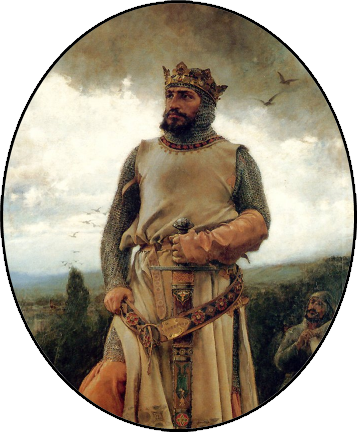
@Emenzi
Koeng Andrik III
Andrik Lothar var Marius [II] Bihar
Andrew Luther of Marius [II] Bihar
r. 1719 A.H. – 1746 A.H. | r. 272 E.S. – 299 E.S. (27 years)
Andrik Lothar Barbanov-Bihar (born 1710) was the son of Marus II Bihar and Klaudia Vanir. Andrik would go on to Marry Milena Carrion who would become his Queen-Consort. Andrik’s reign was marked by unending wars and the collapses of human institutions around Haense. Andrik inherited the War of Two Emperors from his father, and after a few years of hard war he would make a deal with Emperor Godfrey II to vassalize under his newly formed Holy Orenian Empire, and in return he preserved his kingdom. However, peace would not last as the Three Months War, the Lorraine Revolt, and the Rubern War would soon follow.
This time is referred to as The Troubles, during which Andrik would originally back Adrian Sarkozic after the fall of the Empire and the disappearance of Godfrey II and his successor. This backing did not last however, as soon he would turn his support to Alexander de Joannes who subsequently would become Alexander II, Emperor of the Holy Orenian Empire. Andrik gained his moniker “The Unyielding” for his staunch resistance to unstable imperial influence in the Haeseni affair.
Andrik III is the longest reigning King in Haeseni History, and oversaw the most prosperous time, the Golden Age of Haense. Andrik was beloved by his people, common and noble alike, for his resistance to imperial centralization and his jovial attitude. He promoted the noble class and gave them responsibility within the government, while also lifting up the peasantry and offering them a better life through service to the Crown. This was, in a sense, a Renaissance time in internal Haense, as many statesmen, authors, and playwrights came out to reinvigorate Haeseni culture. As the world crumbled around the Kingdom, Haense had a sense of security and peace. Even through the Wars, Andrik gave the people a secure stable Government and Leadership to look up to.
In 1746, Andrik would be wounded in a hunting accident. He would die in the days to come.
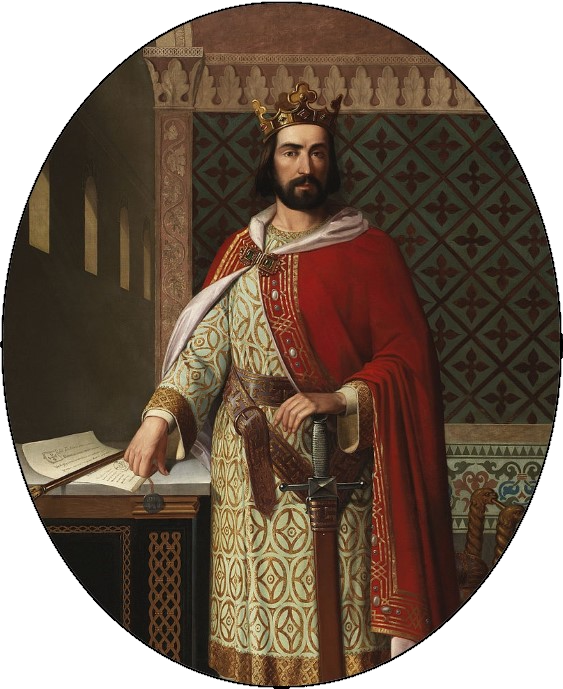
@AndrewTech
Koeng Andrik IV
Andrik Petyr var Andrik [III] Bihar
Andrew Peter of Andrew [III] Bihar
r. 1746 A.H. – 1753 A.H. | r. 299 E.S. – 306 E.S. (7 years)
Andrik Petyr Barbanov-Bihar (born 1729) was the son of Andrik III Bihar and Milena Carrion. He would later go on to marry his cousin Maya Barbanov-Alimar who would become his Queen-Consort. Andrik’s reign was rather short compared to his fathers, and spent most of his time focusing on the Rubern War and the internal toil between the Feudalists and Centralists. The Rubern War was in gridlock, as neither the morsgradi coalition or the Empire could get the upper hand. During this time, Lord Palatine Markus Kortrevich stoked the embers of infighting, apparently attempting to silence the Feudalist Ideas by using the Rubern War to halt Duma entirely, unbeknownst to the Lord Speaker Sigmar Baruch. Andrik tried to mend the bridges burnt by his Palatine by elevating Sigmar Baruch to a Duchy and Erwin Barclay to a County, while also elevating Markus Kortrevich to a Margrave. Andrik also oversaw great success in the military through his reforms.
In 1753, Andrik IV would die after being wounded fatally during a rescue mission to save his wife, Queen Maya, from a group of ruffians.
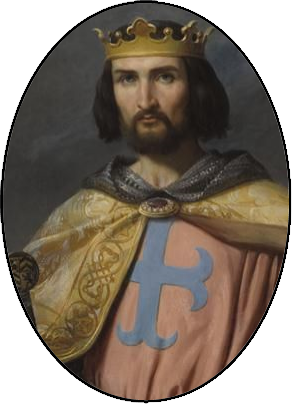
@seannie
Koeng Sigismund II
Otto Sigismund var Andrik [IV] Bihar
Otho Sigmund of Andrew [IV] Bihar
r. 1753 A.H. – 1776 A.H. | r. 306 E.S. – 329 E.S. (23 years)
Otto Sigismund Barbanov-Bihar (born 1748) was the son of Andrik IV Bihar and Maya Alimar. He would go on to marry Viktoria Ruthern who would later become his Queen-Consort. Sigismund spent half of his reign under the Regency of Tiberius Barrow until his death, then Prince Otto Sigmar Alimar. During the later half of his Regency under Prince Otto, the Feudalist nobility made a coalition, called the Valwyck Pact, to check the power and remind the heavily centralist Prince Otto that he was only the Head of State until Sigismund came of age. Prince Otto and the leader of the Valwyck Pact, Duke Petyr Baruch, came to an agreement called the Valwyck Compromise that alleviated fears from both sides as it ensured the rights of nobility and promised not to strip nobility without proper cause, and in turn the nobility would support the regent completely.
Sigismund spent most of his reign fending off the Scyfling Invasion under Bralt the Boar, though he would ultimately die before ending the invasion. During his reign, Sigismund and his now Lord Palatine Petyr Baruch would see the end of the Rubern war, gaining back the old Alimar territories, but readmitting this land became an issue as the Imperial and Haeseni authorities argued over who had the jurisdiction of the regained land.
Tensions were constantly high, and rising, with the Imperial Government as Sigismund, Petyr Baruch, and the Lord Lieutenant Nikolas Barbanov worked to find compromises with the aggressively centralized Imperial Government. Concessions were made to improve stability, including agreeing to a single peerage system which would be a main issue in the years to come. This issue greatly outraged the boisterous Sigismund, who often would make inflammatory statements that were borderline seditious about the Imperial Government.
After the outbreak of the Sutican War, where Sigismund was not informed prior by the Imperial government and Emperor Peter III, Sigismund wished to remain neutral, while rumors circulated of rebellion against the tyranny of the terrible Emperor. However, his council refused to allow this to happen, seeing the needs of Haense over personal grudges, unlike Sigismund, which caused Sigismund to eventually end his life. While his love for his people was great and blinding, his brashness and irrationality compared to that of Marus II and, without his counsel, may have bogged down Haense in a futile war for decades to come.
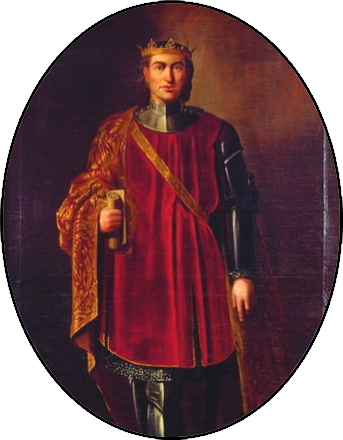
@CaptainHaense
Koeng Josef
Josef Sigismund var Sigismund [II] Bihar
Joseph Sigmund of Sigmund [II] Bihar
r. 1776 A.H. – 1806 A.H. | r. 329 E.S. – 359 E.S. (30 years)
Josef Sigismund Barbanov-Bihar (born 1769) is the son of Sigismund II Bihar and Viktoria Ruthern. Josef is married to Isabel Baruch who is now his Queen-Consort. Josef is the second child king in a row, ascending to the throne at age 7. Josef’s Regent was appointed by Petyr Baruch, Konstantin Wick served as his Regent and Lord Palatine after the stepping down of Petyr Baruch from the position. After his father’s death, there was a sense of division among the people. Some wished to fight against the Empire, others wished to stay for the greater good. Josef’s first task was to amend the division between the people, which was done after the Pontiff James II demanded Emperor Peter III end the war against Sutica.
The next task Josef and his government would face was against the Scyfings. During the first years of his Kingship he would beat the Scyfling horde and end the Scyfling War. Peace did not last long however, as now the Inferi waged war across Arcas.
Josef would take up the sword and shield of his father, and the father’s before him as he led the resistance against the Imperial Government’s fight for centralization and strippng of Autonomy from Haense. On the 11th of Amber Cold, 1786, Empress Anne I granted Haense it’s freedom after a brief meeting in the Novellen with King Josef, expelling them from the Empire. For months after, celebrations ran rampant through the streets and praise was given to Josef and his Government for gaining independence from the Empire. Josef then quickly and efficiently set up a self-sustaining government for an independent Haense.
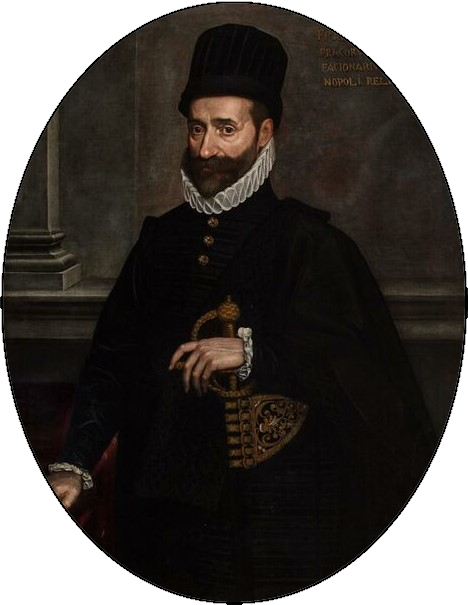
@Rudi
Koeng Heinrik II
Heinrik Karl var Josef [I] Bihar
Henry Charles of Joseph [I] Bihar
r. 1806 A.H. – 1837 A.H. | r. 359 E.S. – 390 E.S. (31 years)
Henry Charles Barbanov (Common: Henry Charles; High Imperial: Henricus Carolus; New Marian: Heinrik Karl), (11 Amber Cold, 1791–present), regally known as Henry II, is the eighteenth King of Hanseti and Ruska. Henry was born as the eldest son of Joseph I of Haense and Isabel of Valwyck thus making him Grand Prince of Kusoraev. During his tenure as Grand Prince; he assumed the position of Prince-Regent following a heart attack that incapacitated his father. King Josef I would die several months after his original incapacitation, causing the grand prince to ascend to the crown at the age of fifteen.
In the year 1805, King Joseph I, the father of Henry, fell into a coma following a heart attack. At the time, the Grand Prince was only fifteen, having just reached majority. The Prince therefore received the title of Prince-Regent to govern in the name of his father.
The reign of Henry II as King of Hanseti-Ruska began with an auspicious sign. During the coronation of the young king, as he was imbued with the Biharian Crown a large tremor shook the cathedral and all of Almaris. After a few moments, peace was restored and the king took the shaking as a sign of good-will for his reign. In the aftermath of the ceremony, it was revealed that one of the attendees, the Rex of Krugmar Zhot’rax, had arrested the diplomat of Elvenesse as an assassin. The newly-crowned King allowed for the Rex to take this diplomat back to Krugmar to be dealt with appropriately.
The first major act in the regency of Prince Henry was the Haeseni involvement in the 1806 Diet of Karosgrad–a meeting of the clergymen of the Church of the Canon to stand as a jury for the accusations against controversial High Pontiff Owyn III. During the diet, the clergy was divided into two major- and near-equally numbered factions: the faction in favor of maintaining the current pontificate (composed mostly of Albarosan and Orenian clergymen, led by Alfred Barclay, Patriarch of Jorenus), and the faction opposed to Owyn III’s pontificate (composed mostly of Haeseni clergymen, led by Cyril Cardinal St. Publius). Due to several members of the opposition faction being absent during the vote of conviction, the high pontiff was found not guilty by only a handful of votes.
It was upon this vote that Henry and the representative of the Holy Orenian Emperor, Archchancellor Franz de Sarkozy, stood from their seats and demanded they be made co-chairmen of the diet. The chairman of the Diet, Patriarch Alfred, refused to relinquish his power, as the diet was a Church affair. When the patriarch refused the demands of the king and the archchancellor, the soldiers of both nations (present to quell the possibility of riots, as had been an issue in previous church events under Owyn III) marched into the Basilica of Saint Henrik to enforce the demands of the two men.
As the soldiers of the Haeseni Royal Army and the Imperial State Army rushed into the basilica, the militia of the Church rushed to defend the loyalist clergymen, who refused to revoke the decision that had been voted for. The clergymen opposed to High Pontiff Owyn were escorted from the building by soldiers of the prince regent. As the clergymen of the opposition were escorted from the building, the loyalist clergymen attempted to leave, which the king and archchancellor ordered not to happen until another vote was cast in their favor.
The loyalists clergymen began to resist with violence, shouting that they would rather die martyrs than have the nations of Haense and Oren intervene in the trial of a high pontiff. The soldiers of the Haeseni Royal Army and the Imperial State Army reacted quickly, with force, causing the deaths of several clergymen. All those not killed were placed under arrest; excluding then-Vice Chancellor of the Church, Manfried Cardinal Providentia (future High Pontiff Jude II, successor of Owyn III), whom escaped with a collection of fellow clerics and holy knights.
 Keong Sigismund III
Keong Sigismund III
Sigmund Karl var Heinrik [II] Bihar
Sigismund Charles of Henry [II] Bihar
r. 1838 A.H. – 1873 A.H. | r. 391 E.S. – 442 E.S. (35 years)
Sigismund Karl Barbanov-Bihar (Common: Sigismund Charles; High Imperial: Sigismundus Carolus; New Marian: Sigmund Karl), (1815-1873), regally known as Sigismund III and remembered as Sigismund the Golden was the nineteenth King of Hanseti-Ruska and the first born son of King Heinrik II and Mariya of Aurveldt. With his reign lasting 35 years, Sigismund III is the longest reigning monarch to have ruled over Hanseti-Ruska.
Sigismund Karl Barbanov-Bihar was born on the 9th of the Deep Cold, 1815, in the capital of Haense, the Royal City of Karosgrad, as the eldest son to Heinrik II thus making him the Grand Prince of Kusoraev, the heir apparent to the Kingdom of Hanseti-Ruska. Some months after his birth, Sigismund’s mother, Queen Mariya, was mysteriously murdered in the King’s office in 1815, however this was later revealed over a decade later to be a convoluted means to end her marriage and escape to the Orenian Empire by faking her death.
During his early childhood, Sigismund was noted as being a recluse and rarely in the public light, instead keeping to the Royal apartments of the Nikirala Palace. Whether this was done at the behest of his father, for fear of losing his son similarly to Queen Mariya, or if it came around due to Sigismund’s own wishes, is unclear but it undoubtedly had an effect on the future King. Due to his limited access to the wider world, Sigismund had few childhood friends besides his own sister, Princess Petra, to whom he was incredibly close to throughout their entire lives. With the kind princess being his primary source of companionship, and with little influence of his stern father on him as he was busy with rulership, Sigismund grew up a far more temperate figure than King Heinrik II.
Sigismund received an education befitting a future King, being taught extensively in the subjects of politics, history, warfare, stewardship, and theology. Under the tutelage of future Grand Maer and Aulic Envoy Feodor May primarily, Sigismund progressed well with all his lessons, being an especially studious child and showing a great aptitude for writing himself, being able to convey himself well in the written word from an early age.
By far Sigismund’s favourite topic of study was history, but not for the academic practice of it. Instead he enjoyed the stories it told of bygone ages and the romanticisation of tales, taking a particular interest in the retellings of knights, folk stories and legends. Sigismund brought his passion for these into constructive changes and literary works later in his life once he was King of Hanseti-Ruska.
Though not an especially gifted swordsman himself, Sigismund was trained by one of the finest of his generation, Ailred, Duke of Vidaus, in the later half of his childhood after getting a late start. With the late Duke’s guidance, Sigismund became a capable enough swordsman and tactician, putting both to show in his reign later during the Urguani-Orenian War.
Sigismund III married Emma Kortrevich in the Basilica of Saint Henrik in 1836, officiated by the High Pontiff Everard VI. Wed two years before going on to become King, as the Grand Prince of Kusoraev the ceremony was large and lavish but by no means a surprise as the two had been courting for some years prior. The match was widely accepted as a loving and well-placed one with Emma being the sister of Count Jan Kortrevich.
Sigismund became the King of Hanseti-Ruska at the age of twenty-three following the abdication of his father, Heinrik II, in the ‘Edict of Abdication of 391 E.S’[1] in 1838, the second time ever a King of Hanseti-Ruska has abdicated and the first time for non-illness related reasons. Whilst an unusual occurrence, and potentially problematic for Sigismund that a former King still lived to be a claimant to his new throne, Sigismund was accepted very quickly and with little controversy being widely more popular than his controversial father. Sigismund III’s coronation took place in the Basilica of Saint Henrik by High Pontiff Everard VI in 1840.
 Keong Karl III
Keong Karl III
Karl Sigmar var Sigmund [III] Bihar
Charles Siguine of Sigismund[III] Bihar
r. 1873 A.H. – 1905 A.H. | r. 442 E.S. – 474 E.S. (32 years)
Karl Sigmar Barbanov-Bihar (Common: Charles Siguine; High Imperial: Carolus Sigumarid), (1846-1905), regally known as Karl III was the twentieth King of Hanseti-Ruska and the second born son of King Sigismund III and Emma of Jerovitz. With a reign of 32 years, Karl III is the second longest ruling King of Hanseti-Ruska, tied with his grandfather Heinrik II.
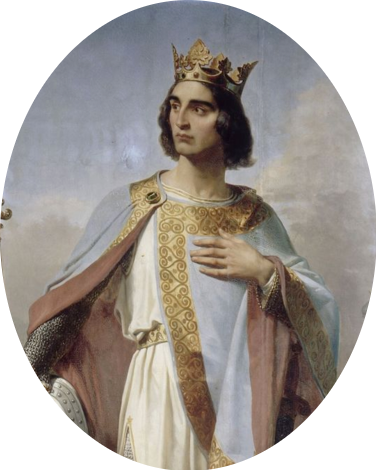 Keong Georg I
Keong Georg IGeorge Sigismund of Charles[III] Bihar
r. 1905 A.H. – Present | r. 474 E.S. – Present (Incumbent)
Georg Sigismund Barbanov-Bihar (Common: George Sigismund; High Imperial: Georgius Sigismundus; New Marian: Georg Sigmund), (1872-Present), regally known as Georg I is the twenty-first King of Hanseti-Ruska and the first born son of King Karl III and Amadea of Susa.
Georg married Esfir of Jerovitz in the Basilica of Saint Henrik in 1902, officiated by Matriarch Katerina of Jorenus and Iosif Bishop Valwyck. The two had long known to hold a mutual affection for one another but only wed when Georg was at the age of 30, an age that was unusually high for an heir to the throne to wed. There was speculation that the union was delayed for a number of years as Esfir was unsure of her willingness to one day be Queen of Hanseti-Ruska.
In keeping with previous weddings of Grand Princes of Kusoraev, Georg and Esfir’s wedding was grand with a large ceremony followed by a meal and presentations of gifts. The union was celebrated for a number of days which saw the Haeseni holiday Barovifest paired with the merriment as well as a celebratory joust and a tour of all the vassal keeps from the newly weds.
Summaries of monarch lives by Piov & CaptainHaense and later revised by Zanthuz & DrewDOOD with help from the LOTC Wikipedia
Consorts

Koenas Reza
Teresia Karovius Kovacius
Theresa Kovachev of Turov
b. 1582 AH – 1586 AH | b. 135 ES – 139 ES
Reza Elizaveta Kovachev (Common: Theresa Elizabeth Kovachev), or Reza of Turov, was a Haeseni noblewoman and the first inaugural consort serving from 135 till her husband’s deposition in 139. Reza hailed from the senior Kovachevs of Carnatia and her union with the then crown prince came to fruition by the machinations of her father, the Duke of Carnatia. While only serving a paltry four years as consort, she exerted great influence over Haeseni politics for decades as queen-mother throughout the reigns of her son Marus I and her grandchildren.
From her early age and as the eldest of five, Reza promoted a sense of maturity and intellect beyond her years. Tutors and governesses alike who attended the youth proclaimed her oft to be the most ladylike of the five Kovachevs, and most sophisticated in nature. Her adornment of other cultures exterior to Haense hailed from her education in the imperial court; a place she insisted upon being brought up in and spent most of her youth within. Her tendencies and interests leaned greatly towards the imperial court over any other, and she thrived in its halls. At the conclusion of her education, Reza returned home at the behest of her family. It was to much strife that she departed the court she accustomed herself to, but her turmoils were brought with an overwhelming sense of joy when informed of her marriage to the Grand Prince of Kusoraev, Andrik Otto.
Her wedding, a most frequent affair discussed in recent times, transpired in 135 with much controversy surrounding it. Although praised by many in the contemporary decades, Reza’s wishes to plan a majority of her own wedding and its further revelries was to the dislike of many. Denial came swiftly for it was not of the Raevir tradition of the time, and she sought to design her own dress. Her dress, most costly in nature, received a great deal of criticism and her reign as consort commenced with harsh beginnings.
Despite her position as consort to Andrik II, the Deep Cold Uprising came to be rejected by the Kovachev family during the winter of 139, leading to her leaving the royal capital under disguise and guard. Her short-lived marriage with Andrik was generally unhappy, as Andrik had openly despised his wife with numerous gestures making her feel un-welcomed. She would return to Haense later the next years, where she held his greatest position of power during the regency of her son led by her brother-in-law, the palatine Karl-Sigmar, with whom she held a fierce rivalry with in court.
Together with her brother Heinrik, she helped orchestrate his downfall from the government upon the majority of her son and in his stead place Heinrik as palatine and leader of government. Her close connections with the southern imperial court helped soothe relations following the disastrous Haeseni rebellion, and for nearly half her tenure did she stay in the private estates of the imperial royalty.
Though her brother fell from power and grace only five years later, Reza would command such a presence in the Marian court that, as quoted from the poet Sir Stanimar Vyronov, “[…] she sat next to him [Marus I] as equal, with head held above as if she was the regnant, and he the consort.” Indeed, till her early death at age thirty-three she maintained a chief role in all courtly proceedings during the reign of Marus I, herself meeting with foreign dignitaries and political powers.
Upon passing, numerous places and towns were named after her, including the future royal city of Old Reza, where court would be established beginning at the reign of Robert I and through the reigns of Marus II and Andrik III. Her name would be used again for the reformed city to New Reza, surviving through the reigns of Andrik III, Andrik IV, Sigismund II, and Josef I. Her second name, Elizaveta, became popular in the time of her reign as consort and Queen-Mother, and continued to hold relevance as the most prestigious and traditional name for Haeseni women.

Koenas Adelajda
Adela Karovius Rutorius
Adelheid Ruthern of Metterden
b. 1595 AH – 1611 AH . | b. 148 ES – 164 ES
Adelajda Isabel Ruthern (Common: Adelheid Isabella Ruthern), or Adelajda of Metterden, was a Haeseni noblewoman and the second consort of the realm, serving from her marriage to Marus I in 148 till his death in 164. She originated from Karvoic lineage as a woman from the House Ruthern, and the first Ruthern Queen in the realm, oft mistaken to be Elizaveta of Metterden who only presided over the Haeseni lands as duchess consort.
She was born in the year 1583 with a twin sister, Abrielle, and three brothers; Boris, Tuvya, and Viktor. Her attachment to family was full of endearment and she adored her sister until her adolescent years. Courtly affairs became the peak of her attention from as early as the age of six, alongside her sister who seemed inseparable from her. The opportunity of queenship became announced by her mother and father, and the two were separated by their growing rivalries against one another. To her fortune, Adelajda was the first noticed of the pair of sisters and rose to the regal position upon her marriage to the King Marus I.
The young Ruthern consort was no short in the lavishness of her predecessor, Reza of Turov. Diamonds decorated the finely-sewed dress across it all, and received ill favor similarly. At the time of her marriage in the St. Karlsburg Cathedral, the Haeseni tensions were high between royalty, commonfolk, and nobility. Most of the original design had been cut short of its cost, but not enough to satisfy the spectators.
With her ascension, she had a minimal amount of acclamation in regards to courtly or palatial matters. In the event that a meeting with her husband would occur, she avoided attendance and awaited him exterior to the meeting room until he departed. Their private relations were written to have been cordial but with distant respect. She frequented quarrels with her courtiers, and disregarded most duties as well as etiquette. “She was very much a Queen in the sense of her expenses and self-indulgence,” as quoted by Northern Geographical Society (NGS) member, Henriette Marna de Rafal. The Haeseni Court, still in its early stages, had been no short of an opera house in dramatics from the consort. Despite her issues with the other Haeseni noblewomen, she was of acquaintance with the Princess Juliya, the aunt of Marus. Juliya was not favorable either, as per hushed conversation amongst the ladies and servantry.
The duties of queenship acquired by her predecessor were disregarded, more so throughout the Great Northern War. She garnered hatred for Courland, which she expressed openly amongst any of those within court. Many who did harbor favor towards the consort came in liking of her through the mutual abhorrence of Courlandic people. In the midst of her reign, and allegedly in a majority of it, rumors of deceit consumed Adelajda’s daily life. Others’ residencies, apart from the royal palace, became her place of solace; which did not include anywhere within the proximity of her sister Abrielle, whom she never mended relation with. Her tenure as queen concluded in 164 as her spouse surrendered at the loss of the war and the royal family was sent into exile.
Banishment from the land left her without her jewels and titles, or any other pleasures she surfeited. Adelajda toiled with her expulsion, as well as keeping hidden from assailants. With a previous expensive and flamboyant manner of living, the sudden change left her to try and sneak superfluities back into the family’s new life. Her attempts came to a halt as she fell ill and passed within the week of attaining the ailment.
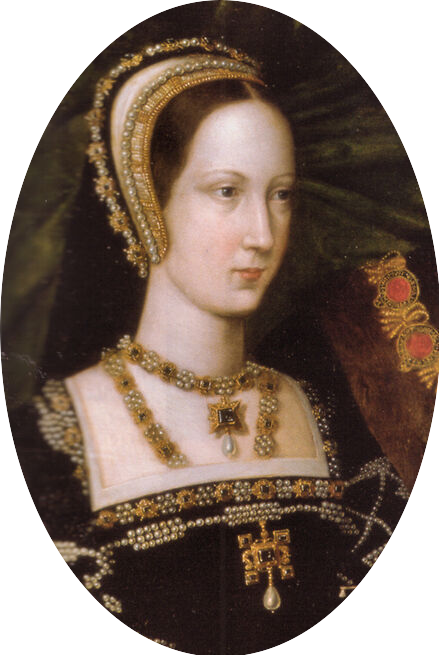
Koenas Elizaveta
Elizaveta van Kuriland
Elizaveta Staunton of Courland
b. 1613 A.H. – 1619 A.H. | b. 166 E.S. – 172 E.S.
Elizaveta Mariya Staunton (Common: Elizabeth Maria Staunton), or Elizaveta of Kuriland, was a Curonian noblewoman who served as consort of Stefan I for six years from 166 till her violent death in 172. Her marriage with King Stefan came from diplomatic concession as consequence of the Greyspine Rebellion, and through its duration, it was an openly unhappy one. Her relationship with the Staunton family left her infamous throughout the realm and unpopular with both the nobility and common folk.
Raised as the princess Royal of Courland, Elizaveta’s education did not lack in any field necessary befitting a woman of her high station. Her father, King Tobias I, insisted on her schooling be of the utmost standard possible from an array of tutors across the land. She derived a great deal of interest in the arts and music, but more peculiarly management, politics, and history. To her fortune, she was the twin to her brother and the heir, Joseph Alexander, and attended many lessons of leadership alongside him. Her luck and wits combined led to her being one of the most intelligent of her six siblings.
As a ramification of a series of diplomatic transactions after the Greyspine Rebellion, the last of those to be informed of the arranged marriage was the princess. Her arrival in the Haeseni lands came shortly after, to which she was notably met with dislike and distrust from her beginnings. Her foreign coiffures and dresses were not taken into the style of the ladies but instead shunned. She was an enemy, despite the diplomatic attempts, in foreign territory.
Throughout the entirety of her six years, she lacked the capabilities to persuade any Haeseni common folk or nobility alike in her favor; most notably, Elizaveta and her husband found no love for each other and spent little time in each other’s presence. Towards the end of her reign, Elizaveta frequented the imperial city as an escape from her unwelcoming home.
Two miscarriages soured their already tumultuous relationship, and after rumors of affairs between herself as Lord Peter de Mardon of the imperial estates, she was unofficially exiled from her husband’s personal manors by 172. In only a few months, she was killed by a mob when traveling the roads near Metterden, her body unceremoniously beaten and burned by the anti-Curish party.
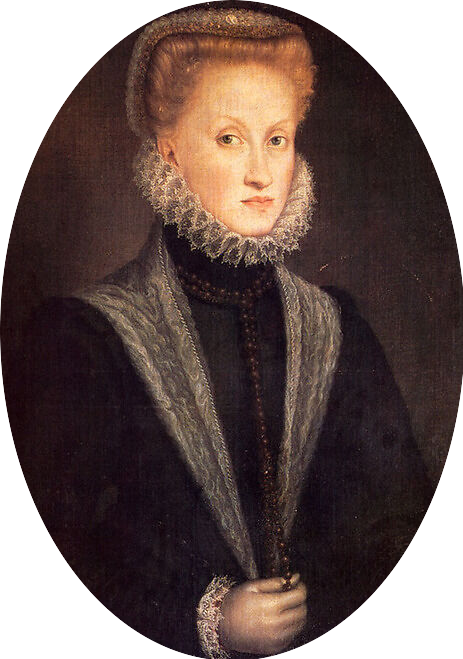
Koenas Katherina
Katherina van Karnatiya
Catherine Kovachev of Carnatia
b. 1624 A.H. – 1627 A.H. | b. 177 E.S. – 180 E.S.
Katherina Reza Kovachev (Common: Catherine Theresa Kovachev), or Katherina of Karnatiya, was a Haeseni noblewoman who served as consort from 177 till the death of her husband Otto I in 180, a paltry three years. She is, most undoubtedly, one of the least recorded Queens of Haense in light of the others.
Katherina was rarely seen within public eye and strayed from any duties oft believed to be required of a Haeseni Queen, such as courtly and palatial matters. Her ideals did not compare to that of her predecessors, and her education was median to other Haeseni noblewomen. Katherina played a variety of instruments and wrote to her relatives when the palace lacked any visitors. Diplomats who did come by the royal’s home noted that Katherina was either not present or sat attentively at her husband’s side and listened with polite interest in the meeting at hand.
To the common people of Haense, she was nonexistent. Katherina was regarded by a courtier of the time as “[…] simple, strict, but seemingly unaware.” Her relationship with her spouse, Otto I, was not believed happy or unwanted, but neutral with both garnering a mutual respect for one another. In no means was she considered disagreeable. Her character came as fair and gentle, and nearly all those who did know of her in close relation (minimal as it may be) remarked her to be a most beautiful, wondrous woman with humility of a saint. Her marriage had been political to no doubt, but the knowledge of duty and a mutual cherishment of their kingdom led to the lack of arguments or issues between the pair.
Katherina did not live long after her tenure as Queen, and was overcome with an illness in the night. For weeks on end she suffered minor symptoms noted by the court physician, but none of which subsided with their appointed remedies. On the few days she managed to leave her bed, Katherina was seen in the throne room or about the public spaces of the palace to converse with passing courtiers who blessed her and prayed for her recovery which came not. She was buried within the Haeseni crypts among the other Kings and Queens, and thusly a peaceful rest.
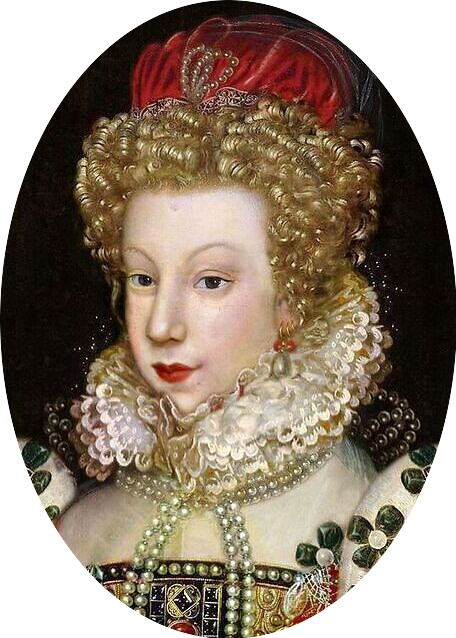
Koenas Eleanor
Eleanor van Lotharingiya
Eleanor d’Amaury of Lorraine
b. 1627 A.H. – 1644 A.H. | b. 180 E.S. – 197 E.S.
Eleanor Aleksandra van Amarey (Common: Eleanor Alexandra d’Amaury), or Eleanor of Lotharigiya, was a Auvergnian noblewoman who served seventeen years as consort from 180 till 197. She was the middle child of the “Lotharingia Sisters”; three sisters who were married into reigning positions – thus all becoming monarchs – in a short period of time. Eleanor was the daughter of John I, King of Lotharingia, and his consort Charlotte of Alstion.
As a Princess of Lotharingia, she was granted superior education by her parents in Aeldinic courts. The numerity of her tutors led to her skills in dancing, singing, and other fine arts of the time to which she excelled. Her character became clear from a young age; prideful, amiable, and resilient. She remained confident in her abilities by all means.
Upon her return from Aeldin, Eleanor sought to find herself a proper suitor and grew distant from her mother in finding that she had not done so. Without a marriage, she settled to find others as a possibility to her. Her mother, although lacking in finding her a match, garnered one for her elder sister, Marie, instead, to the crown-prince of Courland. It is said Eleanor turned to her brother, Lothar Augustus, for assistance on the matter, and asked for him to rearrange the marriage to be in her favor instead. There was never a change for her to marry the crown prince in her sister’s place.
Her primary goal became finding a proper suitor, leading her to eventually attempt marriage with the Emperor of Oren, John V. In her place, and through an enemy’s schemes, her younger sister Claude was betrothed. Although to her dismay, she would wind up with a marriage to the King of Haense’s cousin, Otto Georg. A sense of defeat claimed Eleanor as her sisters were both to be consorts, while she hardly a princess in title. Through a rapid succession from the death of Stefan I, who garnered no sons, and Otto I’s abdication after receiving the title as King of Haense, Eleanor became overjoyed with her newfound role as the crown princess to Haense. She, too, would reign like her other sisters.
Upon her ascension as the consort of the King, Eleanor desired to become a fashion icon of the Haeseni people. Frequently, the Queen’s styles would change and many of the courtiers soon followed. She was a supporter of the war against the House of Romstun, in spite of the grievances Haense faced. Regardless of her being a foreigner to the Haeseni lands, she tended to her duties of queenship to the utmost extent and was praised greatly for it.
Exterior to her queenly duties, her family’s land had fallen through the years and their last remaining land was dissolved. Her frustrations were not hidden as she turned every corner to attempt at keeping the title Duchy of Lorraine from its dissolution, and she openly staked her claim for it. In turn to her claims, she received the flayed skin of her brother, Hughes. She was never able to receive the title as Archduchess of Lorraine, or as later requested, ownership of the city of Metz– for Oren fell before such could be granted. Her tenure as the consort of Haense ended with Otto II’s deteriorating health in 1644.
As the dowager, she left behind the Hansetians and returned to the lands where she was previously educated. She settled within the Kingdom of Banardia for the rest of her years, until her assassination by poisoning in 1669.
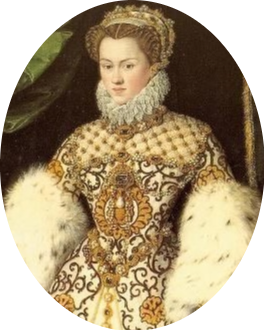
Koenas Ingrid
Ingrid van Sarkoz-Ulgaard
Ingrid Sarkozy-Ulgard of Ulgard
b. 1644 A.H. – 1655 A.H. | b. 197 E.S. – 208 E.S.
Ingrid Katerina Sarkozic-Ulgaard (Common: Ingrid Catherine de Sarkozy–Ulgard), or Ingrid of Ulgaard, was a Haeseni noblewoman who served as consort for eleven years from 1644 to 1655 when her husband Otto III passed in office. She was the first noblewoman to hold a princely title, as the Princess of Ulgaard.
The upbringing of Ingrid was met with a time of peace in Haense, and she was able to spend her days freely on the streets of the people when her family visited the kingdom’s capital city. Her education had been no short of suitable for a Sarkozic, especially as she were to become the titular Princess of Ulgaard. It is often rumored her to have been a vassal, but she held the title in name rather than in land. Her family’s high standing led to the arrangement of her marriage and she married the Prince Otto Stefan, who later became King Otto III. Her marriage, held in the newly constructed capital of Markev, had been widely celebrated across the land and filled more joy into the peaceful air. She insisted her wedding dress be modest and of traditional fabrics to the Haeseni people, to represent them in her utmost possible ways.
In the early years of her tenure, Ingrid became popular amongst the commoners in immediate fashion. It had been said that not a day went by without seeing the queen with her people, inviting them to sit and converse even if they were not close to her station in the slightest. If she had not been talking to the Haeseni people, Ingrid tended to duties in charity work such as providing necessities for those unable to afford or receive it. When in the palace, rare as it was for her person, she worked with diligence on the planning of events and other revelries with her chamberlain. The streets were no short of festivals and the palace no short of dances.
Similar to her husband, Ingrid funded the arts and theatrical work; inviting some scholars and artists to visit the palace or to work at her many events hosted if they wished to perform at a more renown venue. She too studied the work of seamstresses closely, and found a style of her own that almost all Haeseni ladies followed suit in. Ingrid wore furs around the cuffs of her sleeves and on the rims of her shoulders, with colors of winter such as blues and whites. Among all of it, she supported her husband in his endeavors wherever they might have been, using her fashion influence to help instate the black-coat crow as the national animal and teaching in the universities to assist in the promotion of schooling.
Internal affairs and neighboring diplomacy became another strong suit of Ingrid’s, often greeting guests or conversing with them before or during meetings of her husband. Her charity work flourished from the unfortunate circumstances of war with the heartlander states of Renatus and Marna. She, along with members of her court, stood in the cold snow and went to each door extending food, blankets, and more as a result of the trade loss once the city of Belvitz, capital of Adria, went under enemy control. A nation-wide famine struck with the poor harvests alongside the lessening trades, and in 1655 a plague began to spread and kill a majority of the Haeseni population– known later as the ‘Great Plague’.
Her husband died in the late years of 1655, and the plague spread to her son Otto Josef. She began facing symptoms of her own and refined to her bedchambers, refusing to see her son or daughter in fear that they too would catch the fast-spreading illness. She died two months following her son, but her influence and reinstatement of traditional Haeseni culture remained prevalent for many years following her death. Ingrid received the proper burial of a queen amongst the other monarchs and consorts of the realm.
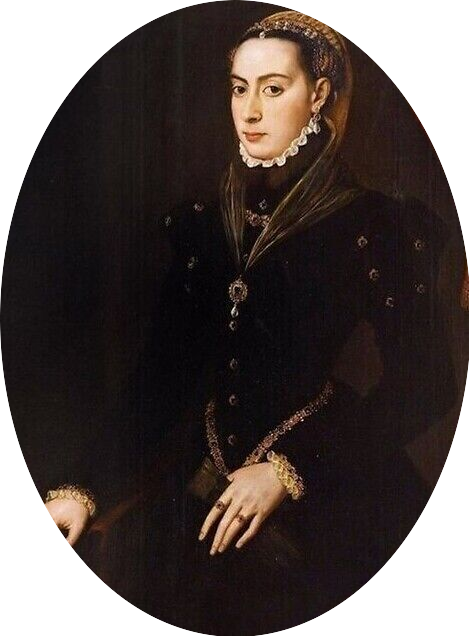
Koenas Tatyana
Tatyana van Metterden
Tatiana Ruthern of Metterden
b. 1666 A.H. | b. 219 E.S.
Tatyana Elizaveta Ruthern (Common: Tatiana Elizabeth Ruthern), or Tatiana of Metterden, was a Haeseni noblewoman who served as consort for a brief month in 219 following Franz II’s coup and subsequent death.
As a Ruthern and daughter to a Karovic house, Tatiana’s upbringing was fulfilled with plentiful knowledge and learning. She excelled in her studies, although often did not do much else other than remain within her family’s library surrounded by books. A majority of Tatiana’s childhood was known to be well and suitable for a noblewoman, besides her lack of sociality. She rarely was in attendance of events or other revelries, less it was required of her or pertained scholastic interests.
Her marriage to Franz was not a large ceremony, for the noblewoman was frequently known to be humble, and Franz was not the king of Haense yet. She had been married to him for several years before his kingship. Before any Crow’s Moot could be called, Tatiana convinced her husband to take the throne.
It was only for a month, if not less, that she would serve as the consort to Franz until his brutal and sudden assassination. Tatiana, similarly to how she remained in her youth, was not often seen within the public eye. She would be regarded as doing nothing by many who did not see her diligent work behind the scenes of the government. Despite no longer being queen, she held a significant amount of influence – such as inviting Karl of Rothswood in as Lord Palatine. She too would remain as a notable driving force in keeping Prince Sigmar, the heir to the kingdom, out of the kingdom’s capital. Even for the first four years of his reign that he was known to be king, he remained in exile in the south as per the demands of Tatiana and Karl.
As she was not a socialite by any means within the court or daily life of the Haeseni people, rumors began to formulate surrounding her life; one of which would be the assumption that she and the peasant –and palatine– Karl of Rothswood were lovers when she began convincing Karl to promote peasants to higher positions within the government. Tatiana angered many of the old families of Haense, but also kept them in line.
Ignoring the opinions of many noble houses would be her downfall, when the King Sigmar would finally enter the capital with mercenaries and noble dissenters at his flank. Karl was executed swiftly upon the arrival of Sigmar, and Tatiana was banished and sent to live out the rest of her life in a nunnery. It is believed had it not been for her familial connections to the royal household, she would’ve been executed as well on charges of treason. Within the later years of her life, she succumbed to an illness and passed in her sleep.
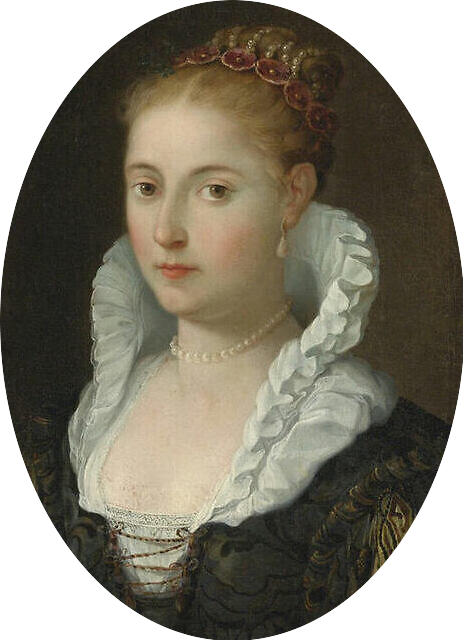
Koenas Sofiya
Sofiya van Kastir
Sophia Chivay of Castor
b. 1670 A.H. – 1682 A.H. | b. 223 E.S. – 235 E.S.
Sofiya Katherina van Kastir (Common: Sophia Catherine de Castor), or Sofiya of Kastir, was a Kaedreni noblewoman who served as consort from Sigmar I’s accession in 223 till his death in 235. Her marriage to the Haeseni King became a subject of high controversy, as a Chivay bastard and considered to be a low match for a wife. However, her position as being considered lesser led her to be adored by the common people of the Haeseni realm.
The beginnings of Sofiya’s life began in the year 193 in the Aeldinic lands. Although not origin to her family, they remained there until Sofiya neared the age of approximately eight or later into her adolescent years. Soon, a majority of her adolescence would be consumed by years of attempts to escape Aeldin and be smuggled into their homeland continent. On ships or other expeditions in her endeavor to flee, she practiced her handwriting and spent the long hours of waiting in a small, cramped cargo box reading.
As she reached into her twenties, Sofiya arrived in Atlas and firstly settled in the snow-covered city of Markev. She met the Prince Sigmar not long after her arrival while there were still troubles of his exile; and Tatiana of Metterden and the palatine Karl of Rothswood pertained relevance in power. It was highly recommended that Sigmar not marry Sofiya, and pursue another noblewoman that would heighten his claim or have a better standing than a bastard, but his preference in marriage prevailed despite the advice of his advisors. They married in 218 while Sigmar, the heir to the Haeseni throne, remained banished.
Five years following their marriage, 223, Sigmar ascended his position as King of Haense by entering the capital with an army of mercenaries and noble dissenters accompanying him. Sofiya became the official consort of Haense, and was later legitimized as a Chivay in the year of Sigmar’s ascension. In spite of her unpopularity with the nobility, Sofiya was adored by the common people of Haense. Rarely did she attend duties in the palace, leaving it to chamberlains and other palatial staff, and instead focused on aiding the daily life of commoners.
Her marriage to Sigmar and their relationship was considered to be full of joy, until Sofiya was met with multiple miscarriages and stillbirths that deteriorated her mental well-being. She would go on to have seven children with Sigmar, but only three living past the age of twelve. She was known for her dedication to her children; refusing a governess and any other form of care for her children other than herself. The devastation of losing her children strained further on her happiness, as well as the onslaught of assassination attempts on her and her children’s lives.
Notable figures surrounding her consisted of her sister-in-law, Analiese Bihar; the Princess of Ulgaard, Emma Ludovar; and the royal scribe and commoner, “Swithun”. Similarly to Swithun, Sofiya promoted peasants and foreigners in her court, to the dismay of the more traditional nobility (other figures including Brog Dhoon and his family, an Illatian chef, et cetera). Lady Elizaveta Ruthern became a prominent figure of her eldest son’s life, Robert– to which she met with subtle opposition, refusing to pass down certain aspects of the Barbanov tradition when she heard the Ruthern was her son’s preferred choice of marriage. The origins of her dislike are unknown, but presumed to be a result of the Haeseni noblewoman’s character.
Her husband died of fatal wounds from a boar hunt in 235, followed by the death of her son, Prince Petyr-Josef, in 236. Seldom did she leave the Krepost Palace as Queen-Mother other than to accompany her only living daughter, Princess Theodosiya, on trips through the city or to assist in charity work. Only around the years 238-239 did she begin to leave the palace as her daughter frequented the imperial city of Carolustadt. There, she kept her identity hidden to the utmost of her abilities, and met the knight Sir Avery of Oren.
She remarried in 240 and later had one child with Sir Avery. The two remained away from the public view and she no longer held the title of Queen Mother, or as a dowager, with her new marriage. In 246, Sofiya passed away in a harsh winter from an illness she could not shake. At fifty-three, she died with her new son, husband, and daughter Princess Theodosiya at her side.
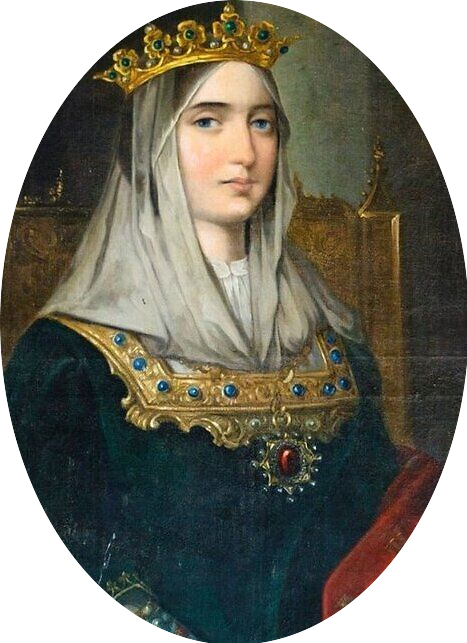
Koenas Elizaveta
Elizaveta van Vidaus
Elizabeth Ruthern of Vidaus
b. 1682 A.H. – 1707 A.H. | b. 235 E.S. – 260 E.S.
Elizaveta Roza Ruthern (Common: Elizabeth Rose Ruthern), or Elizaveta of Vidaus, was a Haeseni noblewoman who served twenty-five years as consort from 235 till 260, the longest of any consort to date (as of 337). She served as a prominent figure in diplomacy throughout her reign, until her assassination in 260.
Since her birth, Elizveta struggled with a severe illness that prohibited her from walking and rendered her near helpless in most day to day activities that were usual to a noblewoman of her age. Both of her parents died while she was relatively young, and never grew a proper relationship with either. She was born with a twin, Dmitri, and the two were inseparable in any of their endeavors. As a result of her inability to walk, Elizaveta remained within the confines of the Markev Library and was rarely seen outside of it. Her illness further was said to consist of highs and lows; the lows where she could not move from her bed and coughed in harsh fits. Through familial ties and the help of her twin brother, she was able to have a device constructed for her to sit in a chair and roll wheels on either side of it– and no longer lacked mobility.
She befriended the Prince Robert and his sister, Princess Theodosia, upon calling the guards and saving the two royal children from a near assassination. The three remained friends thereon, along with her brother and other Haeseni children who joined them on occasion. Elizaveta studied under the royal scribe of Queen Sofiya, Swithun, and saw him as a pseudo parental figure. The lord marshal of Haense and her grandfather, Lord Rhys Ruthern, also was a prominent figure of her life in her parents absence. Her endearment of the library led to her remodeling it into the Markev Theodosian Library, expanding it in size, and travelling from different fairs to sell books and wares to people across the continent.
Elizaveta faced strong opposition when the proposal of marriage came from Robert, as Robert’s mother showed a great deal of dislike towards the Ruthern and refused to be around her on most occasions. The two were wed nonetheless in 235, and she became Queen consort of Haense with her marriage to Robert I. Their wedding was widely celebrated across the kingdom, and revelries were held in the Krepost Palace following the ceremony in the Markev Cathedral.
Her primary focuses as consort became diplomacy, which she had been studying in preparation for the role, and education in Haense. She became a strong advocate for the Wood Elven people and their culture, often inviting them to visit at the palace or to attend the various events held throughout the kingdom. She made frequent travels to their lands as well, to study their ways, culture, and to converse regularly with them. Her diplomacy extended into her later years as consort, furthering into imperials relations and other internal affairs with other nations under the empire.
The efforts of Elizaveta strained on her in the first years, and she struggled with the ideals of queenship. Often did she refuse to play the host of events, and wanted to ground herself elsewhere to be unlike the other queens before her. A lengthy part of her tenure was consumed with hatred for her position and wanting to free herself of her duties. It is said she considered leaving her husband with her son and heir, Prince Marus, and not returning to the Haeseni lands. Her notable love for Robert prevailed over her detestation of queenship, and she refrained from disappearance. Other projects garnered Elizaveta’s love and lessened her dislike as the role of consort, such as the Theodosian Imperial Academy, and the growth of the Theodosian Municipal Library. The newly-made educational system faltered out after a year or so, but Elizaveta continued pursuits in scholarly matters elsewhere.
In 240, she became the High Emissary of the Academic Union with its foundation by Azkel Frostbeard and other highly acclaimed scholars. Elizaveta further became a more vocal politician as the chairman of the Common Civic Party. Her peaceful years came to a conclusion on the seventh, in 242, with the Third Atlas Coalition War after word of rebellion rose from the vassal of Arberrang. It ended in a victory, and concluded in three years’ time. In spite of the victory, Elizaveta’s joy began to strain again and worsened further in 246 with the death of the Queen-Mother, Sofiya of Castor. In the same year, she became the crown representative of Hanseti-Ruska.
Throughout her lengthy tenure, Elizaveta preserved a great influence over her husband and garnered sway if her input was additionally included on any subject. He listened to her vocalized opinions and sought to make her pleased as his wife, knowing of her toils with the title of queen and not wishing her to amass any further hatred for it. She tired of the role as the years drew on, and lessened her public appearance. Her court remained minimal and her companions were but a small circle, if not a handful.
Elizaveta was brutally stabbed to death by Andrei Tosali in 260. Following only months after her death was her husband, Robert I. The entire kingdom mourned the loss of their long-reigning monarchs; a pair who together affected the Haeseni people’s lives for decades, and a dedicated scholar with an undeniable need to spread her knowledge.
Klaudiya van Vaziland
Klaudia Vanir of Vasiland
b. 1708 A.H. – 1719 A.H. | b. 261 E.S. – 272 E.S.
Klaudiya Erika Vanir (Common: Claudia Erika Vanir), or Klaudiya of Vaziland, was a Haeseni noblewoman who served as consort of Marus II for eleven years from 261 till 272 after his assassination. She was the second wife of Marus II, following the death of Valera of Adria in 259. A majority of her reign notably was spent during wartime, with the War of Two Emperors and the Rubern War in her dowager years.
Modesty defined and outlined the very childhood of Klaudiya, as the daughter of the Margrave of Vasiland and her scheduled educational routine of governesses and tutors. There were little to no intentions or plans for her future, or a match in suitors. She did not partake in the traditional procedures assumed by her fellow nobility, endeavoring to assist in the city municipal steward. Her life changed drastically as she became the recommended match for Marus II with his wife’s sudden death and the controversy surrounding her parentage posthumously, and the sudden death of his only son and heir, Prince Petyr-Andrik.
Klaudiya was married in the Basilica of Fifty Virgins in 261, and therefore ascended the position of consort. In the same year, she became the Duchess consort of Adria with the abdication of Duke Paul II and the nomination of Marus through the duma. From the day of the wedding and onward, Marus kept a cold and distant relationship with Klaudiya and attended her as few of times he could. Alongside her husband, her step-children, the princesses Mariya and Sofiya, both treated her with open hatred and detestation in spite of her attempts to treat the children kindly.
Seven years into her reign, in 268, the War of Two Emperors erupted from the rising and undeniable tensions. While her husband remained busied with war and often away as a result, Klaudiya focused on the internal affairs of the kingdom and excelled in stewardry and city administration. Her solemnity did not gain her favor, but she was known for her exemplary organizational and management skills.
Her eleven-year reign as consort came to a sudden conclusion with the death of her husband in the Prikaz, assassinated by Hektor Barrow. Her young son, Andrik III, rose to the position of king and she withdrew herself further from public view. The toils of war took a great toll on her health, especially as the kingdom neared defeat and their allies signed treaties with the opposing side.
Little was seen of or from the Queen-Mother outside of palace life and the lives of her royal children. She opposed the change in marriage for her son from Katherina of Carnatia to Milena of Adria, claiming that the prospective successor was consumed by her own ambition and entitlement though resigned that, ultimately, it was her son’s choice to which she showed strained respect for.
The Queen-Mother, nevertheless beloved by her children and further sires, perished from the toils of a fever at the age of fifty-five after enduring the beginnings of another conflict, the Rubern War.
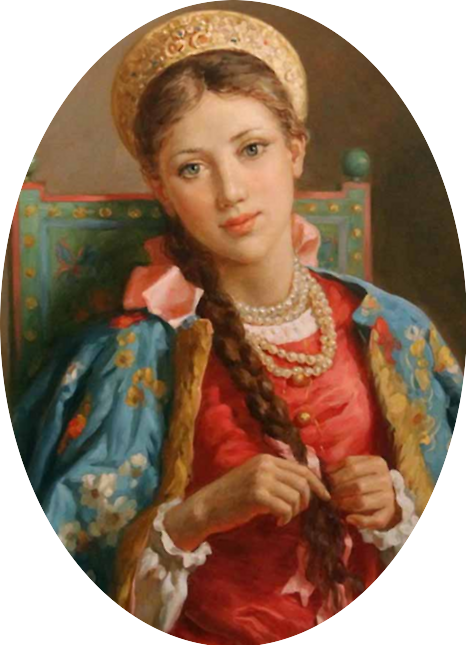
Koenas Milena
Milena van Adriya
Milena Tuvic of Adria
b. 1726 A.H. – 1742 A.H. | b. 279 E.S. – 295 E.S.
Milena Ekaterina Carrion (Common: Milena Catherine Carrion), or Milena of Adria, was an Adrian noblewoman who served as consort of Andrik III for sixteen years from 279 till 295. She was the first Haeseni queen to be given her own coronation, and carried out the unfulfilled marriage pact between the Houses of Barbanov and Carrion that was created for her aunt, Valera of Adria. As the first queen of a golden age, her life would later be consumed by conspiracies and rumors with the infamous ‘Milena Letters’ with posthumous release by Princess Anastasia of Muldav — sister to the Prince of Rubern.
She was born within the family’s manor in the city of Ves, but escaped to Aeldin as threats upon her family worsened. Milena was raised on the land’s capital, Nova Horos. Her education was befitting of a noblewoman, but she struggled with maternal influences as her mother passed in childbirth alongside her stillborn twin brother. Her father was absent as well, having been toiled with the shattered remains of his family. Yet, he was dutiful and Milena was gifted many tutors, among them her ancestress the Dowager Crown Princess of Renatus Marna, Maria of Krajia. He was set to have his progeny transcend into what her aunt Valera was meant to before her untimely passing: the Queen of Haense. In her education, she was primarily taught courtly etiquette and martial tactics. Upon her thirteenth name day, she was taken to the shores of Arcas to be presented to the Haeseni court. As her head was filled with thoughts of legacy and destiny, she spoke of filling her god-given purpose to become Queen consort.
Prince Andrik was betrothed to the Lady Katharina Vyronov when her arrival was announced at court. Her endeavors of ending the betrothal in place of herself were seen through within a mere saint’s week, and plans for a marriage ceremony were swiftly made. Her wedding was massive and had one of the highest attendances of all the queens, among the present the ministry of Emperor Alexander II and men of Lorraine. She was costly in her dress, but was praised for it unlike numerous predecessors who attempted to do alike.
As the consort of Haense, she took strides in renewing the diminished royal courts. She created numerous initiatives to do so, and formed the royal precedent of Haense. Milena befriended both of the princesses of Haense, daughters of Marus II, Mariya Angelika and Sofiya Theodosiya. The two would help her reform the court, with the position of the Grand Lady created for Princess Mariya and the role of Chamberlain given to Sofiya. Their ascension marked the creation of the Queen’s Council, which consisted of the offices of the Chamberlain, Grand Lady, and Secretary of the Queen; all of which had extensions of other offices underneath them. An official guide to Haeseni etiquette was established, resulting in a strict and suffocating, yet undoubtedly cohesive, environment in the Royal court. In addition, not long after her marriage, Milena established the Harvest Initiative of 1729, yielding to the common populace gratuitous breads and other affordable foodstuffs from the coffers of the Prikaz and later Ekaterinburg.
Several years into her tenure, she was struck with sudden grief as her son, the Grand Prince of Kusoraev, Andrik Petyr, was captured by a group of pagans. She refused to leave her chambers until a rescue party was formulated. Milena rode out donning armor alongside her husband to find her son, but was captured in the midst of battle. She wouldn’t be rescued for many days after, found alongside her ailing infant and her confidant, Princess Vespira of Man.
She was left alone with her husband’s leave from court and their relationship distanced greatly after the birth of Princess Antoniya. It was then, when Andrik III took his leave for a hunting trip, that Milena was said to have a short lived affair with the Lord Protector of Oren, Adrian de Sarkozy. Whether the alleged affair occurred or not, Milena assisted diplomatically with her meetings with the Lord Adrian and his wife – her confidant, Princess Mariya.
With her own focus returning to Haense, legacy and dynasty became her goal and primary concern, fortified by her fervent desire in seeing the survival of her progeny. Firstly, she was given her own coronation as the Queen consort of Haense, and it became a tradition for the consorts to be crowned alongside their husband thereafter. Her firstborn son was betrothed to Princess Arianne as a marriage alliance between Haense and Kaedrin, and furthermore Houses Barbanov and Helvets. Despite engineering the betrothal merely a year after the crown prince had been born with the Queen Annabelle of Kaedrin to cultivate relations between the two prosperous states, she openly detested when the Kaedrini princess began living within the palace walls and had repetitively slighted her courtly lessons in favor of sparring. Milena schemed to have a favored successor of her own, and garnered a ward: Princess Maya.
She left Princess Maya to run her courts as the Grand Lady when her mental health further deteriorated from stress and the events that occurred throughout her queenship, including multiple kidnapping and assassination attempts in the midst of war. In the year of 295, Milena was flayed by a Ruberni assailant in her own chambers, and then thrown from the Ekaterinburg’s balcony into her namesake lake. Posthumously, Milena has been subject to high controversy regarding the alleged letters released claiming that her son, Andrik IV, was illegitimate. These claims were deemed as false and an attempt to keep the Princess Arianne of Kaedrin from the position as Haeseni consort.

Koenas Maya
Maya van Muldav
Mia Alimar of Muldav
b. 1746 A.H. – 1753 A.H. | b. 299 E.S. – 306 E.S.
Maya Valeriya Alimar (Common: Mia Valera Alimar), also known as Maya of Muldav or Maya of Antioch, was a Haeseni princess who served as consort of Andrik IV for seven years from 299 till 306 after he succumbed to fatal wounds, garnered in a battle to save Maya from captivity. Throughout the regency of her son, she exerted great influence as the queen-mother both politically and diplomatically, and established a many new traditions and set precedents for future Haeseni queens. She was assassinated at the age of thirty-two by an assailant with unknown origins.
The upbringing of Maya has often been regarded as tragic and full of turmoil, with allegations of abuse from her father, the Grand Prince of Muldav, who was said to have controversially striked Maya and her siblings on a multitude of occasions, and near drowned her in Carrion Black. A majority of her early life went uneducated from her father and mother’s absence. Her education remained as self-taught or through militaristic arts and swordsmanship with her uncle, Richard I, Prince of Rubern. Further schooling came when she unknowingly took role in the Queen Milena’s scheme to find another successor in place of the Arianne of Kaedrin. Her father opposed her role as Milena’s ‘Queen Deputy’ and ‘Ward’, but she turned against his behest.
Tensions rose between the vassal Rubern state, where over half of her family resided, and the kingdom of Hanseti-Ruska. Near the time, at eight years, Maya became acquainted with the crown prince through an introduction by the queen. War broke out and her family split to Ruberni and Haeseni, and was forced to choose a side while fighting the other. Unbeknownst to her father, Maya fought in a numerity of the battles; most notably the Siege of Reza at fourteen. Tragedy struck her family with bloodshed, and by her fifteenth year most of her once-large family was dead through brutal murder.
She presided over the courts as the Grand Lady and acted in place of the deceased Queen; who had been ruthlessly flayed and thrown into the lake of her namesake. The betrothal remained intact for the marriage between Princess Arianne and Prince Andrik, in spite of the schemes attempted by the late queen. Two months before the wedding, the betrothal broke off with the disappearance of the Kaedrini princess, and the hand in marriage extended to Maya. They were married in the Basilica of the Fifty Virgins in 299, and she ascended the position as consort several months following the wedding in her sixteenth year. Maya sought initiatives to implement into the royal courts and renewed the system entirely from what it had been before, including the cultivation of her own personal council to assist in managing palatial affairs, management, and revelries throughout the kingdom.
In her short reign as consort, she was renowned for hosting many of the king’s meetings in his and his palatine’s absence, and her openness with the people of Haense from common folk to nobility. “[…] She did not hide in the palace or only interact with other nobility, but was a Queen of the people.” Maya made herself seen as an equal to her husband and a leader in her own right, but equal to her people as well. Her marriage to the King Andrik IV had been perceived as genuine and with a strong bond of love. Her brazen nature led to her donning armor amongst the soldiers in the Rubern War, and beheading prisoners of war or criminals of high charges in the name of her kingdom.
In 305, Maya faced captivity and was held for a near two months where she had been malnourished and beaten. Seeing the queen bloodied and bruised was said to have brought a great rise in Andrik when the party came to rescue her, and their plan went astray– leading to the great wounds upon the king. In the next year, he succumbed to an illness from the inability in the wounds’ healing.
Most documentation of Maya’s life came from her years as Queen Mother, when she kept a diary over her entire tenure. She struggled in the first year with the loss of the Lord Regent Tiberius Barrow, beheaded by the Ruberni whom they still warred. Maya turned to the raising of her children, and fulfilling her new title as ‘mother’ of both her own and her people. She revitalized her fallen courts again, and created the Royal Academy of Saint Catherine when promoted to the Aulic Council as the Headmaster. In doing so, she renewed her own education, and sought to provide it for others in funding numerous institutions for the arts and education.
Throughout her incumbency as Queen Mother, she furthered herself as a notable figure of Oren and continued to pursue educating the future of Haense through her academy with a newly and unseen tutor-based system. The multitude of assassination attempts on her own life and children’s strained on her health greatly, including the bolt to the throat her son, Sigismund II, endured in the middle of court. Maya became the height of many suitors’ pursuits, including a proposal of marriage from the Governor General Sylvester Halcourt and the Emperor Peter III.
In 315, Maya was assassinated in her private chambers of the Queen-Mother. Her sudden death caused a series of chaotic events and shock throughout the empire, and she received a ceremonial state burial and memorial in her name. Her assailant was burned, having been dead by the Queen-Mother’s hand before her own passing. An entire district of the royal city of New Reza was named after and dedicated to her, and she was honored by her son creating a knight order after her named ‘The Order of Queen Maya and the Lilies’.
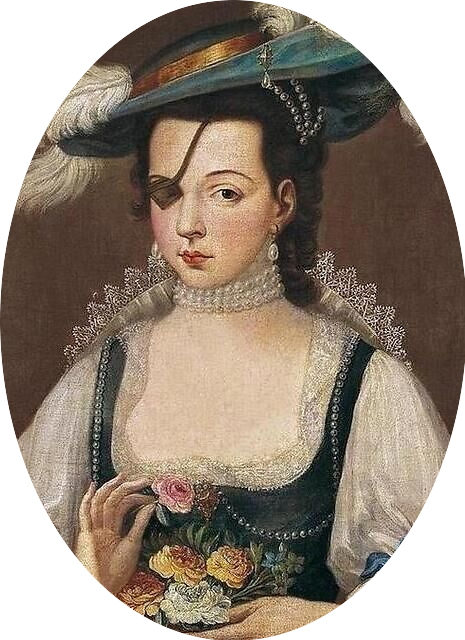
Koenas Viktoriya
Viktoriya van Metterden
Victoria Ruthern of Metterden
b. 1766 A.H. – 1776 A.H. | b. 319 E.S. – 329 E.S.
Viktoriya Sofiya Ruthern (Common: Victoria Sophia Ruthern), also known as Viktoria of Metterden, was a Haeseni noblewoman who served as consort of Sigismund II for ten years from 319 till 329. She served as the Grand Lady of the Royal Courts 306 to 319, with her ascension to the role of consort upon marriage to the King of Haense. She was a notable leader of the Scyfling Invasion, uniquely trained and fought alongside soldiers of the Haeseni Royal Army, and became the first queen to hold a position as vassal to the crown while also in the role of consort.
The Ruthern family of four, Viktoriya was the eldest of her siblings and a substitute parental figure to who came thereafter. Her parents remained in a loveless marriage, only bound together by a distant friendship and respect for one another. She became subject to a childhood lacking in the proper education of her status, and lost the companionship of her sisters as one, Lady Elizaveta, insisted on being tutored in the imperial court, and her youngest, Lady Irene, was sent away to study in the Commonwealth of Kaedrin.
Her bright, floral dresses were taken to a trend in her youth, and the one-shoulder shawl she sewed together herself too garnered great interest from the Haensewomen. She stepped into the political atmosphere at a rather young age, of only six years, when the Queen Maya took interest in her. Her circumstance led to her being exposed to various meetings of external and internal affairs with the Queen-Mother, and her palatial duties. A year after her beginning involvement, she was asked to become a ward to the queen, to which her father, Count Konstantin of Metterden, accepted graciously.
Viktoriya served four years as the ward to Queen Maya, and during her time her education has been remarked as “ […] unwonted, but befitting of her doughty person”. Whilst studying notable Haeseni figures and duties of administration, she too practiced and trained in swordsmanship and wielding axes under Queen Maya and other persons she sent Viktoriya to. In the final years of her wardship, she had been given her first set of armor and donned it on any occasion she sought to be fit; including her beginnings of training with the Haeseni Royal Army.
In 315, Viktoriya’s life altered as a witness of multiple acts of savage violence, encompassing events such as the assassination attempt of Sigismund II, and finding the bloodied body of the Queen-Mother and her deceased assailant. Before the untimely death of the queen, Viktoriya had been arranged to marry the Haeseni king when age of majority. Her first battle came near (The Battle of Boomhill) and she no longer wore floral patterns, but darker colors befitting her family.
She married Sigismund in 319, and became his consort thereafter. Even before her marriage and during the time of betrothal, Viktoriya refused to be excluded from meetings of the nation or any other discussions that would assist her knowledge to help her husband lead the kingdom. Two years into her reign, 321, the Scyfling Invasion was no other than her primary interest. Never had she been a queen of her courts and etiquette, and she seldom wanted to be pushed into a category of the other Haeseni noblewomen. Her peculiar personality and highly vocalized beliefs led to some traditionalists in disfavor of her; while others within the Haeseni courts praised her behavior, as taken from a quote by the court scribe, Heinrik of the Midlands, “She [was] a stalwart woman, pragmatic and determined. Of her ilk remain few, for too many are consumed by whimsy and folly.” Viktoriya led men in the defense of Metterden, her homeland, and trained alongside the other soldiers or fought with them when not in direct leadership of the battle, defense, et cetera.
Viktoriya, simultaneously to the Scyfling Invasion, incorporated herself in imperial court with her sister, Lady Irene, returning home but soon asked to stay at imperial court. Her father’s death and the recent change in laws led to her being the first consort to hold a vassal position, as the Countess of Metterden (as due to succession crisis, Viktoriya later lost the title of countess but it returned to her brother, Lord Aleksandr). As matriarch, she arranged the marriage between her sister and the Prince John of Helena, for Lady Irene to become empress consort, and furthered relations with the future empress regnant, the Princess Imperial Anne Augusta. The betrothal was never fulfilled, but her relations –and furthermore, friendship– with the princess imperial continued. She acquired the position of Deputy-Palatine, and (although having years of experience) furthered her administration skills through the apprentice position.
Her husband’s state of being greatly fell apart in a rapid period of time, leading to his death by suicide in 329. After the death of her husband, Viktoriya remained a prominent figure amongst the Haeseni people, particularly in that of the Haeseni Royal Army and participating in a numerity of battles, trainings, and other ongoings of the HRA when given the opportunity to be with the soldiers. As Queen-Mother, she would serve as the Royal Envoy and make great strides in establishing the diplomacy of the nation for her son, King Josef I, and continuously as Deputy Palatine under the Lord Palatine Konstantin Wick. With her involvement in the HRA, Viktoriya was considered the Warrior Queen, more so after the loss of over half her limbs and later amputations; notably, her eye was taken and she donned an eye-patch. The Queen-Mother, on occasion, was known for her eccentric behavior in comparison to previous queens and most ladies of the time, even revealing the scars beneath her patch to give a quick scare or showing of her battle wounds. Viktoriya soon departed from the limelight of court life, and even that of the army, with her deteriorating health. Rarely was the Queen-Mother seen outside of the Nikirala Prikaz, located in the new city of Karosgrad after the departure from the continent of Atlas and unto Almaris.
In her final year of life, Viktoriya removed herself from the confines of the royal palace to again immerse herself in day-to-day life of the Haeseni people. She visited with a numerity of her family members, and witnessed the March on Karosgrad in 355 E.S. with the pontifical controversy surrounding Owyn III. Amidst the chaos of the protest outside the royal city’s church, Viktoriya halted a man known as Richard Helvets, an aforementioned enemy of hers from years past, from the stabbing and slaughter of his own daughter, Lady Theodora Helvets, by beating him repetitively with her wooden cane until dragged from the pile of people that were to tackle him for his actions. After the protest, Viktoriya suffered from a heart attack but survived with the assistance of the kingdom’s surgeon-general. In her last days, she sought out her last act to be an attempt to seal a marriage for her youngest sister, the Lady Irene Ruthern, to the Archchancellor of Oren, Franz Sarkozy, through her own means of strangely-written letters. She would not survive the next heart attack, passing away in the palace gardens after attempting to train with her sword outside. The attempt caused great strain upon her greatly declining health and, at fifty-one, she died with her sword in hand.
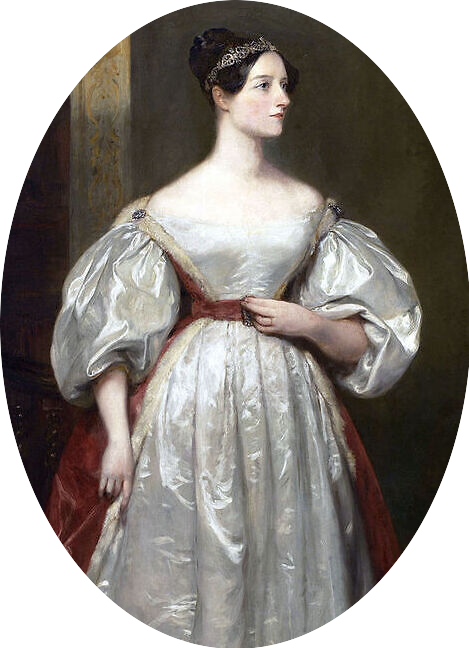
Koenas Isabel
Isabel van Valwyck
Isabella Baruch of Valwyck
b. 1786 A.H. – 1806 A.H. | b. 339 E.S. – 359 E.S.
Isabel Franziska van Valwyck (Common: Isabella Francesca) was the fourteenth Queen consort of Hanseti-Ruska as per her marriage to Josef I, King of Hanseti-Ruska on the 18th of the First Seed, 1786. She was a Haeseni noblewoman as the daughter of Peter I, Duke of Valwyck, and his consort, the Duchess-consort Sofiya of Vasiland. [WIP]
Born in the year 1770, Isabel of Valwyck was raised as daughter to Duke Petyr Baruch as the youngest of five siblings. She matured early into her youth as a onlooker to the brutish familial ongoings resulted from her father, who has been oft monikered by historians as ”Petyr the Beater”. When such events did not occur within her household and her father was away as the Lord Palatine to King Sigismund II, she was raised by her mother in courtly manners and received a proper education befitting to a noblewoman of her status as the daughter of a duke.
She bore witness to the abuse of her mother and four eldest siblings but was one of the few in the family to have been safe from her father’s cruel physical punishments. However, frequently was the Baruch youth reminded by her father that her mother held no love for her and instead despised the girl. The abuse was said to have allegedly gone as far as her mother being beaten whilst pregnant with a bottle, but – to the luck of young Isabel – she had never seen that act in particular as the youngest. Around six years of her life, Isabel found the mutilated body of her mother after she took her own life by jumping from a balcony in Valwyck. Her father accused Isabel of being the sole reason and fault of her mother’s suicide, leading to a guilt that would consume a majority of her life thereafter- even into her adulthood. After the accusation, he was murdered at the hands of her brother Petyr (later disowned to be Petyr Wick), which occurred before her eyes. Isabel spent little time in Valwyck and instead in the Ekaterinburg Palace with Viktoria of Metterden, Queen consort of Hanseti-Ruska, after she was orphaned and her family fell further into shambles. Her eldest brother was disowned and no longer considered the heir to Valwyck after the murder of his father. He was later adopted into House Wick, much to the dismay of those still remaining in the family. She was seen as the most suitable match for the future King of Haense, Prince Josef, after having been around him throughout her youth and befriending him as a result of her father’s prominent occupation in the palace.
From the view of the Haeseni courtiers and the Queen-Mother, Prince Josef and Isabel held a close relationship with one another after her accumulated recent time spent in the palace thereafter her parent’s tragic deaths. The House of Baruch had been of most prominence amongst the Haeseni houses at the time, serving in the peerage as dukes, and the late Duke of Valwyck’s position as Lord Palatine led to the suggestion of Isabel to be the successor to Viktoria of Metterden. At nine, Isabel was betrothed to the crown prince and taken as a ward under Queen Viktoria. She took particular interest in the Queen’s Council and any other vassal meetings the queen attended to. Whenever called for, Isabel flanked the side of the queen with utter attentiveness. The guilt of her mother’s death still weighed heavily upon her and often was said to have brought nightmares to her, according to servants of the Ekaterinburg whilst she was resident there.
Under her wardship to Viktoria, her confidence increased immensely and she learned how to present herself before a crowd. Seeing as the Queen was not one for courteous or palatial matters, Isabel instead was taught to bow to no one – allegedly, not even to the empress whilst the Haeseni were under the Holy Orenian Empire as vassals – and garnered a strong respect for the military. With two of Isabel’s sisters in the military, she was able to have spars with them and learned basic swordsmanship from Queen Viktoria as well. Courtly matters she learned on her own time, and with her governess Adelaide Myrrh. She managed most of the servantry, as she maintained a strong relationship with the head of servantry, Ser Rubern Vasili (considering him to be . Hunts were frequented by the Queen-to-be whenever often she could. Her intensive studies under the Queen began to falter after Queen Viktoria was seen less and less about the palace, after the disturbances in her family- including the suicide of her husband, Sigismund II. With her governess as her primary mentor thereafter, she focused on her private lessons of dancing, piano, and music theory from Lady Adelaide.
Isabel married the King of Hanseti-Ruska, Josef I, on the 18th of the First Seed, 1786, in the Basilica of the Fifty Virgins. She was commended to be “[…] magnificent yet brazen, if not a symbol of the Lady Haense herself” in her silk and satin dress of creme and gold color. The dress trailed behind her with a red train laced with true gold, and as she entered the cathedral she was brought down the aisle by her brother, Duke Matyas Baruch. A refined red ruby, said to have been a necklace from the first consort Queen Reza of Turov, dangled most prominently from her necklace and, upon her finely fixed coiffure was the traditional regalia amidst the Haeseni Queen’s weddings and coronations, the diadem of Valera of Adria. Her marriage ascended her to the position of Queen consort of Hanseti-Ruska and thus sent her forth into leading the royal courts with her own jurisdiction.
Her reign as queen began with a court that had been empty for a great deal of time prior to her ascension. Her predecessor was absent from the court, and left Isabel without much of a court to build off of. Rather than base the beginning of her tenure in initiatives, Isabel filled courtly positions and expanded the Queen’s Council with competent, eligible workers who would help her rebuild the quiet court life. When question was risen against her husband, she was seen –throughout her entire life– defending the king’s name and honor, and remaining as one of the most loyal wives to a Haeseni king. She maintained a resolute demeanor, yet at first timid when correcting the rigid etiquette of the Haeseni courtiers who had lacked lessons in such and often overstepped boundaries when addressing the royal family. As years would pass, Isabel gained a far more brazen attitude in addressing the wrongdoings of courtiers and blatantly calling out those who would attempt to address herself and her family with anything but respect. She went on to host so many balls, masquerades, and competitions for dance that she was often remarked as the Dancing Queen of Haense. She never followed in the warrior footsteps of her predecessor, yet still was seen alongside soldiers as a nurse and attending to the wounded when troubles were to arise– wearing an HRA uniform as the prior Queen Viktoria had done in different fashion.
The Queen’s Council of Isabel of Valwyck remained relatively static throughout most of her reign as consort. She befriended Lady Rosalind Amador and Lady Charlotte Baruch, both who would accompany her in most outings and courtly matters. She listened to the occasional advice given to the Queen-Mother who made less and less appearances in public life, and never attended any events surrounding the court. Her husband had seen little of extravagant courtly life himself, and thus she relied on her own instincts for how to maintain a proper court. Towards the middle of her time as consort to Josef I, rumors speculated that Isabel had tendencies that lended towards her father, who was often remained as having bouts of insanity. The rumors were never officiated through private royal family documents, or any other sources yet to be revealed (if any, at all).
She became the primary source of knowledge for her children, and tutored them with only a few governesses and attendees to the three children she coddled; Princess Katerina, Prince Heinrik, and Prince Andrik. The children were remarked often as, “stubborn children who were unaware of the harsh realities of life beyond their comforting palace walls” as their mother shielded them from outside life and safeguarded them with the luxuries of royal life. By the time of her husband’s death from a heart attack in 359 ES, the children were still young– causing her to further retreat to protecting her children from any harshness that she could keep them from.
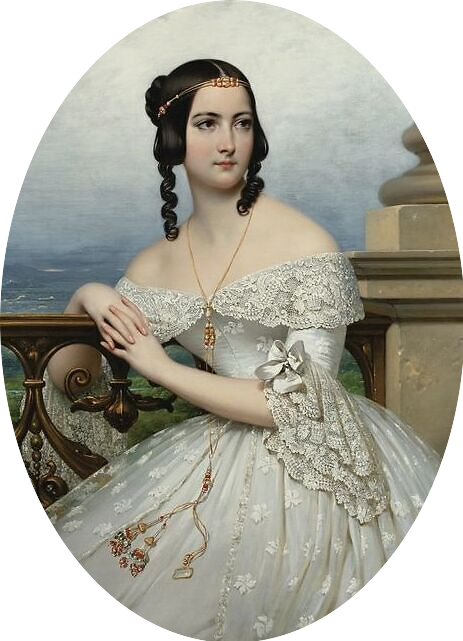
Koenas Mariya
Mariya van Aurveldt
Maria Amador of Aurveldt
b. 1809 A.H. – 1815 A.H. | b. 362 E.S. – 368 E.S.
Mariya Antoniya (Common: Maria Antonia), regally Mariya of Aurveldt and monikered Mariya the Young, was a Queen-Consort of Hanseti-Ruska through her marriage to Henry II of Haense in 1807. Her marriage was arranged after serving as a ward to the Queen-Mother, Isabel of Valwyck. She was known for her eccentric personality resembling the late Queen Viktoria of Metterden as a squire to Dame Anabela Vilac, and a dual axe-wielder. To date, she was youngest queen to pass away at the age of twenty-two, thus lending to her epithet.

Koenas Annika
Annika van Reza
Annika of Reza
b. 1795 A.H. – 1858 A.H. | b. 348 E.S. – 411 E.S.
Annika Anastasija (New Marian: Annika Anastasiya) (Formerly known as Annika Anastasija Vyronov), otherwise known regally as Annika of Reza, or Queen Annika, was a Haeseni noblewoman of the House Vyronov and second wife to the King Henry II. She was the first daughter and second-born child of Lord Anton Boleslav Vyronov and Lady Milena of Otistadt.
At the age of twenty-eight, she was wed to Henry II of Haense following the assassination of his first wife, Mariya of Aurveldt, and ascended to the regal position of queen upon her marriage. She was the first Haeseni queen to be the second wife of a reigning king, with none having remarried before during their respective monarchical tenures.
On the 1st of Sun’s Smile, 1795, Annika was born as the first and only daughter Lord Anton Vyronov and his wife, Milena of Otistadt. From birth she was separated from her brother after a muddied upbringing rocked by familial abandonment. Details of her youth are minimal amongst historians, yet it was believed her childhood consisted of strict rules in a traditional household with unknown relatives. These traditionalistic views were studied alongside law and theology, with this education being a part of her everyday life.
Her whereabouts remained away from the general populace of Haeseni life and the kingdom until the early months of 1814. The bustling city had been unlike anything she had ever known before in comparison to her life of quietude she was familiar with. This exposure to an entirely new lifestyle was not met with shock or fear, but instead a desire to pursue all that was now at the young Vyronov’s fingertips. She expressed her interest in law, as she had always studied, and was appointed Jovenaar after the assassination attempt known as the Wives’ Plot of 1814. In a desperate measure to swiftly trial one of the assassins, the previous Lady Speaker Irene Sarkozy, the king Heinrik II charged Annika with the position to participate and conduct the trial.
The sudden appointment to the position of Jovenaar only heightened the ambitious Vyronov’s desire for more in her life and thus led her to the royal courts under the jurisdiction of the king’s wife Queen Mariya. As stated by the chronicler Dmitry of Reza “With never before seen noble ardor the Lady Vyronov threw herself into the quiet courts with aspirations to uplift it into a refined state.” She was known to be remarkably interested in fashion, etiquette, and the structure of the court in of itself. In the span of only one year since her first day in Karosgard, Annika had forged a name for herself among the ladies of the court and the populace of the kingdom.
The relations between Annika and the king in the late months of 1814 is speculated today, though the pair were never officially seen with each other. It had been no secret of the royal family’s that King Heinrik and Queen Mariya held no love for each other, and that their marriage was coming to a tumultuous end. In 1815, one year following her appointment to Jovenaar, the assassination of Queen Mariya shook the kingdom as the youngest queen in the history of Haense to die. Annika was among those to see the horrific aftermath of the consort’s death and rushed to her brother’s comfort– the Baron of Astfield, Stefan, who had been one of Queen Mariya’s confidants since their early squireship to become knights. The halls of the palace were quieter than ever before in decades of court life upheld by previous queens. The abhorrent marriage between the king and queen had taken its toll on the royal courts and left it to dry. Annika dove into action to attempt to revive what she could of the court and was appointed as Palace Custodian to the Grand Lady.
In the years following the queen’s death, Annika and Heinrik grew closer through frequented discussions and talks as confidants in the Nikirala Prikaz or promenading the city. Her focus had been entirely to revive a court that had fallen after the latter months of the previous consort’s short reign and to that much she was said to have been a great appreciation for the widower king. Heinrik would formally ask to court Annika through more traditional means of Haeseni culture. Discussion was had between the king and his vassal, Annika’s brother Stefan, which quickly turned sour. Brazenly, Stefan demanded Heinrik leave Astfield at once upon his request for courtship. Against her brother’s words, Annika accepted the courtship on her own behalf when asked through a letter.
For nine years Annika toiled for the royal court under the psuedo title as queen to be at the side of the Grand Lady. Annika and the king’s courtship, and later engagement, was highly controversial considering the circumstances in which Queen Mariya of Aurveldt had passed and the publicly displayed horrendous relations held between the previous royal pair. These rumors (and her brother’s denial) did not stop Annika on her path to queenship, nor did it halt her passionate unrelenting work in court life.
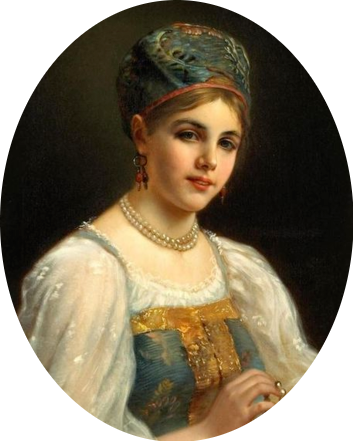
Koenas Emma
Emma Karenina vas Jerovitz
Emma of Jerovitz
b. 1818 A.H. – 1892 A.H. | b. 371 E.S. – 445 E.S.
Emma Karenina (Common: Emma ), regally Emma of Jerovitz, was made Queen-Consort of Hanseti-Ruska through her marriage to Sigismund III of Haense in 1836. Their subsequent reign, lasting 35 years, means Emma is the longest-ruling Queen-Consort of Haense alongside her husband. She was known for her lenient nature, her influence on courtly fashion and etiquette, as well as her advocacy for women’s rights – the Karenina Movement was named for the Queen’s leadership.
Emma of Jerovitz was married to Sigismund Karl in the Basilica of Saint Henrik in 1836, officiated by the High Pontiff Everard VI. Theirs was a rarer wedding in circumstance as Sigismund would not become coronated King until 1838, after his father’s abdication, the pair had two years to prepare for responsibility and enjoy their freedom beforehand. Their pairing was no surprise – the two had been courting for some years prior. The match was widely accepted as both loving and well-placed, with Emma being the sister of Count Jan Kortrevich.
Upon inheriting a cold court of little activity from her mother-in-law, Emma was determined to breathe some life and colour into the Haeseni Royal Court. The woman first established her Inner Council and distributed initiatives to bolster activity and involvement in the court: such as her wardship program – open to non-nobles and nobles alike. She established a broad and functioning outer Queen’s Council, the numbers of which hadn’t been seen for years, expanding the Queen’s Household. Furthermore, Emma later worked on revitalising Nikirala Servantry as well with some reforms[5]. Throughout her reign, Emma remained jovial, open to suggestions, and rarely raised her voice or spoke unkindly to anyone – thus, was respected amongst a fair share of the women. Her council organised milestone events such as the Saint Year’s Anniversary of Haeseni Independence[6]. In these early years. Emma restarted the Czenz Osrand, a women’s society formed during Queen Isabel’s reign that had been left to fall aside, organising regular meetings and teas to involve women of the Kingdom. They provided an opportunity for the monarch to remain in touch with the goings-on of gossip, news, and to cement friendships across the Kingdom’s noble families[7].
An underlying stress that became more evident as years passed was the monarchs’ struggle to conceive a child. It was almost five years into their marriage when tragedy had struck and their first-born son, the Grand Prince Edvard Arjen, died of breathing complications shortly after birth. His death beckoned a host of new worries, both private and public anxieties about the security of the Royal succession. A statement was made from the Nikirala Palace upon his death in 1841[8]. Emma, for many months afterwards, discarded her usual bright colours in favour of black skirts. The young Queen had been crushed by the events, her prior naivety punished: throughout her life, Emma maintained that she had six children, not five. As reported tensions between her and Sigismund grew more strained with the pressure the couple were under, Emma threw herself into the courts and Kingdom’s welfare to keep her mind off the loss.
Thankfully, it was only two years later that happy news was announced in a missive from the palace[9]: in 1843, Princess Klara Elizaveta was born with no complications. King Sigismund and Queen Emma set a new precedent, bestowing titles onto all their children – disregarding gender. Klara was henceforth made the Duchess of Baranya.
Under Emma’s rule, the role of Mistress of the Wardrobe was established and held for the duration of her tenure by her sister-in-law Princess Nikoleta. This position quickly rose to be one of prominence in the Royal Court with Emma’s focus on fashion – the Queen and high-ranking nobles set trends which rippled down through the larger court. [See the section on ‘Influence on Late Ruskan Fashion’ for further information]. Emma published reports on fashion and social etiquette, including a study and expansion on traditions revolving around coming-of-age and courtship ceremonies[10]. New restrictions and standards were established and upheld within her courts for suitors and brides, or else the match would be declared invalid.
Another of her actions was the renovation of the Nikirala Palace – with the help of Princess Anastasya and other members of her Council, the interior of the throne room, feast hall, and ballroom were revitalised to new aesthetic heights. A further wing of the palace was converted into a building dedicated to her wards: with its private garden, dining and living space, the wing had bedrooms to house the number of youths who travelled from foreign Kingdoms to be tutored under the Queen. Additionally, these renovations saw the introduction of noble apartments for each family within the royal palace[11]. Her Royal Court held two Lifstalas across her reign, the last being the fourth season the Kingdom had seen in 1863[12]. With an unprecedented list of suitors in attendance, the festivities were a reported success. As with all seasons, events ranged from hauchmetvas and opulent balls, to games of chase and a faux legal court to expose grievances. This was themed according to Emma’s childish penchant for stories: “A Walk in a Fairytale”.
Since childhood, Emma had always disregarded the binary distinction between noble and peasantry and was stubborn in her insistence to befriend people on both ends of the spectrum. Firress Isabella Decaden was one such friend, belonging to a peasant family to whom Emma was godmother to her multiple children. Firress Franziska Bishop remained a close confidant throughout her reign as her personal handmaiden, and subsequently, Barbanov befriended the Vernhart family as Emma and Sigismund had supported their controversial marriage – Emma was the sole witness to their secret union. The Queen tended to take pity on street children, inviting them to live and work in the palace, much to her husband’s bewilderment. She was known for her lenience, often seen walking in the gardens or out in the square of Karosgrad, rather than resigning herself to the Royal Court. Her legacy, posthumously, was as a Queen of the people.
Queen Emma’s love of literature and the arts persisted throughout her reign. She endorsed multiple academic groups and organisations, such as the 1847 Academics’ Guild and the revitalisation of the St. Carolus University. Furthermore, she pledged on behalf of the Crown to support her successor, Firress Adrianna Darkwood in her medical research initiatives. In an 1849 edition of the ‘Koenas Curation’, penned by Emma herself, some of these groups were publicised[13].The Queen also collected biographies of the Haeseni women voted the most influential in modern history, to organise an exhibition of their stories and achievements in the throne room. Around this period, where Emma felt comfortably settled into the roles expected of her: as a mother, first and foremost, as well as Queen, advisor, and friend. It was in the year 1850 that the joyous news of twin Princes born, Karl and Sergei, was announced by another missive from the palace [14]. With the royal succession stabilised, Emma finally felt secure. She had grown up accustomed to a large family, and by 1856 had given birth to both Prince Josef and Princess Maya. The palace remained full of life and noise; the royal quarters too were infamously known for the chaos ensuing at their family dinners. The marriage between Sigismund and Emma never lost its loving spark, as the pair appeared regularly together in good spirits, and became known for their generosity and care.
A more sombre aspect of her reign were the political tensions that had grown surrounding the Kingdom of Oren. These anxieties culminated in the Michaelite Schism against the Canonist Church in 1849, followed by the conflict dubbed the ‘War of the Wigs’ in 1850 – which resulted in a Tripartite victory in 1868. Emma, forced to abandon her pacifist preferences, saw her monarchical role as redefined: she would aid the maintenance of morale within the Kingdom, keeping the courts a steady force throughout the long war, and rally women and ladies during the fights. This force of brave women donned armour recognisable by their pink capes.
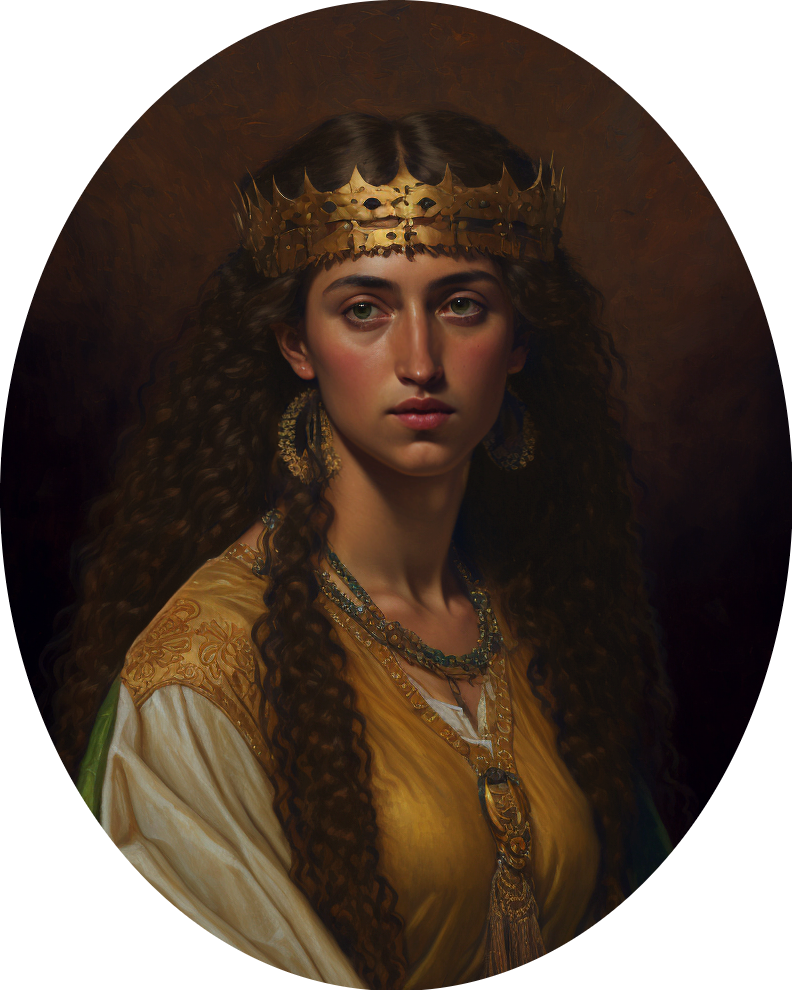
Koenas Amadea
Amadea Ulyssa vas Arkent-Basrid
Amanda of Arkent-Basrid
b. 1850 A.H. – 1905 A.H. | b. 403 E.S. – 458 E.S.
Amadea Ulyssa, regally Amadea of Susa, was Queen-Consort of Hanseti-Ruska through her marriage to Karl III of Haense.
Summaries of consort lives by Eryane with help from yopplwasupxxx and the LOTC wiki
